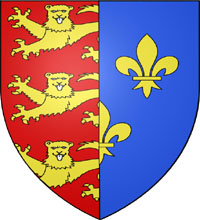Photographs of Castles in France
|
|
|
|||||||||
 |
Château d'Ainay-le-Vieil, Ainay-le-Vieil, Cher, France.
Built in the 14th century, this moated castle has been listed as a Monument historique since 1968 by the French Ministry of Culture. |
||||||||
 |
Château d'Ainay-le-Vieil Ainay-le-Vieil, Cher, France.
Built in the 14th century, the castle has been listed as a Monument historique since 1968 by the French Ministry of Culture. |
||||||||
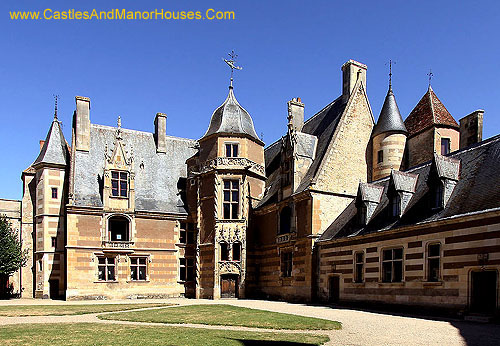 |
Château d'Ainay-le-Vieil Ainay-le-Vieil, Cher, France.
Built in the 14th century, the castle was listed as a Monument historique in 1968 by the French Ministry of Culture. |
||||||||
 |
Château d'Ainay-le-Vieil Ainay-le-Vieil, Cher, FRANCE.
Built in the 14th century, this moated castle has been listed as a Monument historique since 1968 by the French Ministry of Culture. |
||||||||
 |
|||||||||
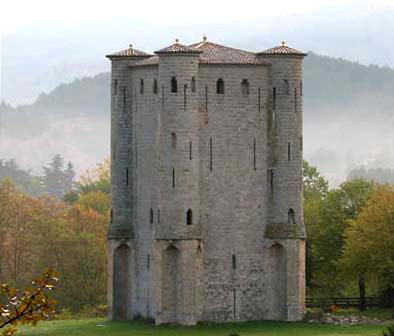 |
Donjon d'Arques Arques, Aude, Languedoc, FRANCE
often referred to as a CATHAR CASTLE |
||||||||
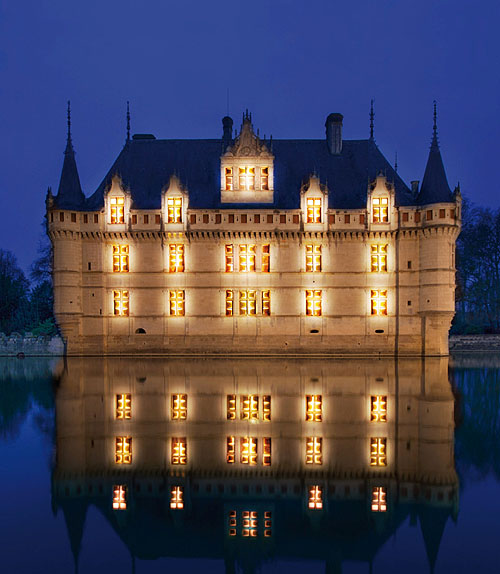 |
Château de Azay-le-Rideau Azay-le-Rideau, Chinon, Indre-et-Loire, Centre, FRANCE |
||||||||
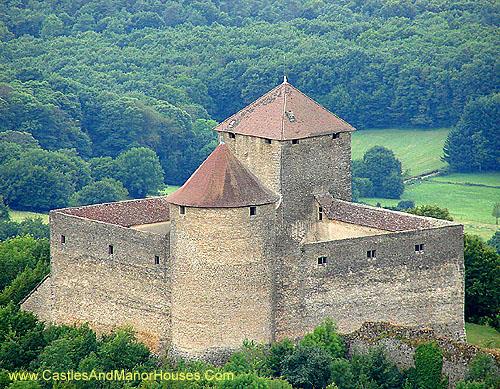 |
Château des Allymes Les Allymes, Ambérieu-en-Bugey, Ain, Rhône-Alpes, France.
The Château des Allymes is a thirteenth-century castle, rebuilt in the sixteenth century and restored in the nineteenth. It was built around 1310, overlooking the plain of Ain from a height of some 800 m, It is a typical medieval stone castle — a large stronghold, built with a commanding the plain below. The quadrangular enclosure of the castle is flanked by a large cylindrical donjon of the Roman type and by a round tower, the two connected by four curtain walls. The exterior features a large wall 90 metres long terminating in a lookout tower that once protected an adjoining town.
The Château des Allymes became French by the Treaty of Lyon in 1601 when King Henri IV attached Bugey to the Kingdom of France. At the time it was in a strategic military position as it was near the border with Savoy, then an independent state.
In 1960 the Château des Allymes was classed a monument historique. The roof and frame of the round tower were restored in 1977, the four curtain walls in 1984 and the barbican at the main entrance in 1991. |
||||||||
 |
Château d'Amboise Amboise, Indre-et-Loire département, France
The royal Château at Amboise is a fortress in the Loire Valley. Confiscated by the monarchy in the 15th century, it became a favoured royal residence and was extensively rebuilt. King Charles VIII died at the château in 1498 after hitting his head on a door lintel.
The château fell into decline from the second half of the 16th century and the majority of the interior buildings were later demolished. Some survived and have been restored, along with the outer defensive circuit of towers and walls.
It has been recognised as a monument historique by the French Ministry of Culture since 1840. |
||||||||
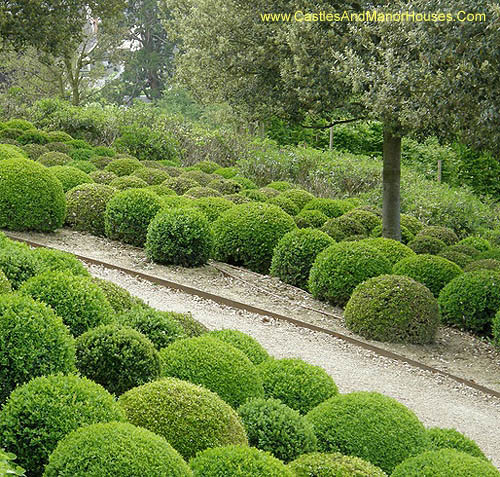 |
Château d'Amboise Amboise, Indre-et-Loire département, France
The royal Château at Amboise is a fortress in the Loire Valley. Confiscated by the monarchy in the 15th century, it became a favoured royal residence and was extensively rebuilt. King Charles VIII died at the château in 1498 after hitting his head on a door lintel.
The château fell into decline from the second half of the 16th century and the majority of the interior buildings were later demolished. Some survived and have been restored, along with the outer defensive circuit of towers and walls.
It has been recognised as a monument historique by the French Ministry of Culture since 1840. |
||||||||
 |
Château d'Amboise Amboise, Indre-et-Loire département, France
The royal Château at Amboise is a fortress in the Loire Valley. Confiscated by the monarchy in the 15th century, it became a favoured royal residence and was extensively rebuilt. King Charles VIII died at the château in 1498 after hitting his head on a door lintel.
The château fell into decline from the second half of the 16th century and the majority of the interior buildings were later demolished. Some survived and have been restored, along with the outer defensive circuit of towers and walls.
It has been recognised as a monument historique by the French Ministry of Culture since 1840. |
||||||||
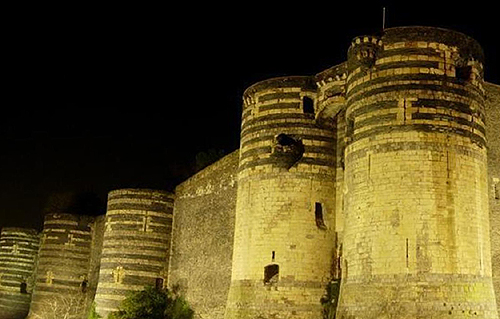 |
Château d'Angers Angers, Loire Valley, Maine-et-Loire, France.
The Château d'Angers was founded in the 9th century by the Counts of Anjou. It was expanded to its current size in the 13th century. It is strategically located by the river Maine. Open to the public, the Château d'Angers is home of the Apocalypse Tapestry. |
||||||||
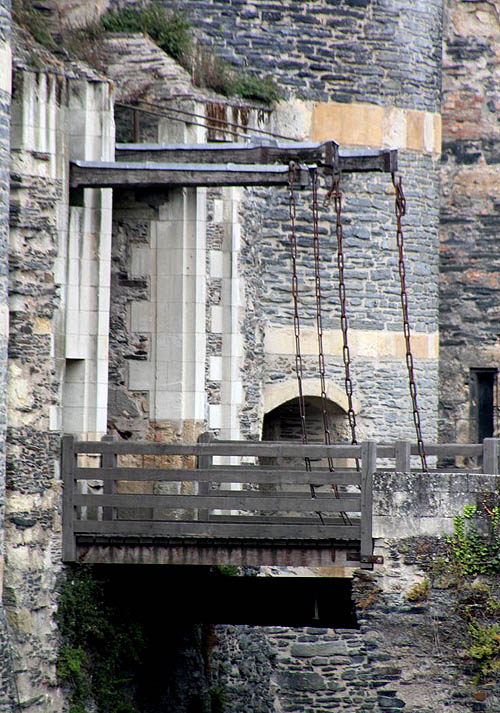 |
Château d'Angers Angers, Loire Valley, Maine-et-Loire, France.
The Château d'Angers was founded in the 9th century by the Counts of Anjou. It was expanded to its current size in the 13th century. It is strategically located by the river Maine. Open to the public, the Château d'Angers is home of the Apocalypse Tapestry.
Photo shows a spectacular drawbridge controlling entry. |
||||||||
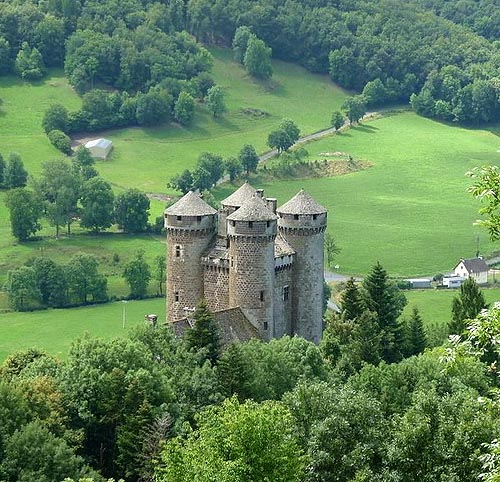 |
Château d'Anjony, Tournemire, Cantal département, Auvergne, France
The Château d'Anjony is known in Occitan as the Chastèl d'En Jòni, (the Castle of Lord Jòni). It is built of reddish basal
] It is located in a strategic position on the Tournemire promontory and dominates the rich landscape of the Doire valley with its four tall towers.
The castle and its estate are classified as a monument historique by the French Ministry of Culture. |
||||||||
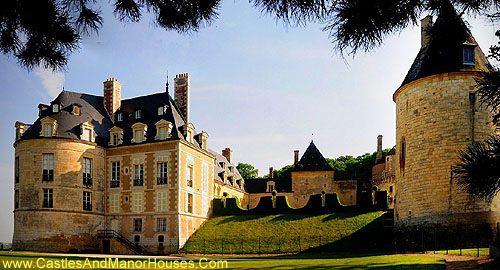 |
Château d'Apremont, Apremont-sur-Allier, Cher, Centre, France.
Château d'Apremont overlooks the River Allier. It lies on the limits of Berry. Not much remains of the great Anglo-Burgundian fortress with its 14 towers dating from the fifteenth century.
The Château was classified as as a monument historique in 1989. |
||||||||
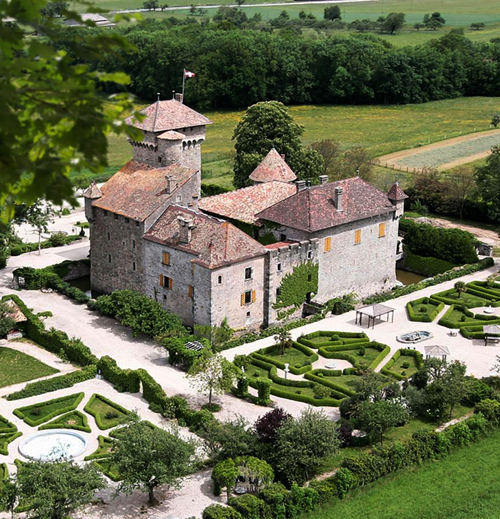 |
château d'Avully, Brenthonne, Haute-Savoie, Rhône-Alpes, France.
château d'Avully dates from the fourteenth century.
It has been classified as a monument historique since 1974 |
||||||||
 |
Château de Azay-le-Rideau Azay-le-Rideau, Chinon, Indre-et-Loire, Centre, France |
||||||||
 |
Château de Azay-le-Rideau Azay-le-Rideau Chinon Indre-et-Loire, Centre France |
||||||||
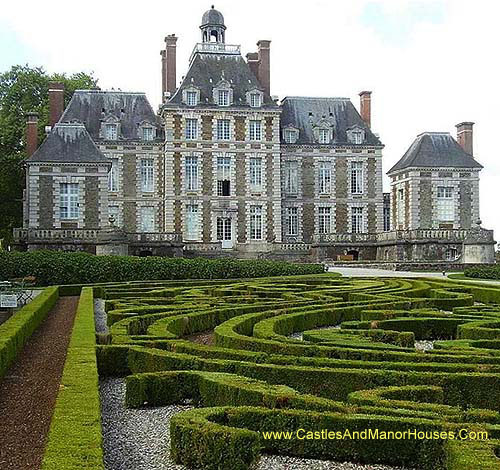 |
Château de Balleroy Balleroy, Calvados, Basse-Normandie, France
The château was built from 1626 to 1636 by Jean II de Choisy
It is classified as a monument historique since 1951. |
||||||||
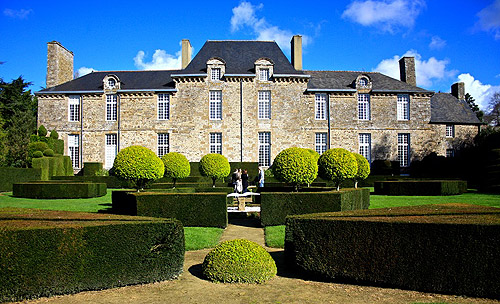 |
Château de la Balue La Balue, 35560 Bazouges-la-Pérouse, France
The 17th century château stands between Saint-Malo and Mont-Saint-Michel, in a landscape of rolling hills and forests, and not far from the Atlantic coastline. It is a French historical monument known for its beautiful gardens and for the many literary celebrities who have stayed there. |
||||||||
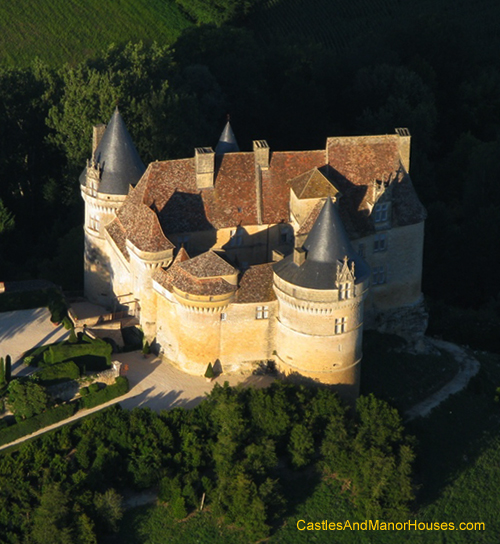 |
Château de Bannes Beaumont-du-Périgord, Dordogne, Aquitaine, France.
Built between 1498 and 1519. |
||||||||
 |
|||||||||
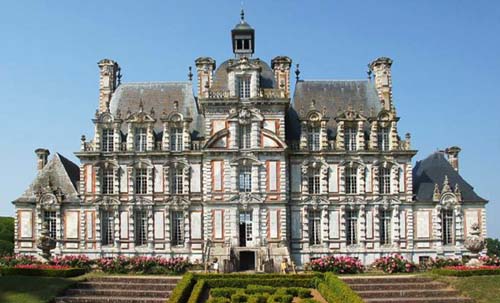 |
Château de Beaumesnil Beaumesnil, Normandy, France.
Château de Beaumesnil is a 17th-century Louis XIII baroque style château built on the site of a medieval castle of the same name (and retaining its moat).
It is now an historical monument of France. |
||||||||
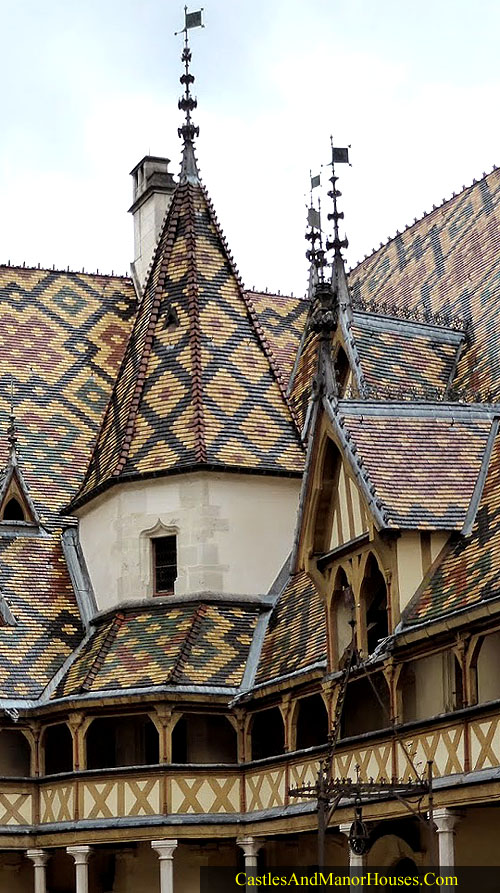 |
The Hospices de Beaune or Hôtel-Dieu de Beaune Beaune, Burgundy, France.
The Hôtel-Dieu de Beaune is a former charitable almshouse founded in 1443 by Nicolas Rolin, chancellor of Burgundy, as a hospital for the poor. The original hospital building, one of the finest surviving examples of Burgundian fifteenth-century architecture, is now a museum. |
||||||||
 |
Fort de Bellegarde Le Perthus Pyrénées-Orientales France |
||||||||
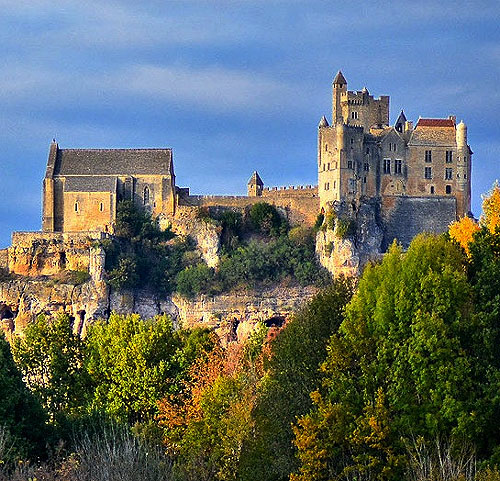 |
Château de Beynac Beynac-et-Cazenac Dordogne France. |
||||||||
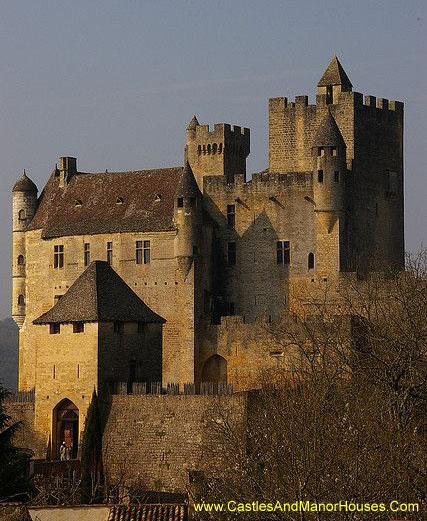 |
Château de Beynac, Beynac-et-Cazenac, Dordogne, France.
The castle is one of the best-preserved and best known in the Dordogne, perched on top of a limestone cliff, dominating the town and the north bank of the Dordogne River
The castle was built in the 12th century by the barons of Beynac (one of the four baronies of Périgord) to control the valley of the Dordogne River.
The sheer cliff face was sufficient to discourage any assault from that side, so the defences were concentrated on the plateau on the other side. They included double crenellated walls, double moats,and a double barbican. |
||||||||
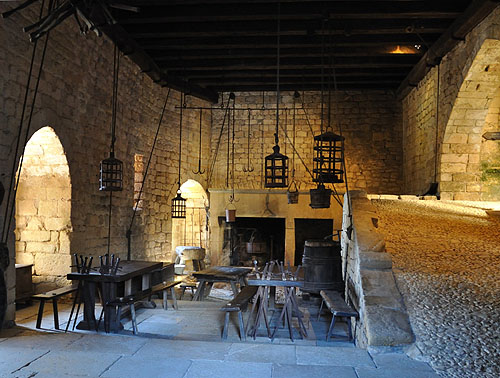 |
Château de Beynac, Beynac-et-Cazenac, Dordogne, France.
The castle is one of the best-preserved and best known in the Dordogne, perched on top of a limestone cliff, dominating the town and the north bank of the Dordogne River
The castle was built in the 12th century by the barons of Beynac (one of the four baronies of Périgord) to control the valley of the Dordogne River.
The sheer cliff face was sufficient to discourage any assault from that side, so the defences were concentrated on the plateau on the other side. They included double crenellated walls, double moats,and a double barbican. |
||||||||
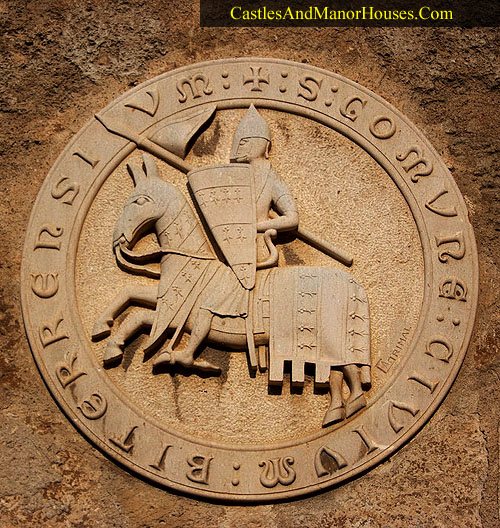 |
Trencavel seal reproduced on the exterior wall of the Church of Saint Mary Magdalene, Béziers, Aude, Languedoc, France
Béziers is the site of a disappeared CATHAR CASTLE.
In 1209, at the bidding of Pope Innocent III, a crusader army from France made its way down the Rhône Valley to the Languedoc. Its purpose was to exterminate a the Cathars. The Crusaders’ first major engagement, on 24 July 1209, was the siege of the town of Béziers, a county capital of Raymond Roger Trencavel, Viscount of Carcassonne and Béziers. The Crusader army was led by a papal legate, Arnaud Amaury, Abbot of Cîteaux. Arnaud was asked how the crusaders should distinguish Cathars from Catholics, in order to spare Catholics. He allegedly gave the reply “Kill them all. God will Know His Own”. According to a number of sources, all the citizens of Béziers, Cathars and Catholics alike, were then massacred by the crusader army.
Nothing remains of the Viscount’s castle here, nor the city walls, but the Cathedral and the Church of Saint Mary Magdalene still stand. Some 7000 people - men, women and children - were killed inside the church by Arnaud’s crusaders. |
||||||||
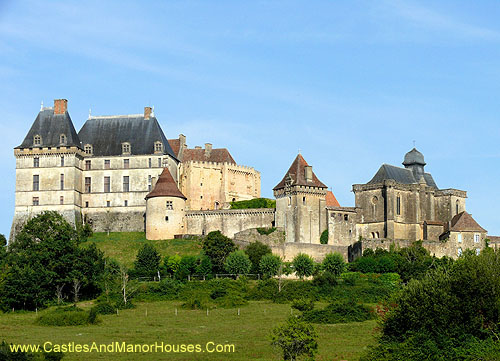 |
Château de Biron, Biron, Dordogne, France
The Château de Biron is a large castle in the valley of the Lède. It was the castle from which the Gontaut-Biron took their name. It was their seat from the twelfth century. Biron was seized by Simon IV de Montfort in 1212 from forces sypathetic to the Cathars.
The Plantagenets held it at times during the 14th and 15th centuries. Biron was erected as a duché-pairie in 1598, for Charles de Gontaut, created duc de Biron.
The present château bears additions over the centuries: notably a twelfth-century keep and sixteenth-century living quarters and vaulted kitchens.
Since 1928, it has been listed as a monument historique by the French Ministry of Culture. The local commune purchased the Château de Biron in 1978, with a view to restoring it as a tourist attraction. |
||||||||
 |
The Château de Biron, Biron, Dordogne, France The Château de Biron Biron, Dordogne, FRANCE
The Château de Biron is a large castle in the valley of the Lède. This photograph shows just one small tower.
It was the castle from which the Gontaut-Biron took their name. It was their seat from the twelfth century. Biron was seized by Simon IV de Montfort in 1212 from forces sypathetic to the Cathars.
The Plantagenets held it at times during the 14th and 15th centuries. Biron was erected as a duché-pairie in 1598, for Charles de Gontaut, created duc de Biron.
The present château bears additions over the centuries: notably a twelfth-century keep and sixteenth-century living quarters and vaulted kitchens.
Since 1928, it has been listed as a monument historique by the French Ministry of Culture. The local commune purchased the Château de Biron in 1978, with a view to restoring it as a tourist attraction. |
||||||||
 |
The Château de Biron Biron, Dordogne, France
The Château de Biron is a large castle in the valley of the Lède. This photograph shows just one small tower.
It was the castle from which the Gontaut-Biron took their name. It was their seat from the twelfth century. Biron was seized by Simon IV de Montfort in 1212 from forces sypathetic to the Cathars.
The Plantagenets held it at times during the 14th and 15th centuries. Biron was erected as a duché-pairie in 1598, for Charles de Gontaut, created duc de Biron.
The present château bears additions over the centuries: notably a twelfth-century keep and sixteenth-century living quarters and vaulted kitchens.
Since 1928, it has been listed as a monument historique by the French Ministry of Culture. The local commune purchased the Château de Biron in 1978, with a view to restoring it as a tourist attraction. |
||||||||
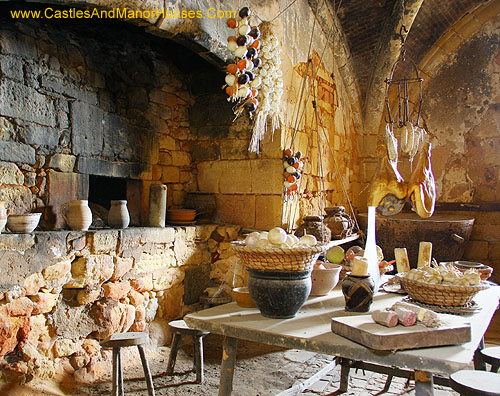 |
Kitchen, The Château de Biron, Biron, Dordogne, France
The Château de Biron is a large castle in the valley of the Lède. It was the castle from which the Gontaut-Biron took their name. It was their seat from the twelfth century. Biron was seized by Simon IV de Montfort in 1212 from forces sypathetic to the Cathars.
The Plantagenets held it at times during the 14th and 15th centuries. Biron was erected as a duché-pairie in 1598, for Charles de Gontaut, created duc de Biron.
The present château bears additions over the centuries: notably a twelfth-century keep and sixteenth-century living quarters and vaulted kitchens.
Since 1928, it has been listed as a monument historique by the French Ministry of Culture. The local commune purchased the Château de Biron in 1978, with a view to restoring it as a tourist attraction. |
||||||||
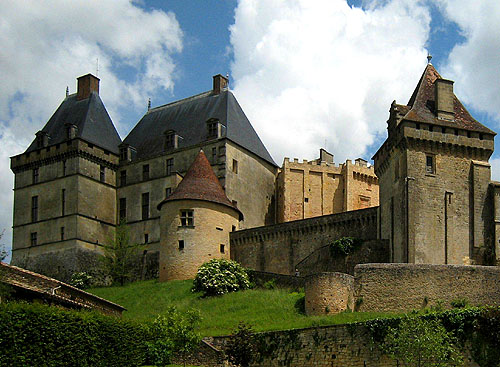 |
The Château de Biron, Biron, Dordogne, France
The Château de Biron is a large castle in the valley of the Lède. This photograph shows just one small tower.
It was the castle from which the Gontaut-Biron took their name. It was their seat from the twelfth century. Biron was seized by Simon IV de Montfort in 1212 from forces sypathetic to the Cathars.
The Plantagenets held it at times during the 14th and 15th centuries. Biron was erected as a duché-pairie in 1598, for Charles de Gontaut, created duc de Biron.
The present château bears additions over the centuries: notably a twelfth-century keep and sixteenth-century living quarters and vaulted kitchens.
Since 1928, it has been listed as a monument historique by the French Ministry of Culture. The local commune purchased the Château de Biron in 1978, with a view to restoring it as a tourist attraction. |
||||||||
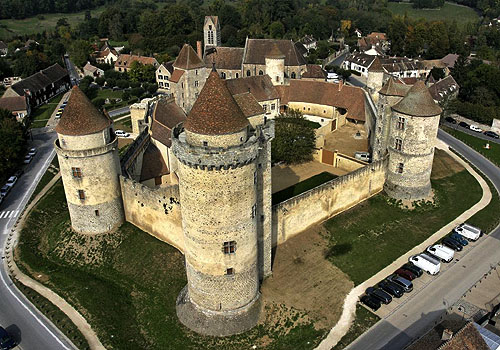
|
Château de Blandy-les-Tours Blandy-les-Tours, Seine-et-Marne, France
The Château de Blandy-les-Tours was mentioned in a text in 1216. It belonged to Adam II de Chailly, Viscount of Melun. It consisted of a simple manor and chapel, the only construction made of stone. The site was previously a Merovingian necropolis.
In the 14th century, the castle was strongly modified with new fortifications and structures of defence. A moat was dug and a new gate-tower with a drawbridge was included in the enclosing wall. |
||||||||
 |
Château de Blandy-les-Tours Blandy-les-Tours, Seine-et-Marne, France
(photo shows just one tour)
The Château de Blandy-les-Tours was mentioned in a text in 1216. It belonged to Adam II de Chailly, Viscount of Melun. It consisted of a simple manor and chapel, the only construction made of stone. The site was previously a Merovingian necropolis.
In the 14th century, the castle was modified with new fortifications and structures of defence. A moat was dug and a new gate-tower with a drawbridge was included in the enclosing wall. |
||||||||
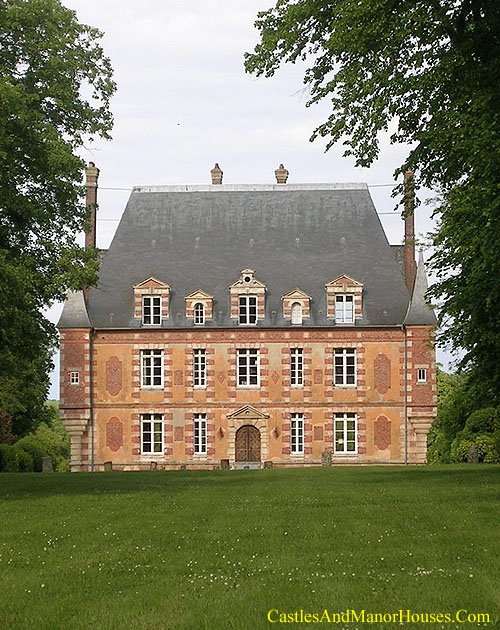 |
Château Boisset-les-Prévanches Boisset-les-Prévanches, Eure, Haute-Normandie, France |
||||||||
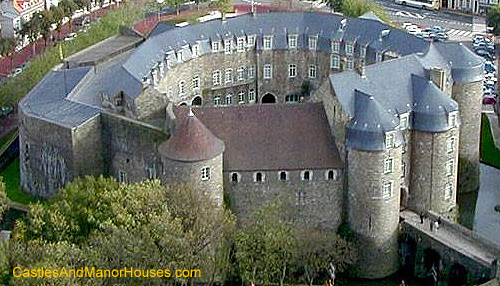 |
Château de Boulogne sur Mer Boulogne-sur-Mer, Pas-de-Calais, France
The castle was built in the 13th century by Philippe Hurepel (1180-1234), count of Boulogne and son of Philip II of France. It houses the Boulogne museum. |
||||||||
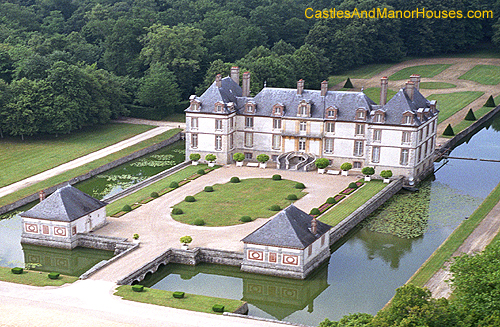 |
The Château de Bourron Bourron-Marlotte, Seine-et-Marne, France. |
||||||||
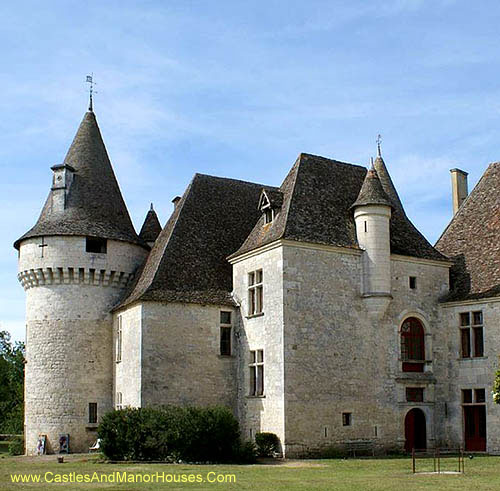 |
Château de Bridoire Dordogne, Aquitane, France.
A castle was built here before the 12th century. North, south and west sides are protected by steep rock. To the east, a gap between the castle and the plateau was crossed by a drawbridge. In the 16th century, the drawbridge was replaced by a stone arched bridge. |
||||||||
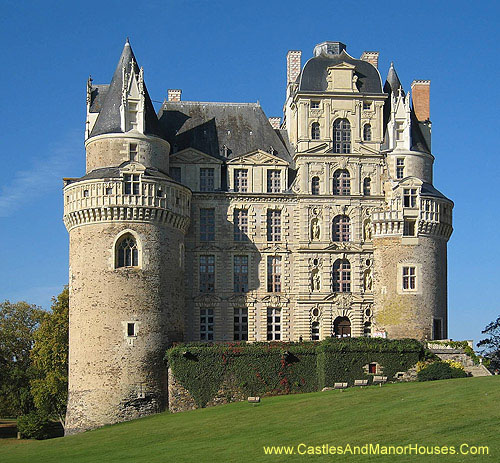 |
The Château de Brissac Brissac-Quincé Maine-et-Loire France |
||||||||
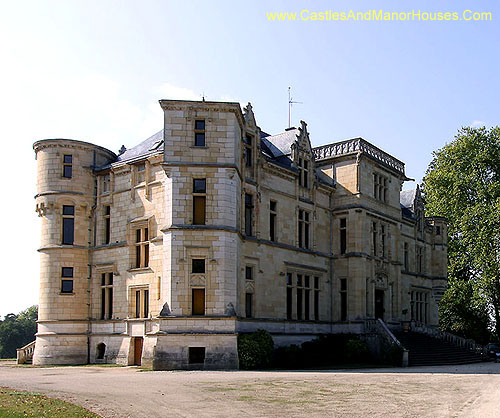 |
Château de la Brosse Farges-Allichamps, Cher, Centre, France
The history of the château dates back to the thirteenth century Its parc is subject to protection as a historic monument. |
||||||||
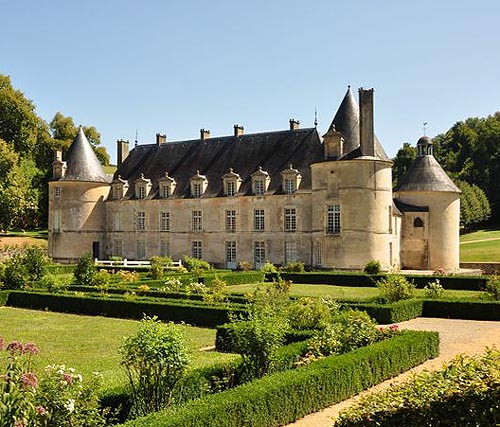 |
Castle of Bussy Rabutin, Bussy-le-Grand, Côte-d'Or department, Bourgogne, France
The Château de Bussy-Rabutin, also known as Château de Bussy-le-Grand, developed from a 12th-century castle,
The castle was founded by Renaudin de Bussy. It was rebuilt in the 14th century, and the Renaissance galleries were added in the 1520s. It was altered during the reigns of Henri II (1547–1559) and Louis XIII (1610–1643). |
||||||||
 |
|||||||||
 |
Cité, Carcassonne, Languedoc, France.
The largest surviving medieval walled city in Europe. Inside is the Château Comtal, the Castle of Raymond Roger Trencavel, Viscount of Carcassonne, Béziers, Albi and the Razès. He died in his own prison here in 1209, aged 24, after being taken prisoner while under a safe-conduct from the Cistercian Abbot Arnaud Amaury the papal legate and military leader of the Albigensian Crusade who was besieging Carcassonne (and who then appointed Simon de Montfort as military leader of the crusade). |
||||||||
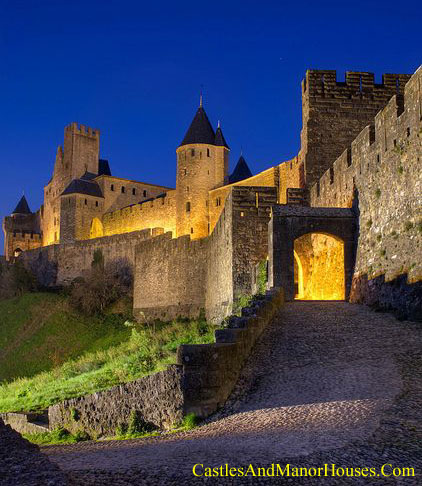 |
The Aude Gate, Cité, Carcassonne, Languedoc, France.
Just inside this gate was the thirteenth century house of the Dominican Inquisitors - there’s a plaque on the house. Outside the gate was the “Wall” the Inquisitors’ prison where people were imprisoned in dark, cold, damp conditions, chained up and without sanitation, living on stale bread and filthy water, often until they died.
Carcassonne is the largest surviving medieval walled city in Europe. Inside is the Château Comtal, the Castle of Raymond Roger Trencavel, Viscount of Carcassonne, Béziers, Albi and the Razès. He died in his own prison here in 1209, aged 24, after being taken prisoner while under a safe-conduct from the Cistercian Abbot Arnaud Amaury the papal legate and military leader of the Albigensian Crusade who was besieging Carcassonne (and who then appointed Simon de Montfort as military leader of the crusade). |
||||||||
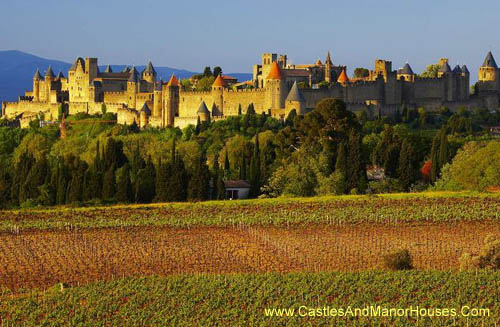 |
Cité de Carcassonne, Languedoc, France.
The Castrum of Raymond Roger Trencavel, Viscount of Carcassonne, Béziers, Albi and the Razès. He died in his own prison here in 1209, aged 24, after being taken prisoner while under a safe-conduct from the Cistercian Abbot Arnaud Amaury the papal legate and military leader of the Albigensian Crusade who was besieging Carcassonne (and who then appointed Simon de Montfort as military leader of the crusade).
Castrum = Cité + château Comtal
UNESCO World Heritage Site |
||||||||
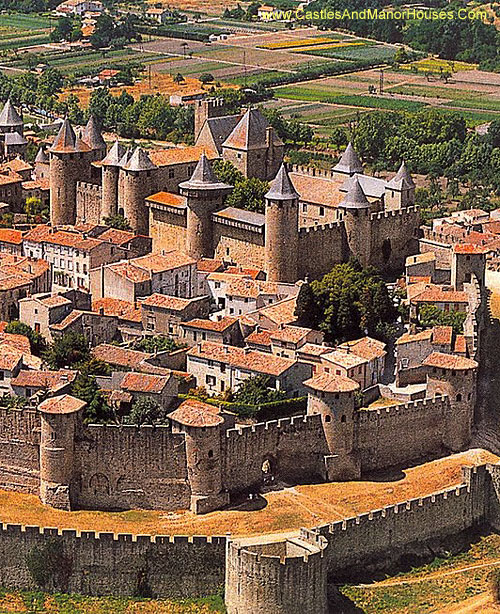 |
Château Comtal, Carcassonne, Languedoc, France.
The Castle of Raymond Roger Trencavel, Viscount of Carcassonne, Béziers, Albi and the Razès. He died in his own prison here in 1209, aged 24, after being taken prisoner while under a safe-conduct from the Cistercian Abbot Arnaud Amaury the papal legate and military leader of the Albigensian Crusade who was besieging Carcassonne (and who then appointed Simon de Montfort as military leader of the crusade). Carcassonne, Languedoc, France.
UNESCO World Heritage Site |
||||||||
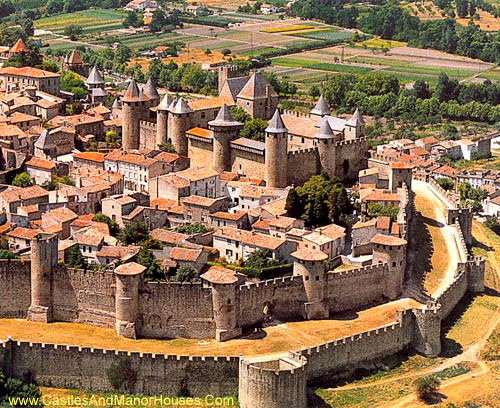 |
Château Comtal, Carcassonne, Languedoc, France.
The Castle of Raymond Roger Trencavel, Viscount of Carcassonne, Béziers, Albi and the Razès. He died in his own prison here in 1209, aged 24, after being taken prisoner while under a safe-conduct from the Cistercian Abbot Arnaud Amaury the papal legate and military leader of the Albigensian Crusade who was besieging Carcassonne (and who then appointed Simon de Montfort as military leader of the crusade). |
||||||||
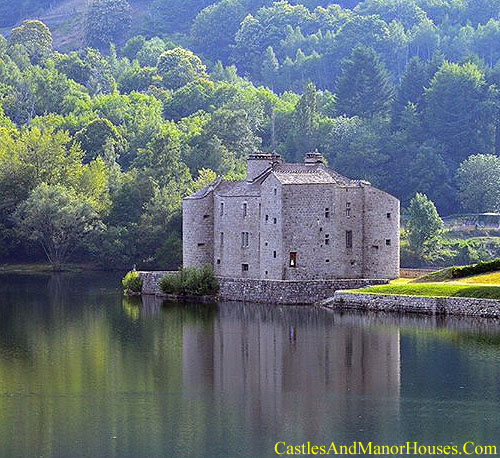 |
Château de Castanet Pourcharesses, Lozère, France.
The territory of Castanet has its origin in the name (chestnut) in Occitan. It is the most common tree in the territory. The castle is next to the lake of Villefort, an artificial lake created behind a dam. |
||||||||
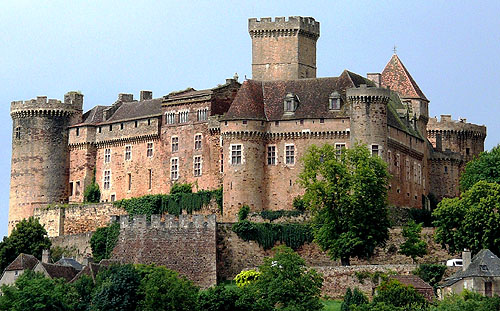 |
Château de Castelnau-Bretenoux Prudhomat, Lot, Quercy, France
Construction began about 1100, under Hugues, baron of Castelnau, who built a wall around his manor. He was the ancestor of the powerful dynasty of Castelnau, who owned a rich and prosperous region and were vassals of the Counts of Toulouse. |
||||||||
 |
Château de Castelnau-Bretenoux Prudhomat, Lot, Quercy, France
Construction began about 1100, under Hugues, Baron of Castelnau, who built a wall around his manor. He was the ancestor of the powerful dynasty of Castelnau, who owned a rich and prosperous region and were vassals of the Counts of Toulouse. |
||||||||
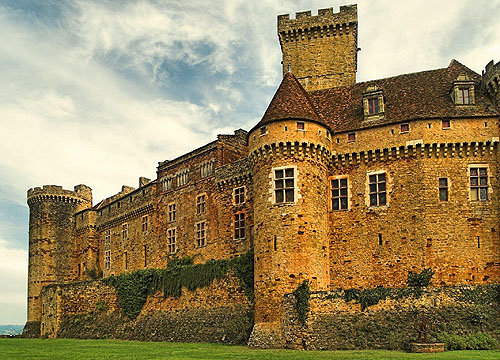 |
Château de Castelnau-Bretenoux Prudhomat, Lot, Quercy, France
Construction began about 1100, under Hugues, baron of Castelnau, who built a wall around his manor. He was the ancestor of the powerful dynasty of Castelnau, who owned a rich and prosperous region and were vassals of the Counts of Toulouse. |
||||||||
 |
Château de Caussade Trélissac, Périgueux, Dordogne, Aquitaine, France.
The Château de Caussade is a small polygonal fortress surrounded by a dry moat, located in the vallée de l’Isle, in the forêt de Lanmary.
It held great strategic importance in the twelfth century. From the Twelfth to the Fourteenth century it was the property of VIigier family, a daughter of the family became the wife of the famous troubadour, Bertran de Born. |
||||||||
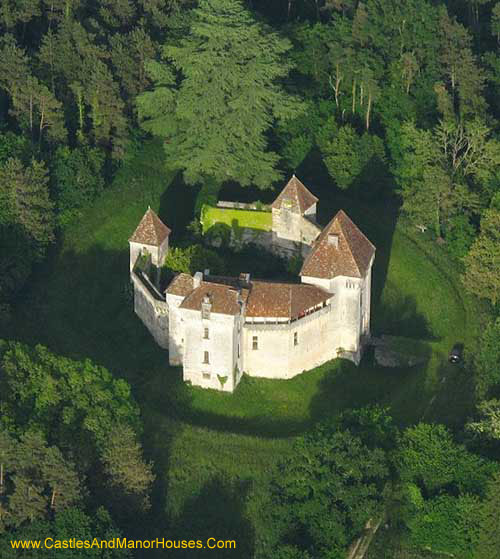 |
Château de Caussade Trélissac, Périgueux, Dordogne, Aquitaine, France.
The Château de Caussade is a small polygonal fortress surrounded by a dry moat, located in the vallée de l’Isle, in the forêt de Lanmary.
It held great strategic importance in the twelfth century. From the Twelfth to the Fourteenth century it was the property of VIigier family, a daughter of the family became the wife of the famous troubadour, Bertran de Born. |
||||||||
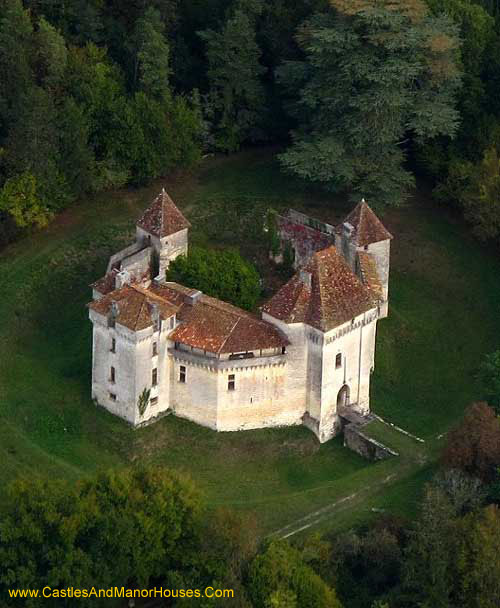 |
Château de Caussade Trélissac, Périgueux, Dordogne, Aquitaine, France.
The Château de Caussade is a small polygonal fortress surrounded by a dry moat, located in the vallée de l’Isle, in the forêt de Lanmary.
It held great strategic importance in the twelfth century. From the Twelfth to the Fourteenth century it was the property of VIigier family, a daughter of the family became the wife of the famous troubadour, Bertran de Born. |
||||||||
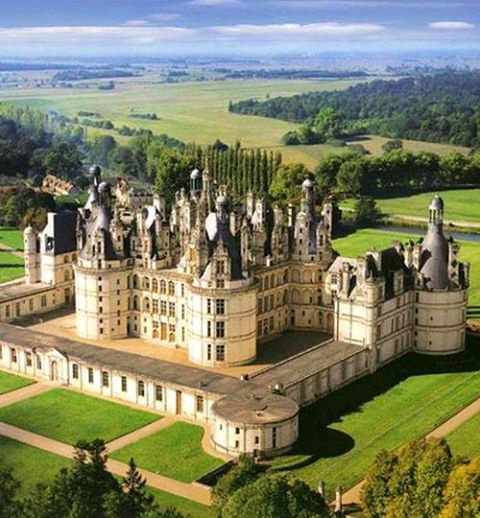 |
The Royal Château de Chambord Chambord, Loir-et-Cher, France
The building, which was never completed, was constructed by King Francis I of France. The royal Château de Chambord is one of the most recognizable châteaux in the world because of its distinctive French Renaissance architecture which blends traditional French medieval forms with classical Renaissance structures.
Chambord was built to serve as a hunting lodge for Francis I, who maintained royal residences at the châteaux of Blois and Amboise |
||||||||
 |
The Royal Château de Chambord Chambord, Loir-et-Cher, France
The building, which was never completed, was constructed by King Francis I of France. The royal Château de Chambord is one of the most recognizable châteaux in the world because of its distinctive French Renaissance architecture which blends traditional French medieval forms with classical Renaissance structures.
Chambord was built to serve as a hunting lodge for Francis I, who maintained royal residences at the châteaux of Blois and Amboise. |
||||||||
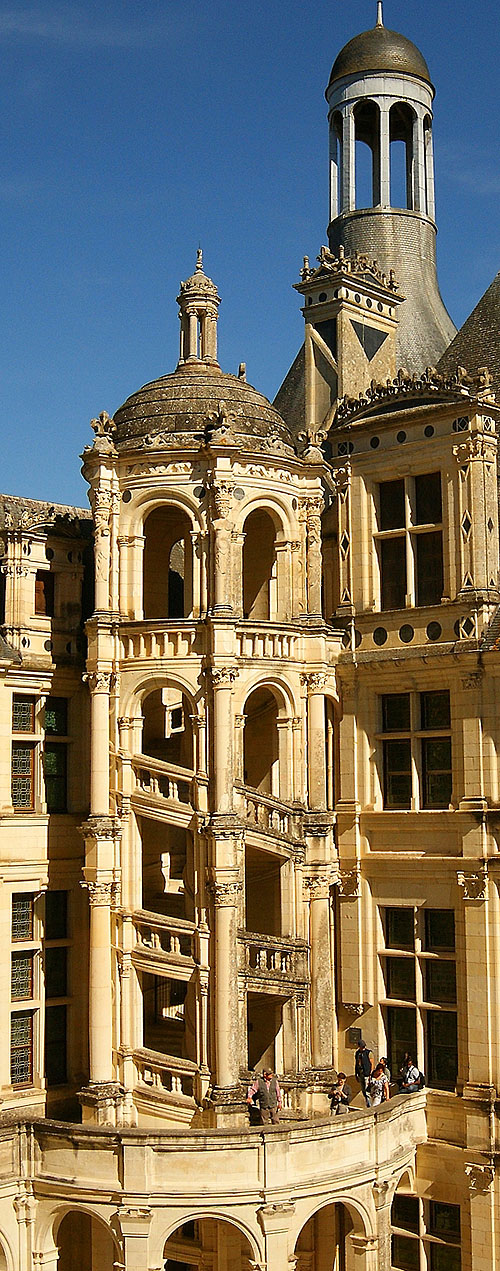 |
Spiral staircase The Royal Château de Chambord Chambord, Loir-et-Cher, France
The building, which was never completed, was constructed by King Francis I of France. The royal Château de Chambord is one of the most recognizable châteaux in the world because of its distinctive French Renaissance architecture which blends traditional French medieval forms with classical Renaissance structures.
Chambord was built to serve as a hunting lodge for Francis I, who maintained royal residences at the châteaux of Blois and Amboise. |
||||||||
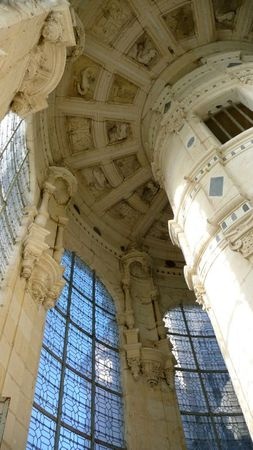 |
The Royal Château de Chambord Chambord, Loir-et-Cher, France
The building, which was never completed, was constructed by King Francis I of France. The royal Château de Chambord is one of the most recognizable châteaux in the world because of its distinctive French Renaissance architecture which blends traditional French medieval forms with classical Renaissance structures.
Chambord was built to serve as a hunting lodge for Francis I, who maintained royal residences at the châteaux of Blois and Amboise.
|
||||||||
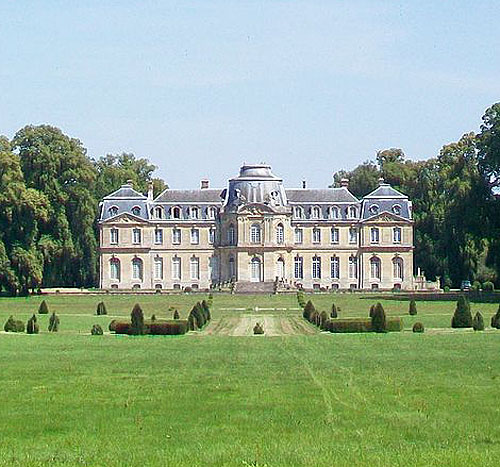 |
Château de Champlâtreux, Epinay-Champlâtreux, Val-d’Oise, Île-de-Franc, France.
Le château de Champlâtreux was built between 1751 et 1757 by the architect Jean-Michel Chevotet.
It is classified as a Monument Historique |
||||||||
 |
Château de Champlâtreux Epinay-Champlâtreux, Val-d’Oise, Île-de-France, France.
The Château de Champlâtreux was built between 1751 and 1757 by the architect Jean-Michel Chevotet.
It is classified as a Monument Historique |
||||||||
 |
Château de Champs Champs-sur-Marne, Seine-et-Marne, Île-de-France, France
The Château de Champs was built in its present form in 1699 for the treasurer Charles Renouard de la Touaneby by Pierre Bullet, architecte du roi.
Around 1750, a beautiful rococo salon chinois (Chinese salon) was added to the château with wall paintings by noted artist Christophe Huet.
Louis César entertained many of famous writers here, including Diderot, Voltaire, d'Alembert and François-Augustin de Paradis de Moncrif. |
||||||||
 |
The Château de Chantilly, Chantilly, France.
The site comprises two attached buildings : the Petit Château built around 1560 for Anne de Montmorency, and the Grand Château, which was destroyed during the French Revolution and rebuilt in the 1870s.
Owned by the Institut de France, the château houses the Musée Condé, a public art galleriy. |
||||||||
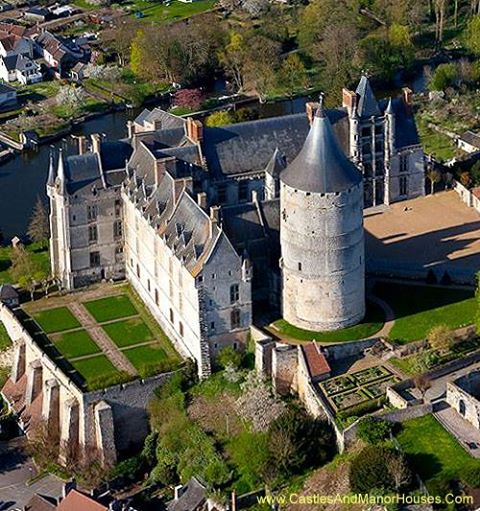 |
The Château de Châteaudun Châteaudun, Eure-et-Loir, France.
The château overlooks the Loir river. Perched on a limestone outcrop, it retains evidence its origins as a 12th-century castle. Converted by Jean de Dunois during the Renaissance into a comfortable residence, the main body of the building is roofed in the gothic style.
The castle was built between the 12th and 16th centuries. The Count of Blois Thibaut V had the keep built around 1170. Jehan de Dunois, the bâtard d'Orléans (Bastard of Orléans), built the west wing (the "aile Dunois") between 1459 and 1468. François I of Orléans-Longueville began construction of the north wing (the "aile Longueville") between 1469 and 1491. The upper floors were added by François II d'Orléans-Longueville and his descendants during the first quarter of the 16th century.
Renovated in the 1930s, the castle has been classed as a monument historique since 1918. |
||||||||
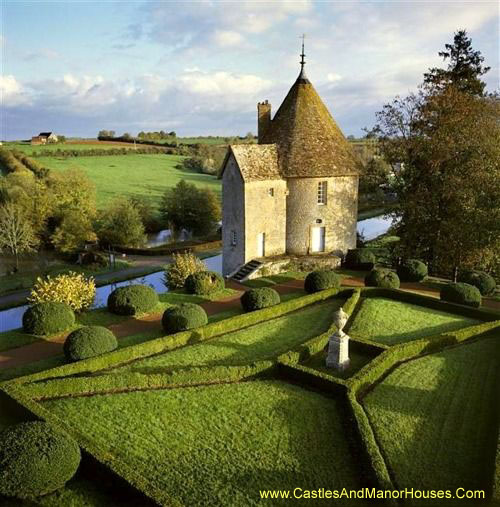 |
Château de Chatillon, Châtillon-en-Bazois, Nièvre, Burgundy, France. |
||||||||
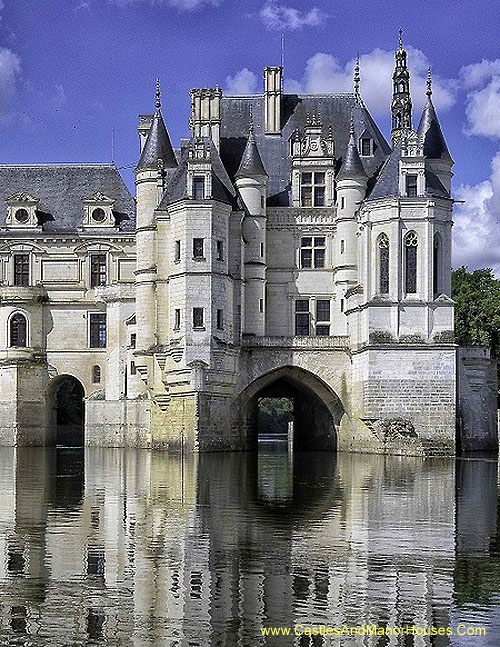 |
Château de Chenonceau Chenonceau, Indre-et-Loire, France
The estate of Chenonceau is first mentioned in writing in the 11th century. The current château was built in 1514–1522 on the foundations of an old mill and was later extended to span the river.
The bridge over the river was built (1556-1559) to designs by the French Renaissance architect Philibert de l'Orme, and the gallery on the bridge (1570–1576) to designs by Jean Bullant
The château has been classified as a Monument historique since 1840 by the French Ministry of Culture. It is one of the most famous Loire Valley châteaux. |
||||||||
 |
|||||||||
 |
Château de Chenonceau Chenonceau, Indre-et-Loire, France
The estate of Chenonceau is first mentioned in writing in the 11th century. The current château was built in 1514–1522 on the foundations of an old mill and was later extended to span the river.
The bridge over the river was built (1556-1559) to designs by the French Renaissance architect Philibert de l'Orme, and the gallery on the bridge (1570–1576) to designs by Jean Bullant
The château has been classified as a Monument historique since 1840 by the French Ministry of Culture. It is one of the most famous Loire Valley châteaux. |
||||||||
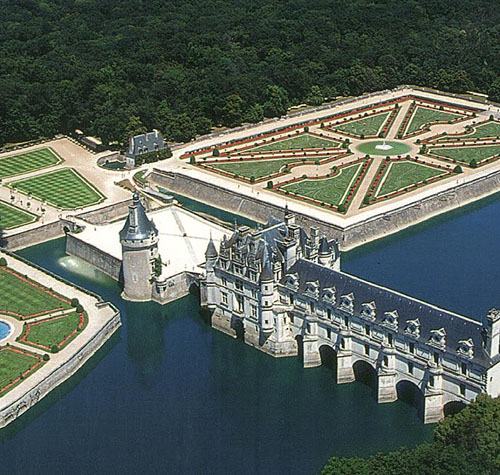 |
Château de Chenonceau Chenonceau, Indre-et-Loire, France
The estate of Chenonceau is first mentioned in writing in the 11th century. The current château was built in 1514–1522 on the foundations of an old mill and was later extended to span the river.
The bridge over the river was built (1556-1559) to designs by the French Renaissance architect Philibert de l'Orme, and the gallery on the bridge (1570–1576) to designs by Jean Bullant
The château has been classified as a Monument historique since 1840 by the French Ministry of Culture. It is one of the most famous Loire Valley châteaux. |
||||||||
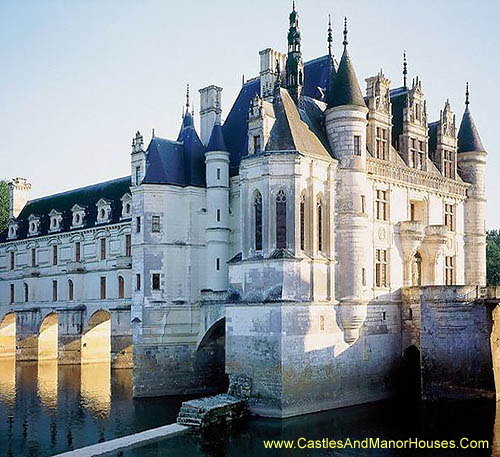 |
Château de Chenonceau Chenonceau, Indre-et-Loire, France
The estate of Chenonceau is first mentioned in writing in the 11th century. The current château was built in 1514–1522 on the foundations of an old mill and was later extended to span the river.
The bridge over the river was built (1556-1559) to designs by the French Renaissance architect Philibert de l'Orme, and the gallery on the bridge (1570–1576) to designs by Jean Bullant
The château has been classified as a Monument historique since 1840 by the French Ministry of Culture. It is one of the most famous Loire Valley châteaux. |
||||||||
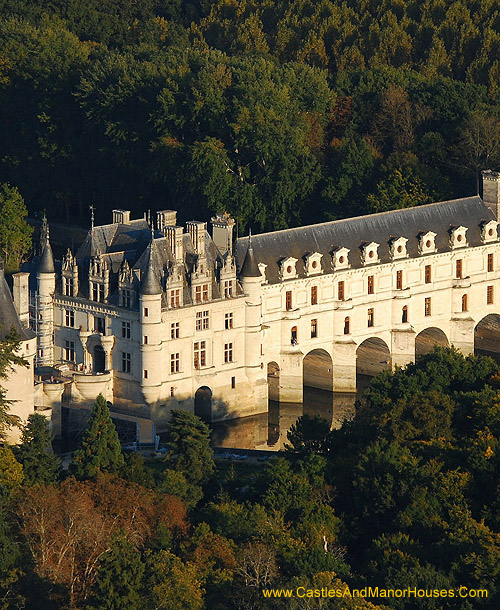 |
Château de Chenonceau Chenonceau, Indre-et-Loire, France
The estate of Chenonceau is first mentioned in writing in the 11th century. The current château was built in 1514–1522 on the foundations of an old mill and was later extended to span the river.
The bridge over the river was built (1556-1559) to designs by the French Renaissance architect Philibert de l'Orme, and the gallery on the bridge (1570–1576) to designs by Jean Bullant
The château has been classified as a Monument historique since 1840 by the French Ministry of Culture. It is one of the most famous Loire Valley châteaux. |
||||||||
 |
Château de Chenonceau Chenonceau, Indre-et-Loire, FRANCE
The estate of Chenonceau is first mentioned in writing in the 11th century. The current château was built in 1514–1522 on the foundations of an old mill and was later extended to span the river.
The bridge over the river was built (1556-1559) to designs by the French Renaissance architect Philibert de l'Orme, and the gallery on the bridge (1570–1576) to designs by Jean Bullant
The château has been classified as a Monument historique since 1840 by the French Ministry of Culture. It is one of the most famous Loire Valley châteaux. |
||||||||
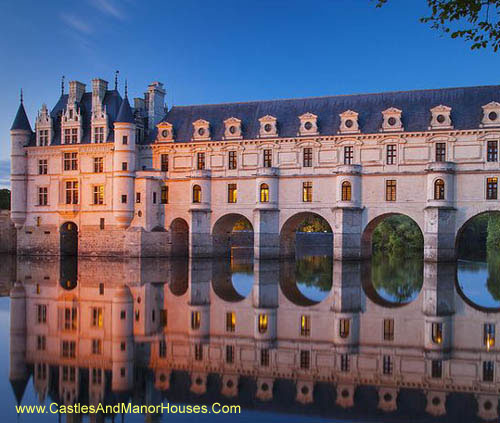 |
Château de Chenonceau Chenonceau, Indre-et-Loire, France
The estate of Chenonceau is first mentioned in writing in the 11th century. The current château was built in 1514–1522 on the foundations of an old mill and was later extended to span the river.
The bridge over the river was built (1556-1559) to designs by the French Renaissance architect Philibert de l'Orme, and the gallery on the bridge (1570–1576) to designs by Jean Bullant
The château has been classified as a Monument historique since 1840 by the French Ministry of Culture. It is one of the most famous Loire Valley châteaux. |
||||||||
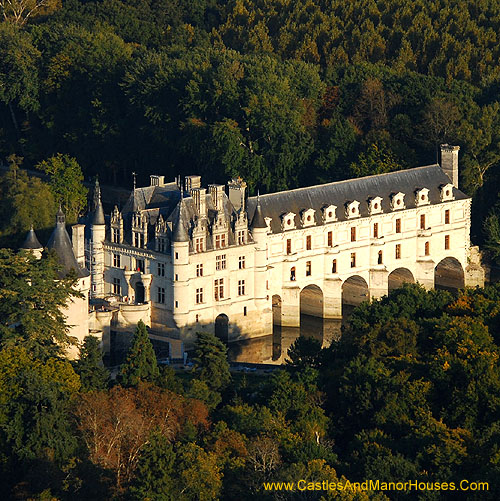 |
Château de Chenonceau Chenonceau, Indre-et-Loire, France
The estate of Chenonceau is first mentioned in writing in the 11th century. The current château was built in 1514–1522 on the foundations of an old mill and was later extended to span the river.
The bridge over the river was built (1556-1559) to designs by the French Renaissance architect Philibert de l'Orme, and the gallery on the bridge (1570–1576) to designs by Jean Bullant
The château has been classified as a Monument historique since 1840 by the French Ministry of Culture. It is one of the most famous Loire Valley châteaux. |
||||||||
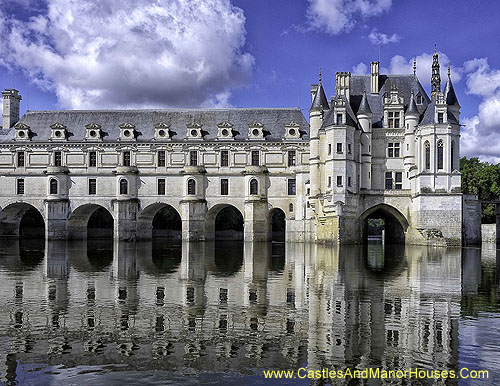 |
Château de Chenonceau Chenonceau, Indre-et-Loire, France
The estate of Chenonceau is first mentioned in writing in the 11th century. The current château was built in 1514–1522 on the foundations of an old mill and was later extended to span the river.
The bridge over the river was built (1556-1559) to designs by the French Renaissance architect Philibert de l'Orme, and the gallery on the bridge (1570–1576) to designs by Jean Bullant
The château has been classified as a Monument historique since 1840 by the French Ministry of Culture. It is one of the most famous Loire Valley châteaux. |
||||||||
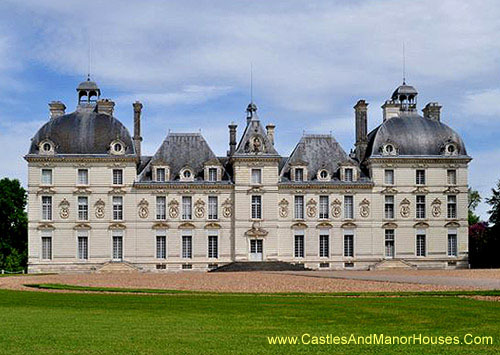 |
Château de Cheverny Cheverny, Loir-et-Cher, France.
Hergé used Cheverny, one of the châteaux of the Loire valley, as a model for his "Château de Moulinsart" (Marlinspike Hall in English) in his Tintin books. |
||||||||
 |
Château de Chissay Place Paul Boncour, 41400 Chissay-en-Touraine, Loir-et-Cher, France.
Situated between Montrichard and Chenonceaux, this former fortified castle was built under Charles the 7th for Pierre Bérard, chancellor of France. In 1543 Bérard sold the estate to the king's treasurer and superintendent of finance, for £16 690. The castle remained in the family, then passed into the hands of Duke of Choiseul until the eve of the revolution. Today it is an hotel. |
||||||||
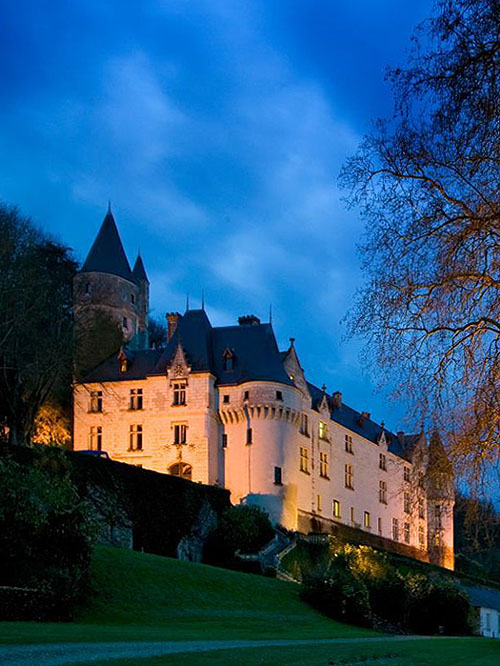 |
Château de Chissay 1 à 3 Place Paul Boncour, 41400 Chissay-en-Touraine, Loir-et-Cher, France.
Situated between Montrichard and Chenonceaux, this former fortified castle was built under Charles VII. Charles and Louis the XI both stayed here. |
||||||||
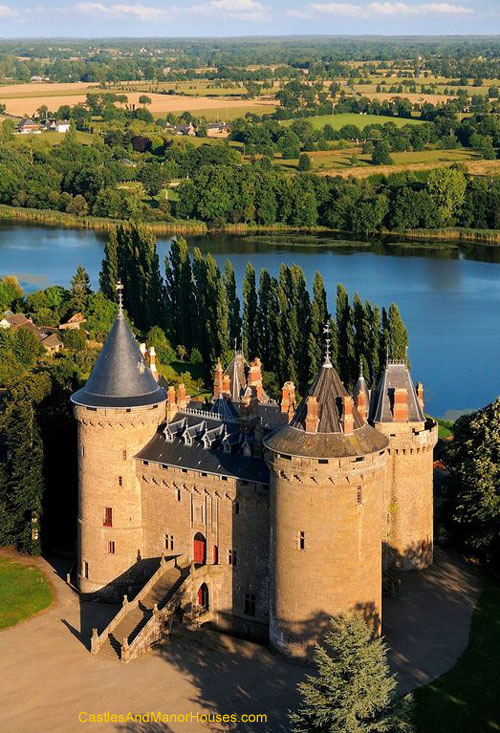 |
Château de Combourg Ille-et-Vilaine, Brittany, France
Privately owned, the Château de Combourg stands on a small hill next to Lac Tranquille in the town of Comburg. The original castle here was built around 1025 by Archbishop Guinguené, who gave it to his illegitimate brother Riwallon.
Alterations were made between the 15th and 19th centuries.
The castle now consists of four large, powerful rectangular buildings of dressed granite, with crenellations, machicolations, and roofs, enclosing a rectangular courtyard. In each corner is a round tower, also with crenellations and machicolations, and with conical roofs. |
||||||||
 |
Château de Combourg Combourg, Ille-et-Vilaine, Brittany, France.
The castle stands on a small hill next to Lac Tranquille (Lake Tranquil) in the town.
Privately owned, the Château de Combourg is listed as a monument historique by the French Ministry of Culture. |
||||||||
 |
La Conciergerie, 2 Boulevard du Palais, 75001 Paris, France
La Conciergerie is a former royal palace and prison located by the seine on the west of the Île de la Cité. It is part of the larger complex known as the Palais de Justice, which is still used for judicial purposes. |
||||||||
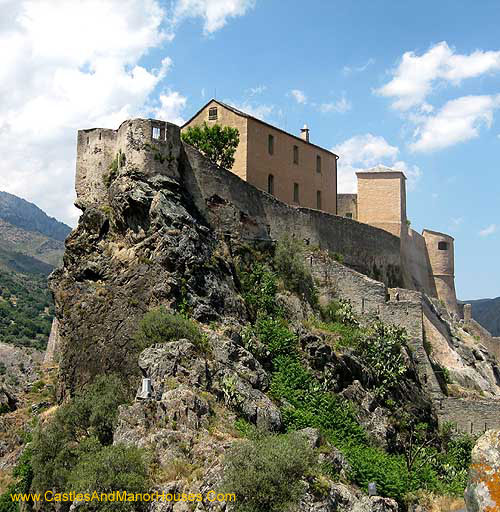 |
Citadelle de Corté Corte en Haute-Corse, Corsica, France
The Citadelle de Corte also known as the Nid d'aigle (Eagle's Nest) is an eighteenth century citadelle, build around a fifteenth century core, and now housing a museum of Corsica.
It has been classée as a monument historique in 1977. |
||||||||
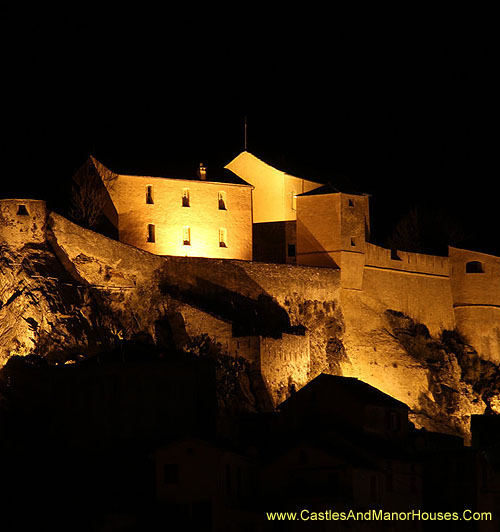 |
Citadelle de Corté Corte en Haute-Corse, Corsica, France
The Citadelle de Corte also known as the Nid d'aigle (Eagle's Nest) is an eighteenth century citadelle, build around a fifteenth century core, and now housing a museum of Corsica.
It has been classée as a monument historique in 1977. |
||||||||
 |
Citadelle de Corté Corte en Haute-Corse, Corsica, France
The Citadelle de Corte also known as the Nid d'aigle (Eagle's Nest) is an eighteenth century citadelle, build around a fifteenth century core, and now housing a museum of Corsica.
It has been classée as a monument historique in 1977. |
||||||||
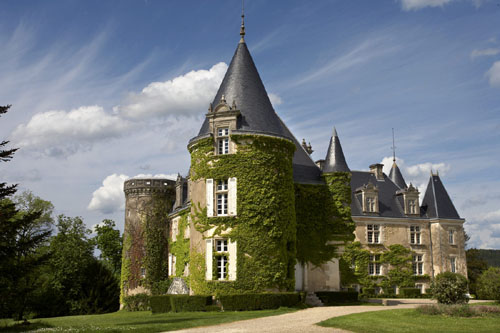 |
Le Château de la Côte-au-Chapt, Darnac, Haute-Vienne, France
Le château incorporates vestiges of the original 12th century castle here.
Te vestiges of the original château are classified as monuments historiques. |
||||||||
 |
The Château de Courances, Courances, Essonne, France
The Château de Courances is a French château built in around 1630, at the western edge of the Forest of Fontainebleau. |
||||||||
 |
Château fort de Couzan 15240 Vebret, Antignac, Cantal, Auvergne, France.
15th Century. Privately owned. Inscrit on the inventaire supplémentaire des Monuments Historiques since 1994. |
||||||||
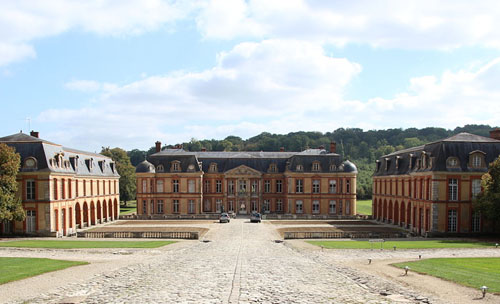 |
Château de Dampierre-en-Yvelines, Vallée de Chevreuse, France.
Built by Jules Hardouin-Mansart in 1675–1683 for the duc de Chevreuse, the Château de Dampierre is a French Baroque château. There are sumptuous interiors.
Protected behind double gates, the main block (corps de logis) and its outbuildings, linked by balustrades, are ranged symmetrically around a dry paved and gravelled cour d'honneur.
The park with formally shaped water features was laid out by André Le Nôtre. It includes a formal canal and an eighteenth-century garden folly. |
||||||||
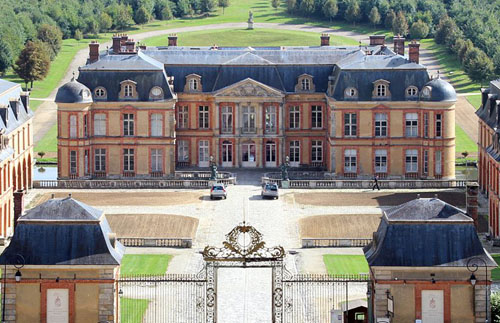 |
Château de Dampierre-en-Yvelines, Vallée de Chevreuse, France.
Built by Jules Hardouin-Mansart in 1675–1683 for the duc de Chevreuse, the Château de Dampierre is a French Baroque château. There are sumptuous interiors.
Protected behind double gates, the main block (corps de logis) and its outbuildings, linked by balustrades, are ranged symmetrically around a dry paved and gravelled cour d'honneur.
The park with formally shaped water features was laid out by André Le Nôtre. It includes a formal canal and an eighteenth-century garden folly. |
||||||||
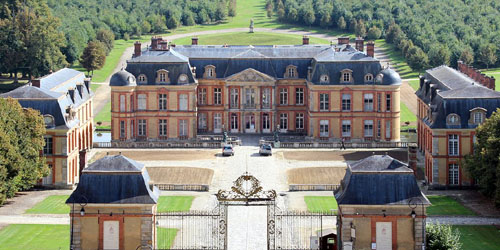 |
Château de Dampierre-en-Yvelines, Vallée de Chevreuse, France.
Built by Jules Hardouin-Mansart in 1675–1683 for the duc de Chevreuse, the Château de Dampierre is a French Baroque château. There are sumptuous interiors.
Protected behind double gates, the main block (corps de logis) and its outbuildings, linked by balustrades, are ranged symmetrically around a dry paved and gravelled cour d'honneur.
The park with formally shaped water features was laid out by André Le Nôtre. It includes a formal canal and an eighteenth-century garden folly. |
||||||||
 |
Château de Durtal, Durtal, Maine-et-Loire, France.
The château was classé as a monument historique en 1900. |
||||||||
 |
Château de Durtal, Durtal, Maine-et-Loire, France.
Thie photograph shows one tower.
The château was classé as a monument historique en 1900. |
||||||||
 |
Château de Durtal, Durtal, Maine-et-Loire, France
The château was classé as a monument historique en 1900. |
||||||||
 |
|||||||||
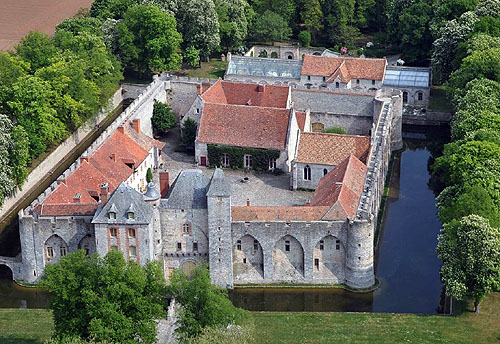 |
Château de Farcheville commune of Bouville Essonne France |
||||||||
 |
Château du Fayel Fayel Oise France |
||||||||
 |
Le château de la Ferté La Ferté-Saint-Aubin, Loiret, Centre, France.
One of the famous châteaux de la Loire. |
||||||||
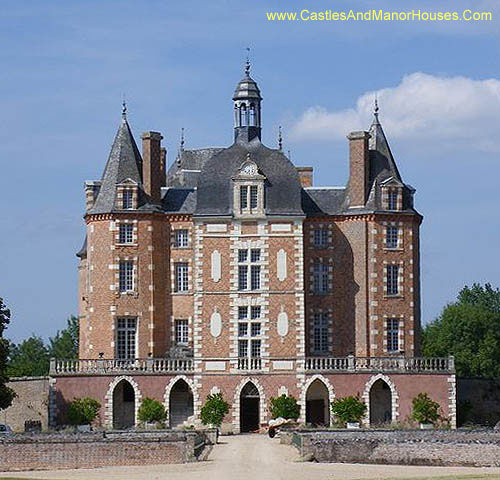 |
Château de La Ferté-Imbault Salbris, Romorantin-Lanthenay, Loir-et-Cher, Centre, France
|
||||||||
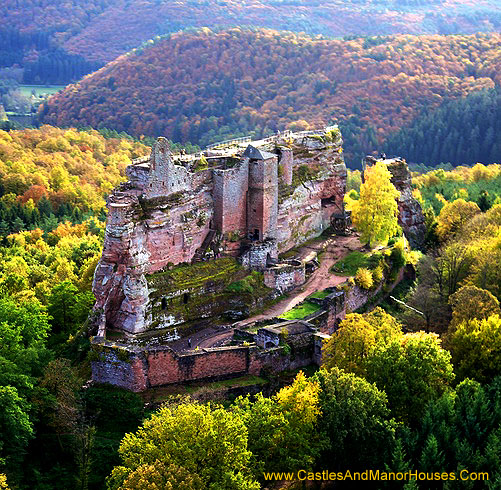 |
Château du Fleckenstein Lembach, Bas-Rhin département, France.
Fleckenstein, un troglodytique en Alsace
Château du Fleckenstein is a castle (château fort) built in the shape of 52 m long boat, with a long history. The castle was built on a sandstone summit in the Middle Ages.
An ingenious system for collecting rainwater fed a cistern and a hoist allowed water and other loads to be moved to the upper floors.
The rock and the castle have been modified and modernised many times. Of the Romanesque castle, remains include steps cut into the length of the rock, troglodyte rooms and a cistern. The lower part of the well tower dates from the 13th or 14th century, the rest from the 15th and 16th.
The Château du Fleckenstein has been listed as a monument historique by the French Ministry of Culture since 1898. |
||||||||
 |
The Château de Foix Foix, Ariège, France.
Built on an older 7th-century fortification, the castle is known from 987. In 1002, it was mentioned in the will of Roger I, Count of Carcassonne, who bequeathed it to his youngest child. The branch family ruling over the region, the Counts of Foix, lived here.
During the two following centuries, the castle was home to the Counts of Foix who were central to the Occitan resistance during the crusade against the Albigensians. The county became a refuge for persecuted Cathars. The castle was often besieged (notably by Simon de Montfort in 1211 and 1212).
It has been listed since 1840 as a monument historique by the French Ministry of Culture. |
||||||||
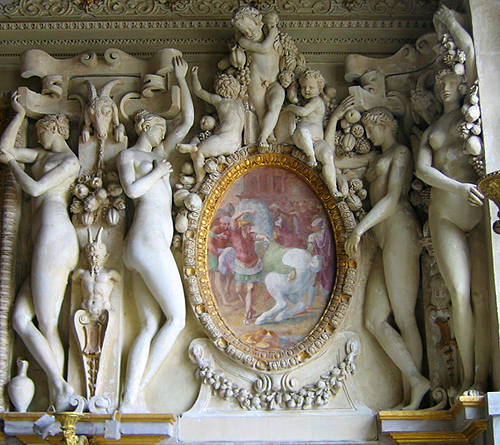 |
Château de Fontainebleau, 77300 Fontainebleau, France
The Château or Palace of Fontainebleau is one of the largest French royal châteaux is located 55 kilometres from the centre of Paris
The palace is the work of many French monarchs, building on an early 16th-century structure of Francis I. |
||||||||
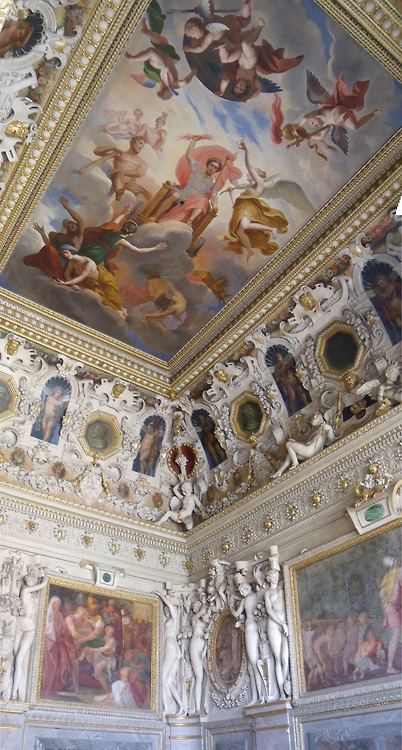 |
Château de Fontainebleau, 77300 Fontainebleau, France
The Château or Palace of Fontainebleau is one of the largest French royal châteaux is located 55 kilometres from the centre of Paris
The palace is the work of many French monarchs, building on an early 16th-century structure of Francis I. |
||||||||
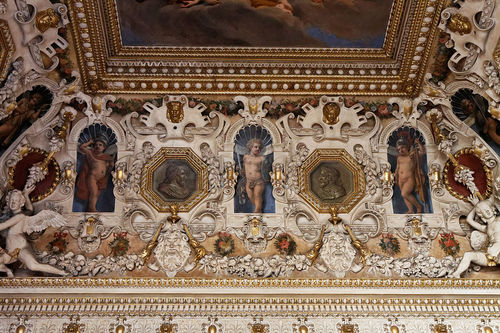 |
Château de Fontainebleau, 77300 Fontainebleau, France
The Château or Palace of Fontainebleau is one of the largest French royal châteaux is located 55 kilometres from the centre of Paris
The palace is the work of many French monarchs, building on an early 16th-century structure of Francis I. |
||||||||
 |
Trinity Chapel Palace of Fontainebleau (55 kilometres from the centre of Paris) France
Fontainebleau is one of the largest French royal châteaux. |
||||||||
 |
Library at the Château de Fontainebleau, France
The Château (or Palace) of Fontainebleau is located 55 kilometres from the centre of Paris,
Fontainebleau is one of the largest French royal châteaux. The building is arranged around a series of courtyards. set around the remainder of the Forest of Fontainebleau, a former royal hunting park.. |
||||||||
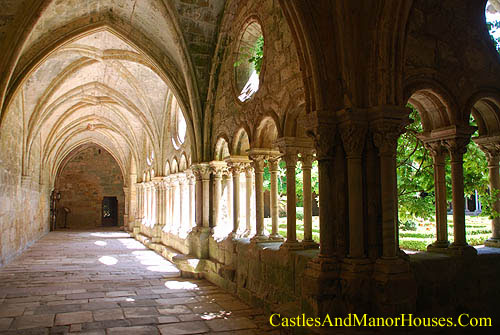 |
Fontfroide Abbey 15 kilometers south-west of Narbonne, Aude, France.
Fontfroide Abbey or l’Abbaye Sainte-Marie de Fontfroide is a former Cistercian monastery founded in 1093 by the Viscount of Narbonne. It remained poor and obscure until 1144 when it affiliated itself to the Cistercian reform movement. Shortly afterwards the Count of Barcelona gave it the land in Spain that was to form the great Catalan monastery of Poblet, of which Fontfroide was the mother house. In 1157 the Viscountess Ermengard of Narbonne granted it a great stretches of land locally, securing its wealth and status.
This abbey was the Cistercian centre of operations during the Albigensian Crusade - the 13th Century war against the Cathars of the Languedoc. It was dissolved in 1791 in the course of the French Revolution. |
||||||||
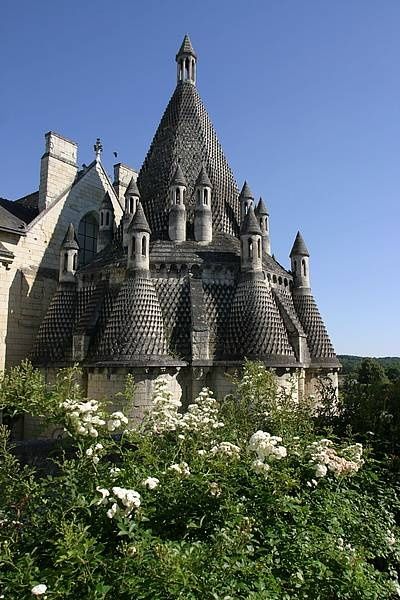
|
Kitchens Fontevraud Abbaye, Fontevraud-l'Abbaye near Chinon Anjou France |
||||||||
 |
Kitchen roofs of the abbaye de Fontevraud (Fontevraud Abbey or Fontevrault Abbey), Fontevraud-l'Abbaye near Chinon Anjou France. |
||||||||
 |
The Château de Fougères Fougères, Ille-et-Vilaine, Brittany, France.
Château de Fougères is Fougères' most famous monument and attraction. It is a medieval stronghold built on a granite ledge. It played an imporant part in the Duchy of Brittany's ultimately unsuccessful defence against French annexation in 1532. |
||||||||
 |
La porte Notre Dame Le château de Fougères Ille-et-Vilaine, Brittany, France
The Château de Fougères is a castle was built on a naturally protected site, a rock emerging from a swamp surrounded by a loop of the Nançon river acting as a natural moat.
It had three rings of defense. In all it has 13 towers.
The first wooden fort was built by the House of Amboise in the eleventh century. It was destroyed in 1166 after it was besieged and taken by King Henry II of England. It was immediately rebuilt by Raoul II Baron de Fougères.
Today the castle belongs to the municipality of Fougères and is one of Europe's largest medieval fortresses. |
||||||||
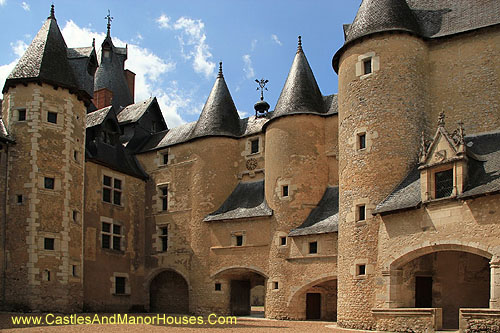 |
The Château de Fougères-sur-Bièvre, Fougères-sur-Bièvre, Loir-et-Cher, France.
Originally an 11th-century structure, the castle was rebuilt at the end of the 15th century, only the large square keep being preserved. The first changes retained military features(ditches, cannon-holes, wall walk) but more Renaissance refinements were added later, such as a gallery, mullioned windows and steep-sloped roofs. The castle was purchased and restored by the state in the 1930s. It has been listed since 1912 as a monument historique by the French Ministry of Culture. |
||||||||
 |
The Château de Fougères-sur-Bièvre, Fougères-sur-Bièvre, Loir-et-Cher, France.
Originally an 11th-century structure, the castle was rebuilt at the end of the 15th century, only the large square keep being preserved. The first changes retained military features(ditches, cannon-holes, wall walk) but more Renaissance refinements were added later, such as a gallery, mullioned windows and steep-sloped roofs. The castle was purchased and restored by the state in the 1930s. It has been listed since 1912 as a monument historique by the French Ministry of Culture. |
||||||||
 |
The Château de Fougères-sur-Bièvre Fougères-sur-Bièvre, Loir-et-Cher, France.
Originally an 11th-century structure, the castle was rebuilt at the end of the 15th century, only the large square keep being preserved. The first changes retained military features(ditches, cannon-holes, wall walk) but more Renaissance refinements were added later, such as a gallery, mullioned windows and steep-sloped roofs. The castle was purchased and restored by the state in the 1930s. It has been listed since 1912 as a monument historique by the French Ministry of Culture. |
||||||||
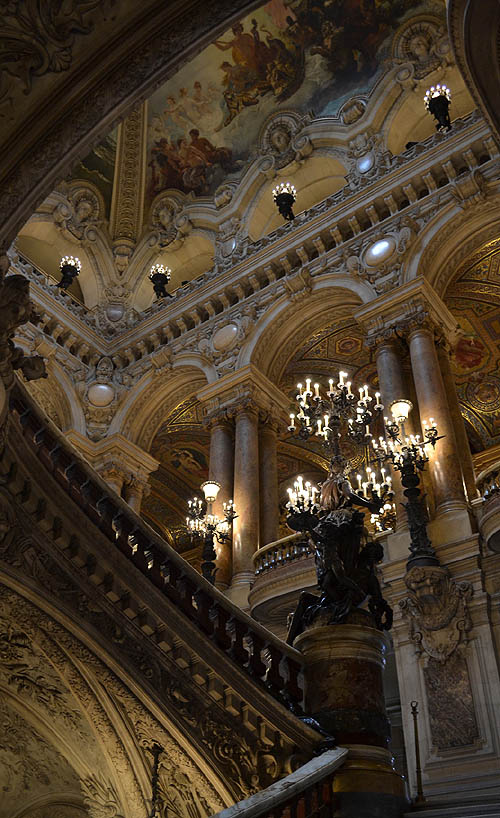 |
Staircase, Opéra Garnier, Paris, France
The Palais Garnier is a 1,979-seat opera house, built from 1861 to 1875 for the Paris Opera. The theatre was known as the Opéra de Paris or simply the Opéra, but has come to be became known as the Palais Garnier in recognition of its opulence and its architect, Charles Garnier.
It was the primary home of the Paris Opera and
its associated Paris Opera Ballet until 1989, when the Opéra
Bastille opened at the Place de la Bastille, leaving the Palais
Garnier for ballet.
The Palais Garnier also houses the Bibliothèque-Musée de l'Opéra de Paris (Paris Opera Library-Museum). |
||||||||
 |
Château de Gaillo, Gaillon, Haute-Normandie, France.
The Château de Gaillon is a renaissance castle, begun in 1502 on ancient foundations. |
||||||||
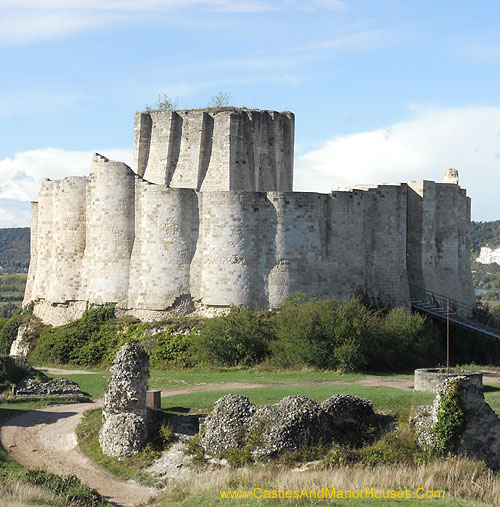 |
Château-Gaillard commune of Les Andelys overlooking the River Seine, in the Eure département of historical Normandy, now Upper Normandy, France.
Château Gaillard is a ruined medieval castle. Construction began in 1196 under the auspices of Richard the Lionheart, King of England and Duke of Normandy. The castle was built in just two years, at the same time the town of Petit Andely
Château Gaillard has a complex and advanced design - it was possibly designed by Richard himself. It uses principles of concentric fortification It was also one of the earliest European castles to use machicolations - an idea that Richard might well have brought back from the Holy Land. The castle consists of three enclosures separated by dry moats, with a keep in the inner enclosure.
Château Gaillard was captured in 1204 by the French king Philip II, after a lengthy siege. In the mid-14th century, the castle became the residence of the exiled David II of Scotland.
The castle changed hands several times in the Hundred Years' War, but in 1449 the French captured Château Gaillard from the English for the last time, and from then on it remained in French ownership. Henry IV of France ordered the demolition of Château Gaillard in 1599; The castle ruins are listed as a monument historique by the French Ministry of Culture. |
||||||||
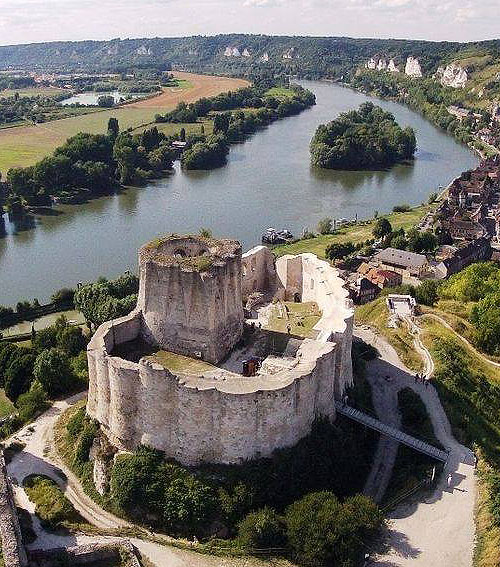 |
Château-Gaillard, above the commune of Les Andelys overlooking the River Seine, in the Eure département of historical Normandy, now Upper Normandy, France.
Château Gaillard is a ruined medieval castle
Construction began in 1196 under the auspices of Richard the Lionheart, King of England and Duke of Normandy. The castle was built in just two years, at the same time the town of Petit Andely
. Château Gaillard has a complex and advanced design - possibly designed by Richard himself. It uses principles of concentric fortification It was also one of the earliest European castles to use machicolations - an idea that Richard might well have brought back from the Holy Land. The castle consists of three enclosures separated by dry moats, with a keep in the inner enclosure.
Château Gaillard was captured in 1204 by the French king, Philip II, after a lengthy siege. In the mid-14th century, the castle became the residence of the exiled David II of Scotland.
The castle changed hands several times in the Hundred Years' War, but in 1449 the French captured Château Gaillard from the English for the last time, and from then on it remained in French ownership.
Henry IV of France ordered the demolition of Château Gaillard in 1599; The castle ruins are listed as a monument historique by the French Ministry of Culture. |
||||||||
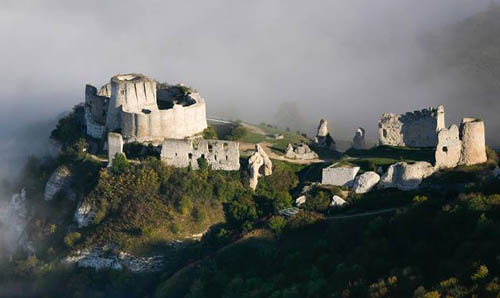 |
Château-Gaillard, above the commune of Les Andelys overlooking the River Seine, in the Eure département of historical Normandy, now Upper Normandy, France.
Château Gaillard is a ruined medieval castle
Construction began in 1196 under the auspices of Richard the Lionheart, King of England and Duke of Normandy. The castle was built in just two years, at the same time the town of Petit Andely
. Château Gaillard has a complex and advanced design - possibly designed by Richard himself. It uses principles of concentric fortification It was also one of the earliest European castles to use machicolations - an idea that Richard might well have brought back from the Holy Land. The castle consists of three enclosures separated by dry moats, with a keep in the inner enclosure. |
||||||||
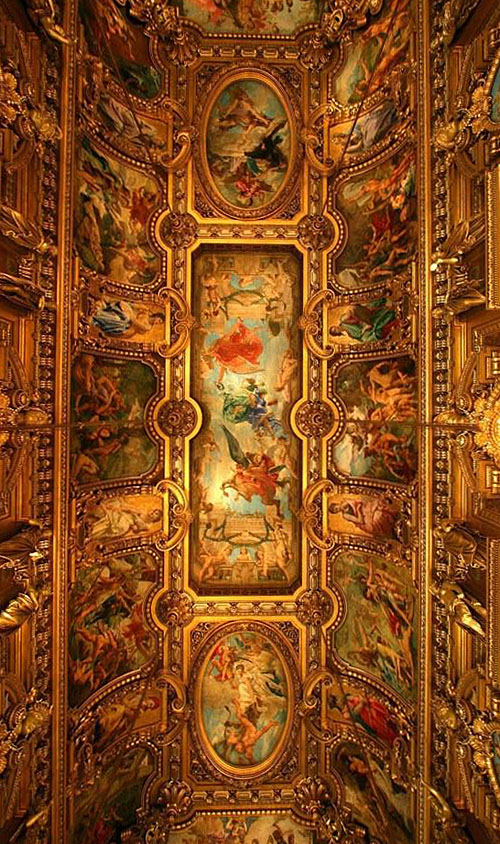 |
Ceiling Opéra Garnier Paris, France
The Palais Garnier is a 1,979-seat opera house, built from 1861 to 1875 for the Paris Opera. The theatre was known as the Opéra de Paris or simply the Opéra, but has come to be became known as the Palais Garnier in recognition of its opulence and its architect, Charles Garnier.
It was the primary home of the Paris Opera and
its associated Paris Opera Ballet until 1989, when the Opéra
Bastille opened at the Place de la Bastille, leaving the Palais
Garnier for ballet.
The Palais Garnier also houses the Bibliothèque-Musée de l'Opéra de Paris (Paris Opera Library-Museum). |
||||||||
 |
|||||||||
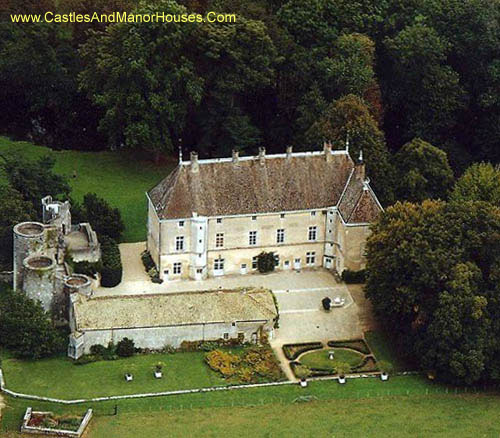 |
Château de Germolles Mellecey, Burgundy, France.
The Château de Germolles is the best preserved of the residences of the Dukes of Burgundy. Built during the second part of the 14th century, it is important for the history of the region and a rare example of a well-preserved surviving 14th Century French castle.
It has been listed as a Historic monument since 1989. |
||||||||
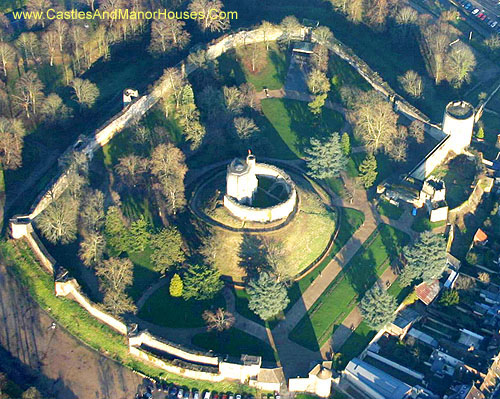 |
Château Fort de Gisors, Haute-Normandie, France
King William II of England ordered Robert of Bellême to build the first castle at Gisors. Henry I of England was responsible for the octagonal stone keep surmounting the motte. Henry's work at Gisors was part of a programme of royal castle building in Normandy during his reign to secure the region against the aspirations of the French crown.
The castle is also known for its links with the Templars. Put into their charge by the French king between 1158 and 1160, it became the final prison of the Grand Master of the Order, Jacques de Molay, in 1314. |
||||||||
 |
Château Fort de Gisors, Haute-Normandie, France
King William II of England ordered Robert of Bellême to build the first castle at Gisors. Henry I of England was responsible for the octagonal stone keep surmounting the motte. Henry's work at Gisors was part of a programme of royal castle building in Normandy during his reign to secure the region against the aspirations of the French crown.
The castle is also known for its links with the Templars. Put into their charge by the French king between 1158 and 1160, it became the final prison of the Grand Master of the Order, Jacques de Molay, in 1314. |
||||||||
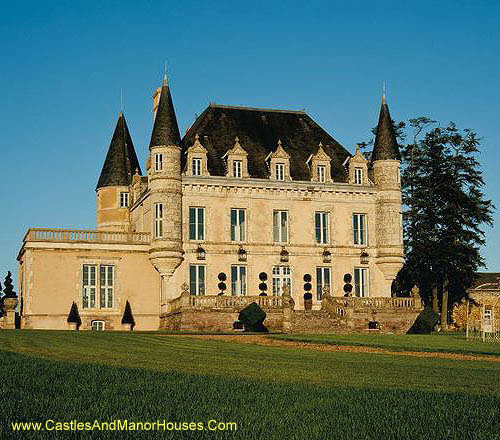 |
Château de la Goujeonnerie Vendee, France |
||||||||
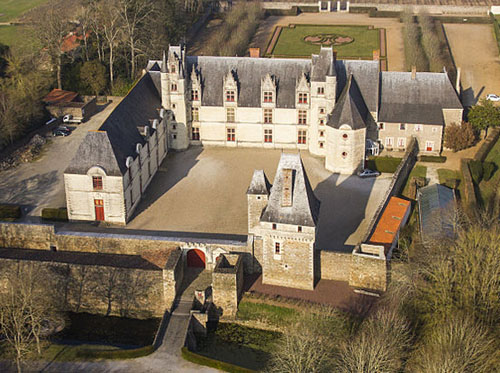 |
Château de Goulaine, Loire Valley, near Nantes, France.
The Château de Goulaine is a former château-fort or castle, now a country house.
The Goulaine family ownership of the estate continued uninterrupted until 1788 when it was sold to a Dutch banker. This saved the château from destruction during the French Revolution. In 1858, a member of the Goulaine family reacquired the estate and maintains it today.
Apart from this this break, the château has been home to the family of the Marquis de Goulaine for over a thousand y ears. |
||||||||
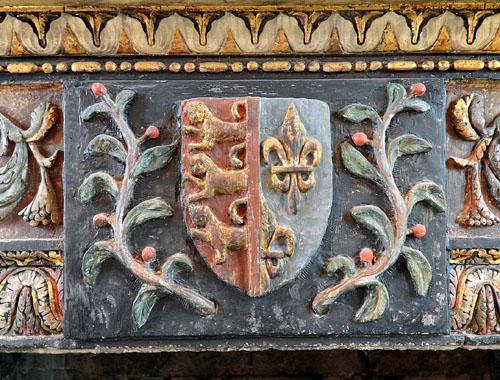 |
Château de Goulaine, Loire Valley, near Nantes, France.
Coats of arms do not come more prestigious than this: England dimidiated with France ancient
|
||||||||
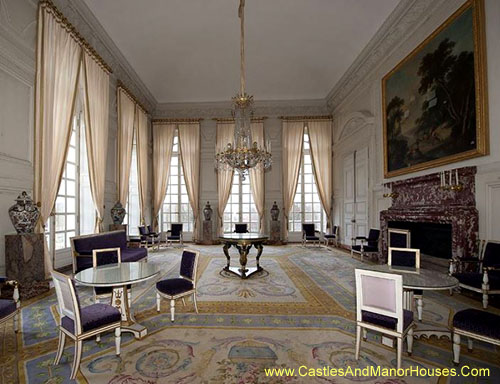 |
Garden Room Grand Trianon Versailles, Île-de-France, France.
The Grand Trianon is a Château / palace built in the northwestern part of the Domain of Versailles at the request of Louis XIV, as a retreat for the King and his maîtresse en titre of the time, the marquise de Montespan, and as a place where the King and invited guests could take collations away from the strict étiquette of the Court.
The Grand Trianon is set within its own park, which includes the Petit Trianon (a smaller château built between 1762 and 1768 during the reign of Louis XV). |
||||||||
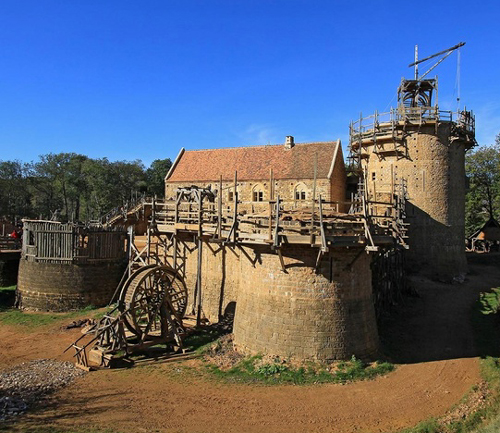 |
Château Fort de Guédelon, Treigny, Yonne, Burgundy, France
Château Fort de Guédelon (Guédelon Castle) is a medieval construction project. The object of which is to build a castle using only the techniques and materials used in the Middle Ages.
Building materials, including wood and stone, are obtained locally. Jacques Moulin, the chief architect for the project, designed the castle according to the architectural model developed during the 12th and 13th centuries by Philip II of France.
Construction started in 1997 under Michel Guyot, owner of Saint-Fargeau castle. The site was chosen in the light of the availability of a stone quarry, in a large forest, with a pond close by.
The project has created 55 jobs and is now a tourist destination, with more than 300 000 visits each year
When completed in the 2020s, it should be an authentic recreation of a 13th-century medieval castle. . |
||||||||
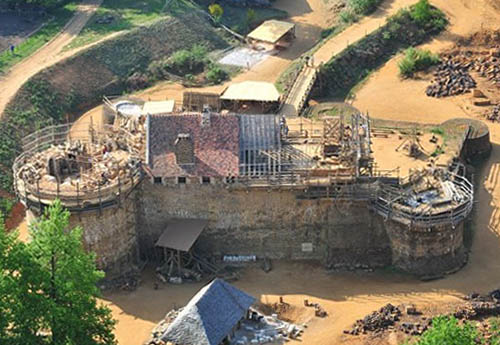 |
Château Fort de Guédelon Treigny, Yonne, Burgundy, France 2013
Château Fort de Guédelon (Guédelon Castle) is a medieval construction project. The object of which is to build a castle using only the techniques and materials used in the Middle Ages.
Building materials, including wood and stone, are obtained locally. Jacques Moulin, the chief architect for the project, designed the castle according to the architectural model developed during the 12th and 13th centuries by Philip II of France.
Construction started in 1997 under Michel Guyot, owner of Saint-Fargeau castle. The site was chosen in the light of the availability of a stone quarry, in a large forest, with a pond close by.
The project has created 55 jobs and is now a tourist destination, with more than 300 000 visits each year
When completed in the 2020s, it should be an authentic recreation of a 13th-century medieval castle. |
||||||||
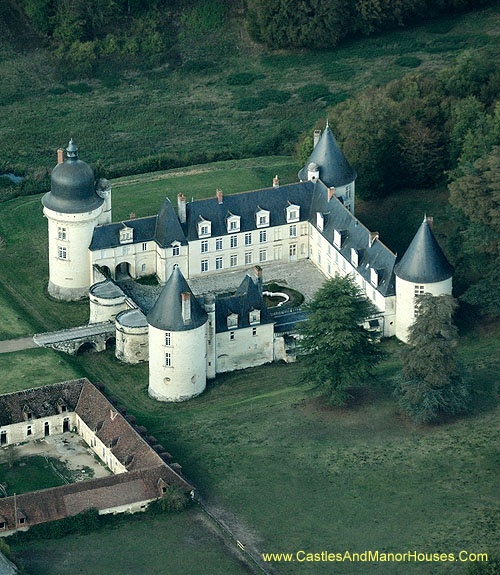 |
Château du Gué-Péan Monthou-sur-Cher, Loir-et-Cher, Centre, France
Monument historique |
||||||||
 |
Château d'Harcourt Harcourt, Eure, France
The Château d'Harcourt is the cradle of the Harcourt family. The first stone castle here was built by Robert II d'Harcourt, a crusader companion of Richard Lionheart.
Harcourts appear later among the most important barons of Normandy. Jean II d'Harcourt was a Maréchal de France.
The castle is one of the best preserved castles in the country and contains the oldest arboretum in France. |
||||||||
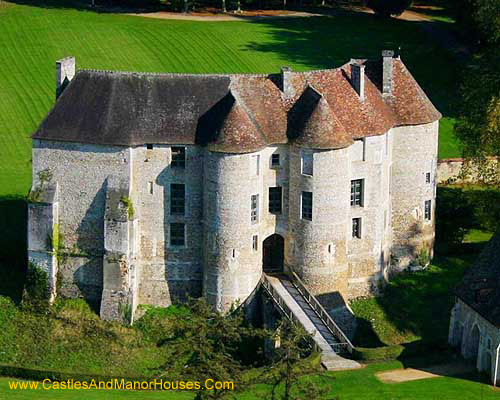 |
Château d'Harcourt Harcourt, Eure, France
The Château d'Harcourt is the cradle of the Harcourt family. The first stone castle here was built by Robert II d'Harcourt, a crusader companion of Richard Lionheart.
Harcourts appear later among the most important barons of Normandy. Jean II d'Harcourt was a Maréchal de France.
The castle is one of the best preserved castles in the country and contains the oldest arboretum in France. |
||||||||
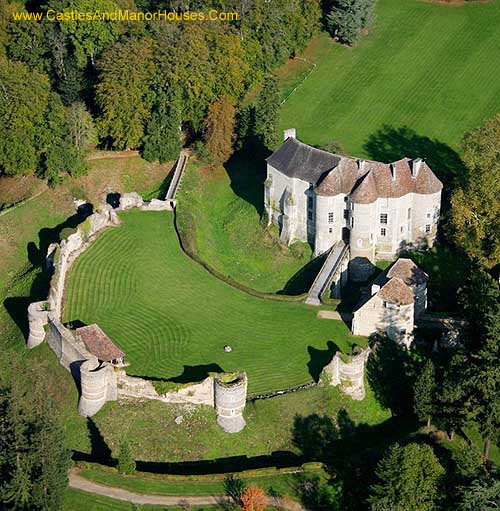 |
Château d'Harcourt Harcourt, Eure, France
The Château d'Harcourt is the cradle of the Harcourt family. The first stone castle here was built by Robert II d'Harcourt, a crusader companion of Richard Lionheart.
Harcourts appear later among the most important barons of Normandy. Jean II d'Harcourt was a Maréchal de France.
The castle is one of the best preserved castles in the country and contains the oldest arboretum in France. |
||||||||
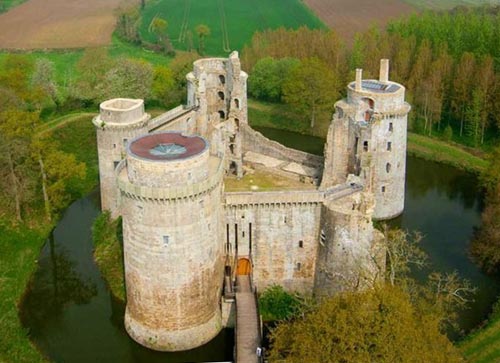 |
Château fort de la Hunaudaye - Plédéliac, Côtes-d'Armor, Brittany, France
Castle Hunaudaye is a thirteenth century castle. It is classified as a Monument historique since February 1922. |
||||||||
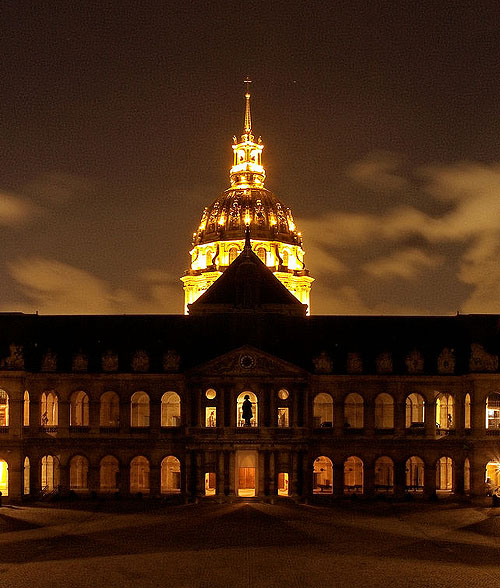 |
La cour d’honneur, l’hôtel des Invalides, 7th arrondissement, Paris, France
Les Invalide , officially L'Hôtel national des Invalides (The National Town-House of the Invalids), is a complex of buildings containing museums and monuments, relating to the military history of France, as well as a hospital and a retirement home for war veterans (the building's original purpose).
The complex houses the Musée de l'Armée, the military museum of the Army of France, the Musée des Plans-Reliefs, and the Musée d'Histoire Contemporaine, as well as the burial site for some of France's war heroes. |
||||||||
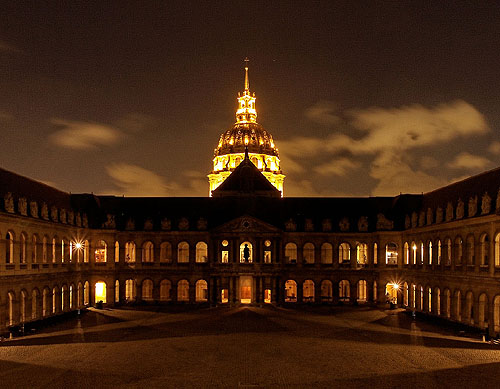 |
La cour d’honneur, l’hôtel des Invalides, 7th arrondissement, Paris, France
Les Invalide , officially L'Hôtel national des Invalides (The National Town-House of the Invalids), is a complex of buildings containing museums and monuments, relating to the military history of France, as well as a hospital and a retirement home for war veterans (the building's original purpose).
The complex houses the Musée de l'Armée, the military museum of the Army of France, the Musée des Plans-Reliefs, and the Musée d'Histoire Contemporaine, as well as the burial site for some of France's war heroes. |
||||||||
 |
Palais de l'Isle, Annecy, France
The Palais de l'Isle is a castle in the Thiou canal, built in 1132. It was the primary residence of the Lord of Annecy as early as the 12th century, and later became the Count of Geneva's administrative headquarters.
Later it became a courthouse, a mint, and finally a jail from the Middle Ages until 1865, and then again during World War II.
The Palais de l'Ile was classified as a Historical Monument in 1900, and today houses a local history museum. |
||||||||
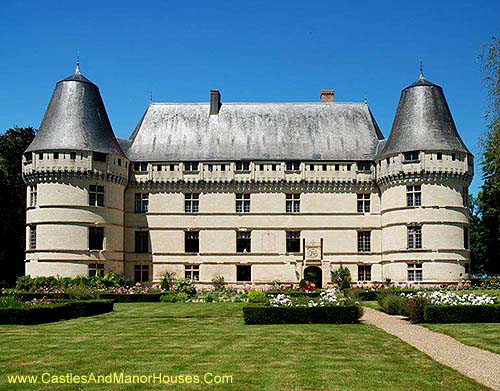 |
Château de l'Islette Azay-le-Rideau, Indre-et-Loire, France
Château de l'Islette is a castle dating from the sixteenth century. It was built near the Indre (a tributary tof the Loire), not to be confused with the nearby Château d'Azay-le-Rideau. The interior has been classified as a monument historique since 1946.
|
||||||||
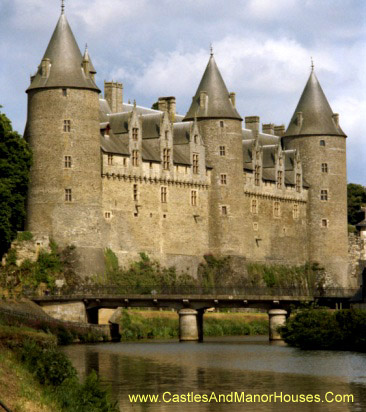 |
Château de Josselin Josselin Morbihan Brittany France |
||||||||
 |
Château de Kerguéhennec Bignan, Morbihan, Bretagne, France
Le château de Kerguéhennec, dating from the eighteenth century, is known as the Breton Versailles
It is now a contemorary art centre.it was classé as a monument historique in 1988. The parc was incrit at the same time. |
||||||||
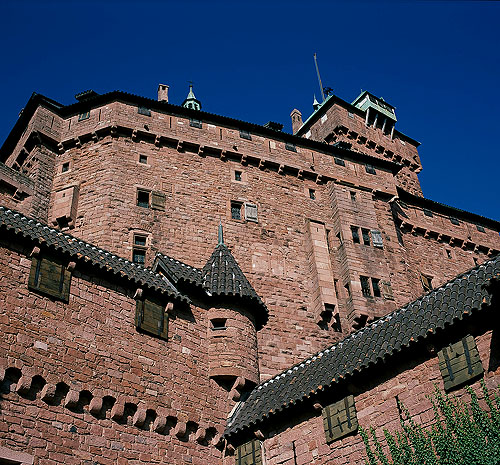 |
Haut Koenigbourg castle [French Château du Haut-Kœnigsbourg] [German Hohkönigsburg] Orschwiller Alsace France |
||||||||
 |
Château de Langeais (a medieval castle rebuilt as a château) Indre-et-Loire France |
||||||||
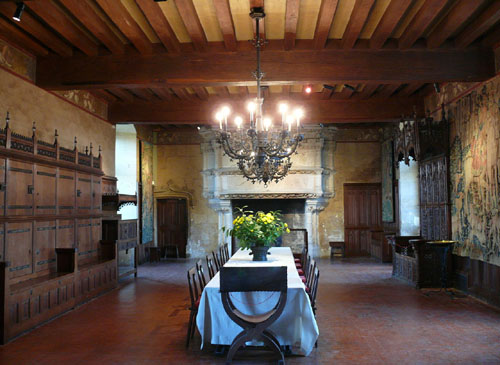 |
The Château de Langeais, Indre-et-Loire, France.
The Château de Langeais is a medieval castle, rebuilt as a country house, sited on a promontory created by the small valley of the Roumer River at the opening to the Loire Valley.
Founded in 992 by Fulk Nerra, Count of Anjou, the castle was soon attacked by Odo I, Count of Blois. After the unsuccessful attack, the ruined stone keep was built and is now one of the earliest datable examples of a stone keep.
After it was destroyed during the Hundred Years' War, King Louis XI (1461–1483) rebuilt the château as what today is one of the best known examples of late medieval architecture. It is noted for its monumental and highly decorated chimneypieces.
Restored in the late 19th century, the Château de Langeais came under the control of the Institut de France, who own the site today. It is listed as a monument historique by the French Ministry of Culture and is open to the public. |
||||||||
|
|
|||||||||
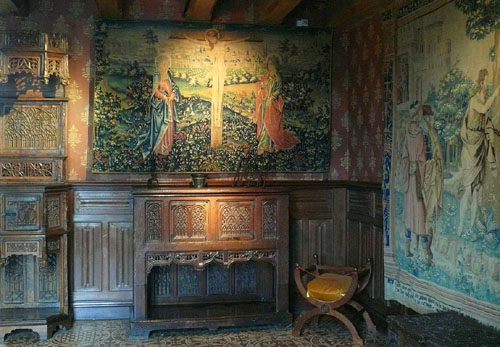 |
The Château de Langeais, Indre-et-Loire, France,
The Château de Langeais is a medieval castle, rebuilt as a country house, sited on a promontory created by the small valley of the Roumer River at the opening to the Loire Valley.
Founded in 992 by Fulk Nerra, Count of Anjou, the castle was soon attacked by Odo I, Count of Blois. After the unsuccessful attack, the ruined stone keep was built and is now one of the earliest datable examples of a stone keep.
After it was destroyed during the Hundred Years' War, King Louis XI (1461–1483) rebuilt the château as what today is one of the best known examples of late medieval architecture. It is noted for its monumental and highly decorated chimneypieces.
Restored in the late 19th century, the Château de Langeais came under the control of the Institut de France, who own the site today. It is listed as a monument historique by the French Ministry of Culture and is open to the public. |
||||||||
 |
Floor, The Château de Langeais, Indre-et-Loire, France.
The Château de Langeais is a medieval castle, rebuilt as a country house, sited on a promontory created by the small valley of the Roumer River at the opening to the Loire Valley.
Founded in 992 by Fulk Nerra, Count of Anjou, the castle was soon attacked by Odo I, Count of Blois. After the unsuccessful attack, the ruined stone keep was built and is now one of the earliest datable examples of a stone keep.
After it was destroyed during the Hundred Years' War, King Louis XI (1461–1483) rebuilt the château as what today is one of the best known examples of late medieval architecture. It is noted for its monumental and highly decorated chimneypieces.
Restored in the late 19th century, the Château de Langeais came under the control of the Institut de France, who own the site today. It is listed as a monument historique by the French Ministry of Culture and is open to the public. |
||||||||
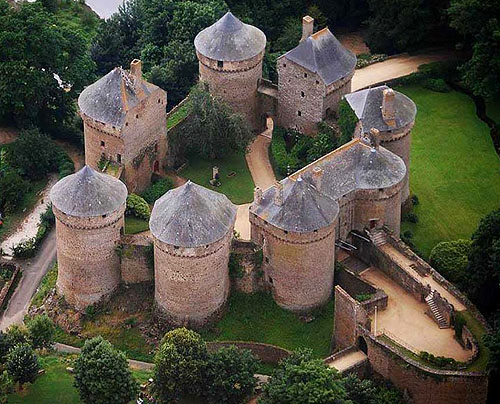 |
Château de Lassay Lassay-les-Châteaux, Mayenne, France.
The original castrum or castellum here, built in the early years of the twelfth century, was probably a motte and bailey castle.
The present Château de Lassay was classified as a monument historique in 1862 and is still a private residence. |
||||||||
 |
Château de Lassay Lassay-les-Châteaux, Mayenne, France.
The original castrum or castellum here, built in the early years of the twelfth century, was probably a motte and bailey castle.
The present Château de Lassay was classified as a monument historique in 1862 and is still a private residence. |
||||||||
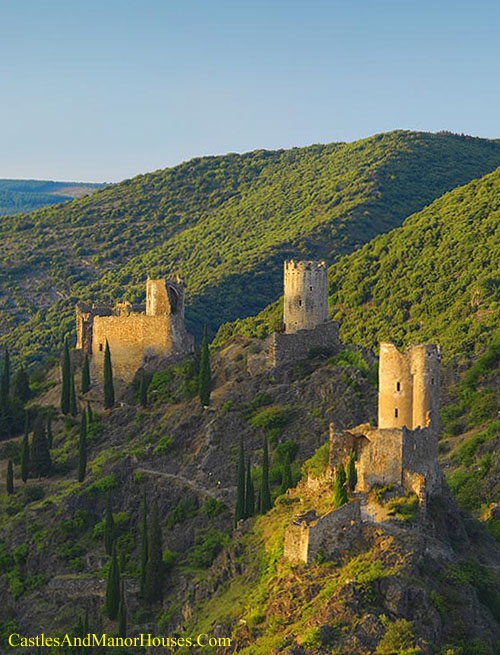 |
Châteaux de Lastours Lastours, Aude, Languedoc, France.
Lastours (Occitan: Las Tors = Les Tours = The towers) is an unusual arrangement of three castle towers (now four). The original castles belonged to the Lords of Cabaret, who held them in fief from the Trencavels. They received troubadours here, including Raymond de Miraval and Peire Vidal, who dedicated verses to the Cathar Ladies of the place.
During the Cathar Crusade this was one of the most ardent centres of resistance to the French Crusaders, |
||||||||
 |
|||||||||
 |
Châteaux de Lastours Lastours, département of l'Aude, France
The Châteaux de Lastours (in Occitan Lastors) are three Cathar castles (and a later French one).
The four castles are on a rocky spur above the village of Lastours, isolated by the deep valleys of the Orbeil and Grésilhou rivers.
They were built at an altitude of 300 m along a rock wall just 1300 feet (~400 m) long by 165 feet (~50 m) wide.
Cabaret, Surdespine and la Tour Régine [the French one] stand in line, while Quertinheux is built on a separate pinnacle close by.
The site has been classified monument historique (historic monument) by the French Ministry of Culture since 1905. Archaeological digs are still in progress. |
||||||||
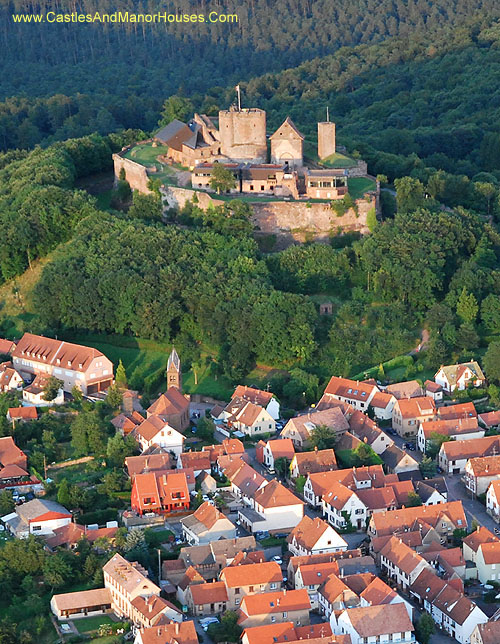 |
The Château de Lichtenberg Lichtenberg, northern Vosges, Bas-Rhin department, Alsace, France.
The Château de Lichtenberg is a castle built on a singular prominence, built in the 13th century by the Hanau-Lichtenberg family. It was in the center of a constantly shifting territory, which traded hands many times until the Franco-Prussian War in 1870, when it was partly destroyed by artillery fire and the resulting fires.
It was left to deteriorate for 120 years. In the 1990s, a massive consolidation project was undertaken on the ruins, with an investment of 52 million francs. |
||||||||
 |
Château de Long Somme, Picardie, France
The 18th-century château, in pink brick and white stone, with a mansard roof, was constructed on the site of a medieval castle.
During the Second World War, the building was badly damaged by occupying troops, who burnt doors, windows and flooring. Restored during the 1960s, the building is now open to the public. |
||||||||
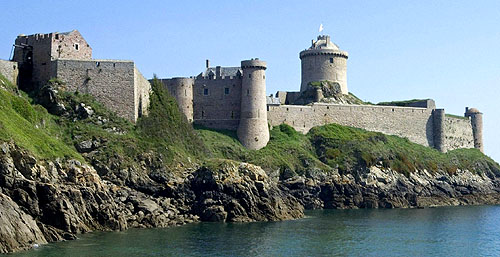 |
Fort-la-Latte (Castle of La Latte) Fréhel, Côtes-d'Armor, Brittany, France
Fort-la-Latte is located about 4 km southeast of Cap Fréhel and about 35 km west of Saint-Malo. The castle was built on the Baie de la Fresnaye in the 13th century.
Various films have been shot at this site, including The Vikings (1958). The main tower was used in a scene in Ridley Scott's documentary film Life in a Day (2011).
The castle has been classified as a monument historique by the French Ministry of Culture since 1925. It is a famous tourist attraction on the Cote d'Émeraude. |
||||||||
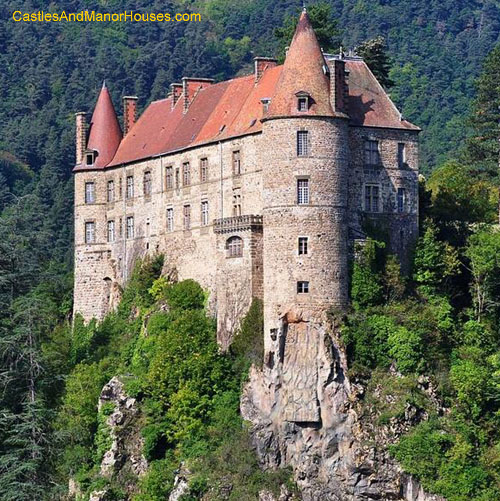 |
Le château de Lavoûte-Polignac Lavoûte-sur-Loire, Haute-Loire, France
It is one of the châteaux of the Loire.
It was for centuries one of the favourite rences of the Polignac family. Like most other French château it was siezed by the state in 1793 (the Polignac family having escaped to Vienna) and sold off as a "national good".
In the nineteenth century the Polignac family bought it back, and Melchior, Comte de Polignac, had the south aisle repaired (the other two wings having fallen too far into ruin). |
||||||||
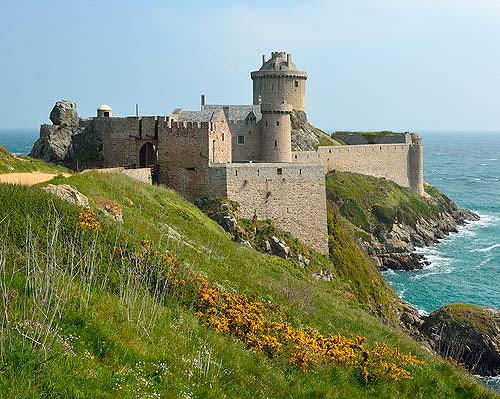 |
Fort-la-Latte (Castle of La Latte) Fréhel, Côtes-d'Armor, Brittany, France
Fort-la-Latte is located about 4 km southeast of Cap Fréhel and about 35 km west of Saint-Malo. The castle was built on the Baie de la Fresnaye in the 13th century.
Various films have been shot at this site, including The Vikings (1958). The main tower was used in a scene in Ridley Scott's documentary film Life in a Day (2011).
The castle has been classified as a monument historique by the French Ministry of Culture since 1925. It is a tourist attraction on the Cote d'Émeraude. |
||||||||
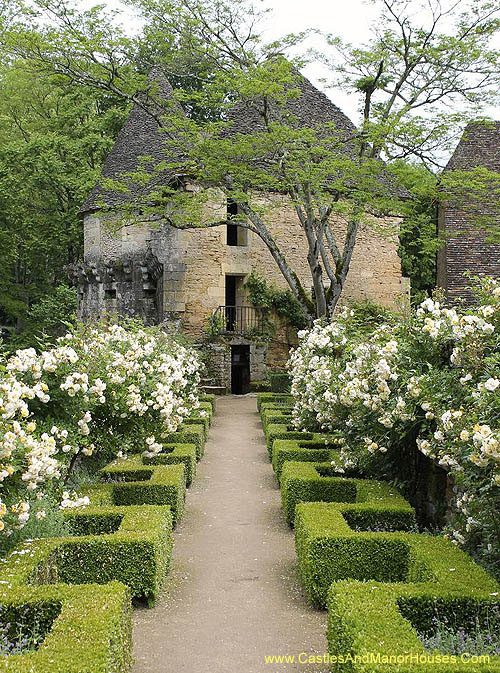 |
Château de Losse Périgord, Dordogne, France
The medieval Château de Losse overlooks the Vézère river. It is located near the Lascaux pre-historic caves.
In 1575 a Renaissance Hall was built within the stronghold. It was enclosed by curtain walls and surrounded by a deep ditch..
The Château and its gardens have been listed as French Historical House and Site since 1928. |
||||||||
 |
Louvre, 75001 Paris, France
The Louvre Palace (Palais du Louvre), which houses the present museum, was begun as a fortress by Philip II in the 12th century, with remnants of this building still visible in the crypt. |
||||||||
 |
Château du Lude Le Lude, Sarthe department, Pays-de-la-Loire, France
The Château du Lude is one of the many great châteaux of the Loire Valley and stands at the crossroads of Anjou, Maine and Touraine.
Le Lude is an old stronghold transformed into an elegant house during the Renaissance and the 18th century. It has been inhabited by the same family for the last 260 years.
The Château gardens have evolved throughout the centuries, with an English style landscape, a rose garden, topiaries, a labyrinth and a botanical walk. |
||||||||
 |
la Salle du Livre d’Or, Palais du Luxembourg, 6th Arrondissement, Paris, France
The palace was built as a royal residence for Marie de Médicis, mother of king Louis XIII of France and of Gaston, duc d'Orléans, near the site of an old hôtel particulier owned by François-Henri de Montmorency, duc de Piney-Luxembourg, which is now called the Palais du Petit-Luxembourg..
The Luxembourg Palace is npw the seat of the French Senate. |
||||||||
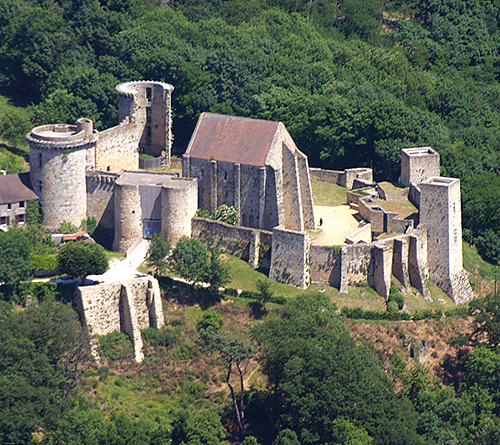 |
Château de la Madeleine Chevreuse, département of Yvelines, Île de France, France.
The construction of the Château de la Madeleine began between 1020 and 1090, under Guy I, Lord of Chevreuse. From this period, only the keep remains. Originally, the keep was surrounded by a wooden palisade, replaced by stone curtain walls during the 12th century.
A century later, probably under Anseau de Chevreuse, the castle was modified, notably with the construction of the machicolations. The gatehouse was protected by a moat.
The castle changed hands in 1356. Ingerger le Grand, Lord of Chevreuse and Amboise, was taken prisoner by England during the Hundred Years' War. He was obliged to sell his domain to pay his ransom; the castle was bought by the future Pierre de Chevreuse.
The existing fortifications were improved under the reigns of Charles V and Charles VI; who financed the outworks with royal taxes. Modifications were completed under Louis XI (1461 – 1483). The village was also fortified: a crenelated rampart, 3.5 m high (11.5 feet) with turrets, was built. The defence was completed by a 15 m large ditch (50 feet). |
||||||||
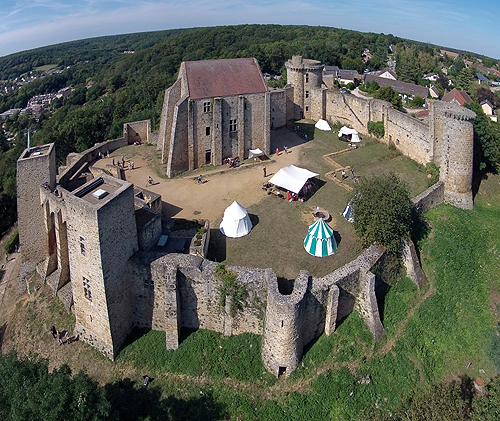 |
Château de la Madeleine Chevreuse, département of Yvelines, Île de France, France.
The construction of the Château de la Madeleine began between 1020 and 1090, under Guy I, Lord of Chevreuse. From this period, only the keep remains.
Originally, the keep was surrounded by a wooden palisade, replaced by stone curtain walls during the 12th century. A century later, probably under the reign of Anseau de Chevreuse, the castle was modified, notably with the construction of the machicolations. The gatehouse was protected by a moat.
The castle changed hands in 1356. Ingerger le Grand, Lord of Chevreuse and Amboise, was taken prisoner by the English during the Hundred Years' War. He was obliged to sell his domain to pay his ransom; the castle was bought by the future Pierre de Chevreuse.
The existing fortifications were improved under the reigns of Charles V and Charles VI; who financed the outworks with royal taxes. Modifications were completed under Louis XI (1461 – 1483).
The village was also fortified: a crenelated rampart, 3.5 m high (11.5 feet) with turrets, was built. The defence was completed by a 15 m large ditch (50 feet). |
||||||||
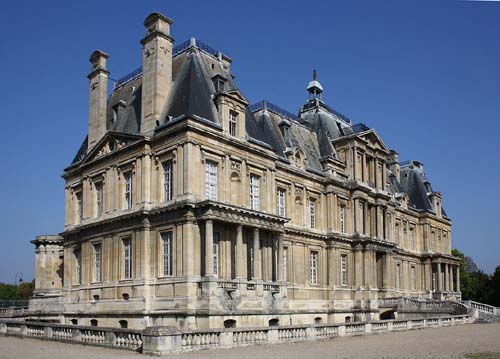 |
Château de Maisons (now Château de Maisons-Laffitte), Maisons-Laffitte, northwestern Paris, department of Yvelines, Île-de-France.
Le château de Maisons-Laffitte was designed by François Mansart from 1630 to 1651. It is a prime example of French baroque architecture and a reference point in the history of French architecture. |
||||||||
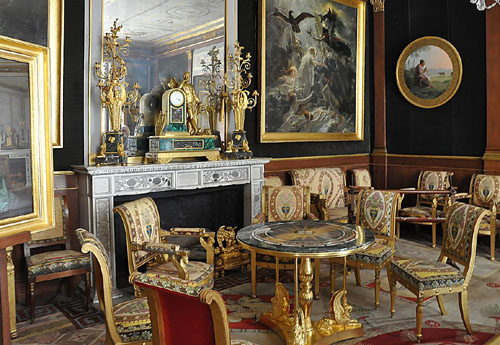 |
Salon doré at the Château de Malmaison, Rueil-Malmaison, Hauts-de-Seine, France
The Château de Malmaison is a country house about 12 km (7 mi) from Paris, formerly the residence of Joséphine de Beauharnais. Along with the Tuileries, it was from 1800 to 1802 the headquarters of the French government.
Joséphine de Beauharnais bought the manor house in April 1799 for herself and her husband, General Napoléon Bonaparte, the future Napoléon I of France, who was at that time away fighting the Egyptian Campaign. |
||||||||
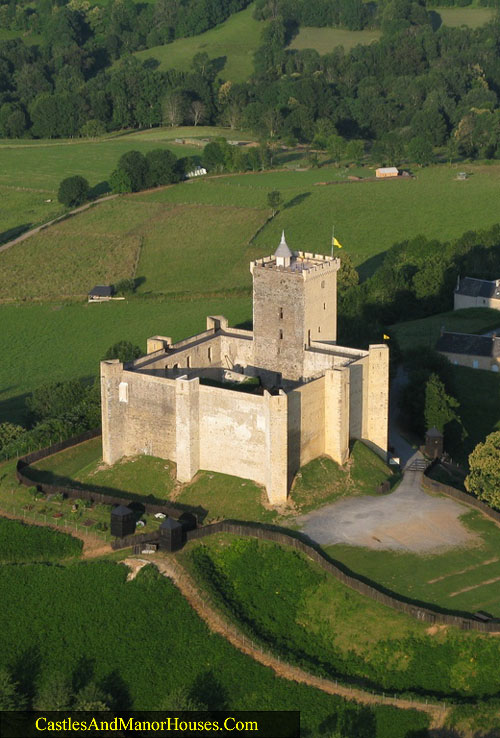 |
The Château de Mauvezin Mauvezin, Hautes-Pyrénées, FRANCE.
The site, occupied since the Dark Ages, was transformed into a castrum in the Middle Ages. The castle was built by Gaston Phoebus around 1380.
Following the merging of Bigorre into the Kingdom of France in 1607, the castle fell into disuse and was dismantled, its stones used for other buildings.
Today, the castle is being restored and is listed as a monument historique by the French Ministry of Culture. |
||||||||
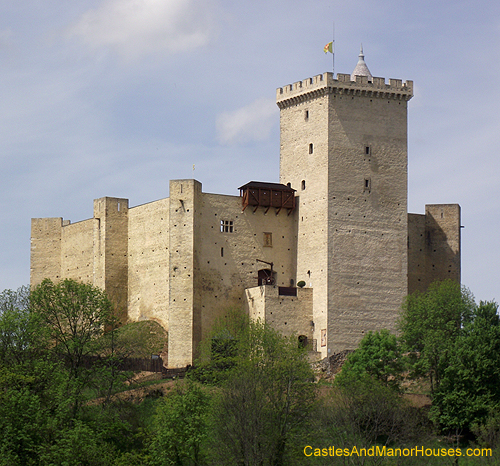 |
The Château de Mauvezin Mauvezin, Hautes-Pyrénées, France.
The site, occupied since the Dark Ages, was transformed into a castrum in the Middle Ages. The castle was built by Gaston Phoebus around 1380.
Following the merging of Bigorre into the Kingdom of France in 1607, the castle fell into disuse and was dismantled, its stones used for other buildings.
Today, the castle is being restored and is listed as a monument historique by the French Ministry of Culture. |
||||||||
 |
The Château de Mauvezin Mauvezin, Gers, Hautes-Pyrénées, France.
The site, occupied since prehistory, was transformed into a castrum in the Middle Ages and later into a castle with a square plan. The present castle was built around 1380, by the great Gaston Phoebus, Count of Foix and Viscount of Béarn,.
Foix along with Bigorre were absorbed into the Kingdom of France in 1607, after which the Count's castle fell into disuse. It was dismantled its stones being used for other buildings.
Today, the castle is being restored. It is listed as a monument historique by the French Ministry of Culture. |
||||||||
 |
Château de Mauvezin Mauvezin, Hautes-Pyrénées, France.
The site, occupied since protohistory, was transformed into a castrum in the Middle Ages, later contracting to a castle.
The present castle was built by Gaston Fébus (or Phoebus) around 1380. Following the merging of Bigorre into the Kingdom of France in 1607, it fell into disuse and was dismantled, its stones being used for other buildings.
Today, the castle is being restored. It is listed as a monument historique by the French Ministry of Culture. |
||||||||
 |
|||||||||
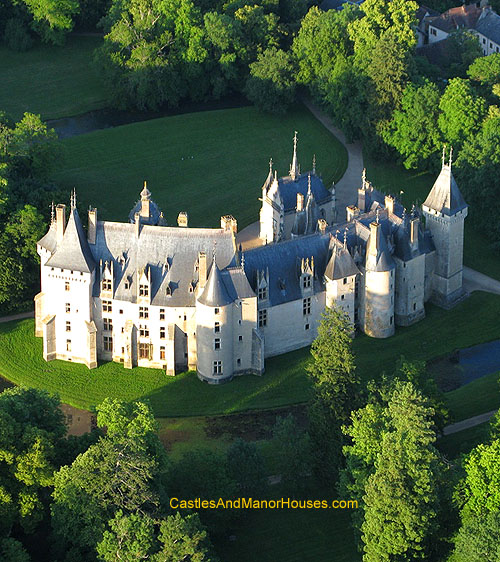 |
Château de Meillant Meillant, Cher, Centre, France
Château de Meillant is a Renaissance Château with elements dating from the thirteenth century.
It was Inscrit in 1926, and classé as a monument historique 1963 |
||||||||
 |
Roof Château de Ménessaire Ménessaire Côte-d'Or department Bourgogne France
The Château de Ménessaire was inscrit as a Monument historique in 1973
|
||||||||
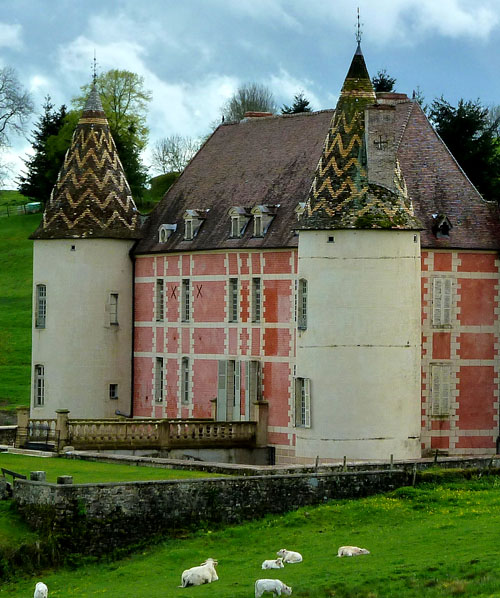 |
Château de Ménessaire Ménessaire Côte-d'Or department Bourgogne France
The Château de Ménessaire was inscrit as a Monument historique in 1973 |
||||||||
 |
Château de Menthon Saint-Bernard |
||||||||
 |
Château de Menthon Saint-Bernard above the lac d'Annecy, Haute-Savoie, France. |
||||||||
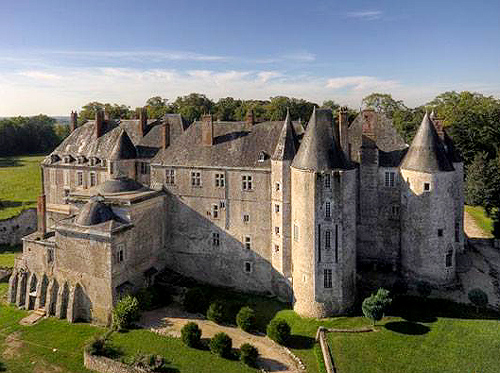 |
Château de Meung-sur-Loire Meung-sur-Loire , Loiret, France.
The Château de Meung-sur-Loire was the country residence of the Bishops of Orléans.
It was the site of the Battle of Meung-sur-Loire in 1429 and was destroyed and rebuilt several times. The oldest parts of this former episcopal palace date from the 12th century and were built by Manassès de Seignelay (bishop from 1207 to 1221). Still standing are the main rectangular plan building, flanked by three towers (the fourth having been destroyed.)
Beneath the castle are dungeons, a chapel and various medieval torture instruments. .In fiction, it was featured by Alexandre Dumas in The Three Musketeers as the village where d'Artagnan first encounters the villainous Comte de Rochefort.
It has been listed since 1988 as a monument historique by the French Ministry of Culture. |
||||||||
 |
Château de Monbazillac, Dordogne, Aquitane, France. |
||||||||
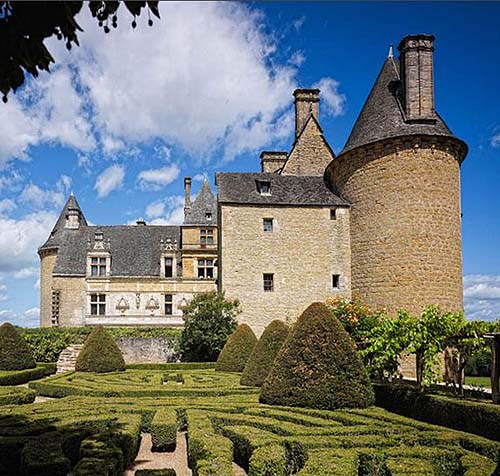 |
Montal Castle Saint-Jean-Lespinasse, Lot, Midi-Pyrénées, France
The Château de Montal, situated in the vallée de la Bave, is a Renaissance château with two wings flanking the courtyard. It has three round and one square tower.
It was classified as historical monument in 1909. |
||||||||
 |
Montrottier Castle, Lovagny, France
Montrottier Castle was built between the 13th and 15th century above the Gorges du Fier. It is a pentagonal fortress arranged around a cylindrical tower with battlements.
The oldest buildings including the round tower date from the 13th century, the others belong to the 15th. The Knights dwelling, the Earls'dwelling, the curtain wall and the keep date back to the Fifteenth century. |
||||||||
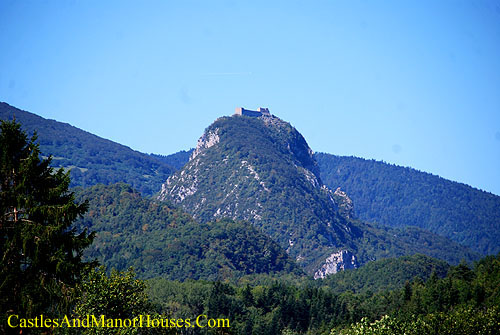 |
Montségur is a castle in the foothills of the Pyrenees, not far from Lavelanet, due South from Mirepoix in the Ariege, France.
Some 225 Cathars were burned alive at the Château de Montsegur in 1244 for the crime of not being Catholic. A Garrison of around 200 had defended them for 10 months against a French Crusader army of 5,000 - 10,000 before they surrendered. A monument on the site reads
EN CE LIEU LE 16 MARS 1244
IN THIS PLACE ON 16th MARCH 1244
There were so many victims that a special wooden pen had to be constructed, filled with heaps of brushwood, to burn them. A clerical chronicler preened that they passed directly from the flames of this world to the flames on the next. |
||||||||
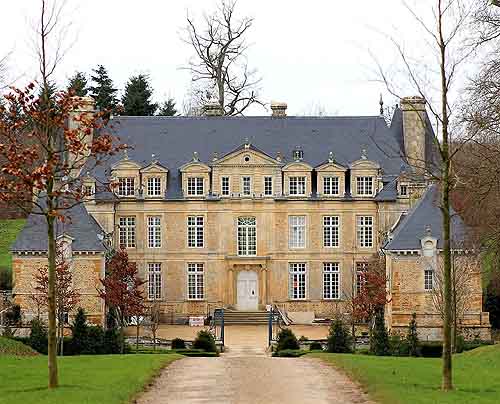 |
Château de la Motte Acqueville, l’Orne, Normandie, France |
||||||||
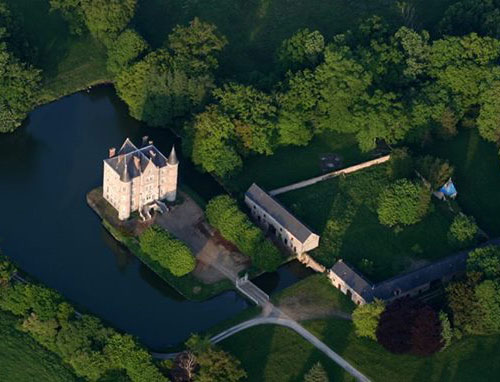 |
Château de la Motte Husson, Martigne Sur Mayenne 53470, France |
||||||||
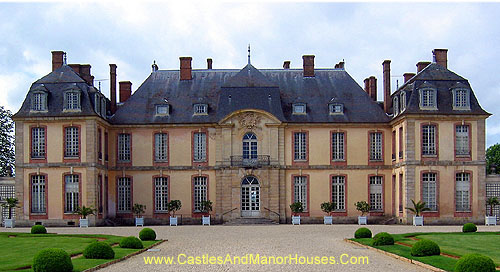 |
Château de La Motte-Tilly 10400 La Motte-Tilly Aube France
|
||||||||
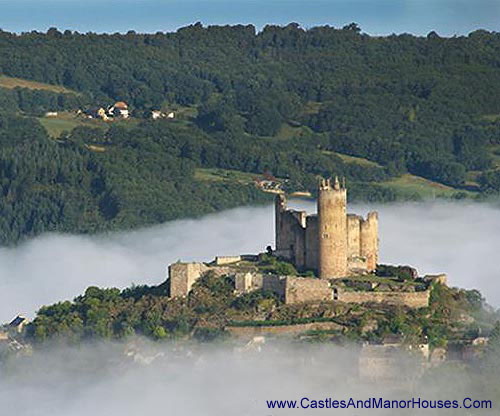 |
Château de Najac Najac, Aveyron, France.
The the royal fortress of Najac was built in 1253 on the orders of Alphonse de Poitiers, brother of Saint Louis, on the site of a square tower built in 1100 by Bertrand of St Gilles, son of Raymond IV, Count of Toulouse before the area was annexed by France.
The castle is built at the summit of a hill formed by a loop of the river.
The castle holds a world record for its 6.80 metre high archères (arrow loops), designed to allow use by three archers at the same time. A secret corridor, hidden within the walls, links the Romanesque tower to the chapel of the keep.
Najac has been near major events including, the Albigensian Crusade, the Hundred Years' War, the imprisonment of the Knights Templar, the peasants' revolts, and the French Revolution.
The castle has been listed as a monument historique by the French Ministry of Culture since 1925. |
||||||||
 |
Château de Najac Najac, Aveyron département, France.
The the royal fortress of Najac was built in 1253 on the orders of Alphonse de Poitiers, brother of Saint Louis, on the site of a square tower built in 1100 by Bertrand of St Gilles, son of Raymond IV, Count of Toulouse before the area was annexed by France.
The castle is built at the summit of a hill formed by a loop of the river.
The castle holds a world record for its 6.80 metre high archères (arrow loops), designed to allow use by three archers at the same time. A secret corridor, hidden within the walls, links the Romanesque tower to the chapel of the keep.
Najac has been near major events including, the Albigensian Crusade, the Hundred Years' War, the imprisonment of the Knights Templar, the peasants' revolts, and the French Revolution.
The castle has been listed as a monument historique by the French Ministry of Culture since 1925. |
||||||||
 |
Le château d'Ô Mortrée, Orne, Normandie, France.
An eleventh century fortress stood here. A later castle was constructed by Robert VII d'Ô (who was killed at Agincourt in 1415), and refurbished over the subsequent centuries.
The château is built on an island in the centre of a lake. The site, rectangular in shape with two towers, contains a courtyard with an upper gallery. It was classified as a monument historique in stages between 1964 and 1973 |
||||||||
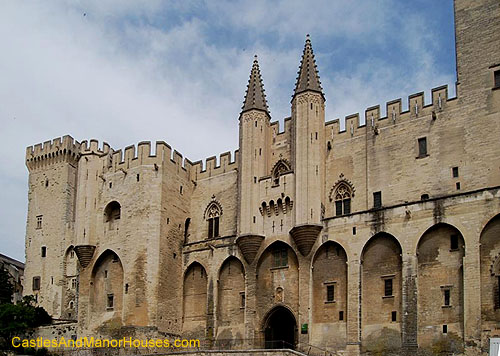 |
lo Palais dei Papas (in Occitan) / The Palais des Papes / Papal Palace Avignon, southern France.
The Papal Palace is one of the largest and most important medieval Gothic buildings in Europe.
Fortress and palace, it was the seat of Western Christianity during the 14th century. Six papal conclaves were held in the Palais.
The Palais is actually made up of two buildings: the old Palais of Benedict XII on the rock of Doms, and the new Palais of Clement VI, the most extravagant of the Avignon popes.The final combination the largest Gothic building of the Middle Ages, and one of the best examples of the International Gothic architectural style.
Since 1995 lo Palais dei Papas has been classified, along with the historic center of Avignon, as a UNESCO World Heritage Site. |
||||||||
 |
Château de Pau, Pau, Pyrénées-Atlantiques, France
The Château de Pau is a castle in the centre of Pau, the capital of Pyrénées-Atlantiques and Béarn. The château is located in the centre of Pau and dominates that quarter of the city
King Henry IV of France and Navarre was born here on December 13, 1553. The castle has a small garden that was tended by Marie Antoinette when she spent much of the summer in the city. The castle was used by Napoleon as a holiday home during his period of power.
The castle is classified as a Monument historique since 1840 by the French Ministry of Culture. The castle contains a collection of tapestries. |
||||||||
 |
Interior, Château de Pau, Pau, Pyrénées-Atlantiques, France.
The Château de Pau is a castle in the centre of Pau, the capital of Pyrénées-Atlantiques and Béarn. The château is located in the centre of Pau and dominates that quarter of the city
King Henry IV of France and Navarre was born here on December 13, 1553. The castle has a small garden that was tended by Marie Antoinette when she spent much of the summer in the city. The castle was used by Napoleon as a holiday home during his period of power.
The castle is classified as a Monument historique since 1840 by the French Ministry of Culture. The castle contains a collection of tapestries. |
||||||||
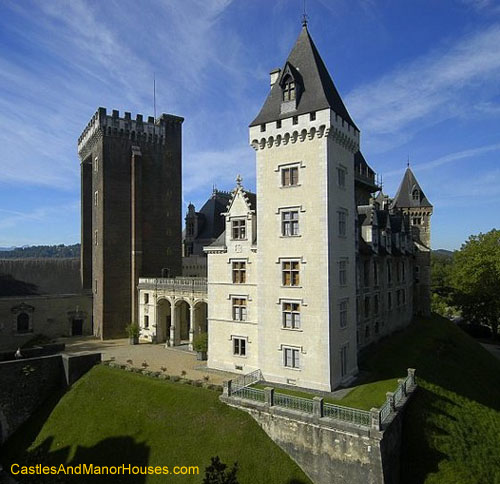 |
Musée National Château de Pau Pau, Pyrénées-Atlantiques, France
The Château de Pau is a castle in the centre of Pau, the capital of Pyrénées-Atlantiques and Béarn. The château is located in the centre of Pau and dominates that quarter of the city
King Henry IV of France and Navarre was born here on December 13, 1553. The castle has a small garden that was tended by Marie Antoinette when she spent much of the summer in the city. The castle was used by Napoleon as a holiday home during his period of power.
The castle is classified as a Monument historique since 1840 by the French Ministry of Culture. The castle now contains a collection of tapestries. |
||||||||
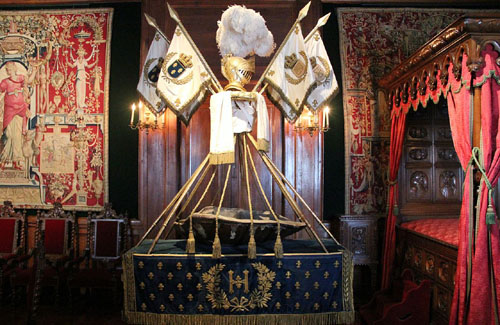 |
la carapace de tortue ayant servi de berceau au roi Henri IV
Interior, Château de Pau, Pau, Pyrénées-Atlantiques, France
The Château de Pau is a castle in the centre of Pau, the capital of Pyrénées-Atlantiques and Béarn. The château is located in the centre of Pau and dominates that quarter of the city
The castle is classified as a Monument historique since 1840 by the French Ministry of Culture. The castle contains a collection of tapestries. |
||||||||
 |
|||||||||
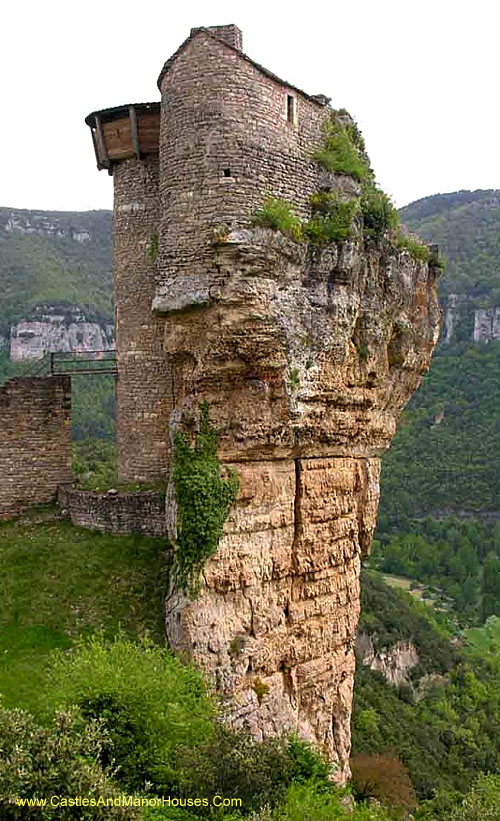 |
Château de Peyrelade in Rivière-sur-Tarn, Aveyron, France
A castle existed here at least as far back as the 12th century. It was the scene of incessant battles and sieges until 1633 when it was dismantled on the orders of Cardinal Richelieu. Thanks to its position controlling the entrance to the Gorges du Tarn, it was one of the most important castles in the Rouergue province
The name is derived from the occitan "Pèira Lada", meaning wide rock
Objects found on the site suggest it was inhabited in prehistoric times.
|
||||||||
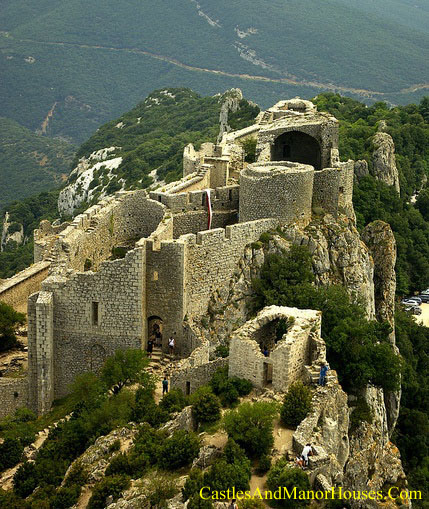 |
Peyrepertuse is a ruined fortress and one of the Cathar castles of the Languedoc located in the French Pyrénées in the commune of Duilhac-sous-Peyrepertuse, in the Aude département.
The castle ruins are impressive, set high on a defensive crag. From the approach road it is difficult to see where the rock stops and the castle starts. The castle was built in the 11th century on a site dominating the Corbières and the sea. The main part, resembles the prow of a ship, running along the top of an 800m (2,600 ft) high crag. It houses the church of Sainte-Marie and the governor’s residence.
The castle was associated with the Counts of Barcelona, later kings of Aragon. The name Peyrepetuse is derived from Pèirapertusa, Occitan, meaning Pierced Rock. The lower part of the castle was built on a strategic location by the kings of Aragon in the 11th Century and the higher part by the French King Louis IX later on, after the area was annexed to France. The two castles are linked together by a staircase. The castle lost importance as a strategic castle when the border between France and Spain was moved in 1659, causing the castle to be abandoned.
It was never subjected to attack during the Crusade against the Cathars. Nevertheless, it was surrendered to the French Crusaders 22nd of May 1217, reclaimed again as the balance of power changed. Guilhem de Peyrepertuse, was excommunicated in 1224 because of his refusal to submit to the Catholic Crusaders. He surrendered after the siege of Carcassonne (the Viscount of Carcassonne, Guilhem’s suzerain, having failed to retake Carcassonne from the French invaders in 1240). Peyrepertuse became a French possession the same year. In 1258, the Treaty of Corbeil defined the border between France and Aragon for four centuries : Peyrepertuse became a royal French fortress at the southern border of the French kingdom. At the end of the 13th century, it was a powerful stronghold with strong defences. |
||||||||
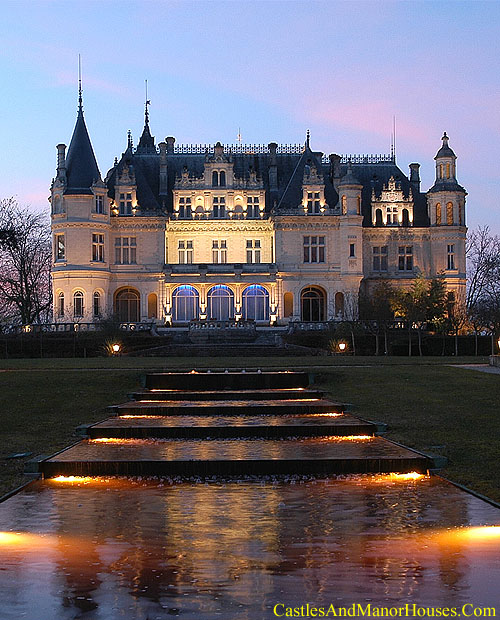 |
Château Pichon Parempuyre, Gironde, Aquitaine, France.
Le château Pichon was built in 1881 in a neo-rrenaissance style combining various elements of the châteaux de la Loire. It was inscribed in the list of monuments historiques in 2000. |
||||||||
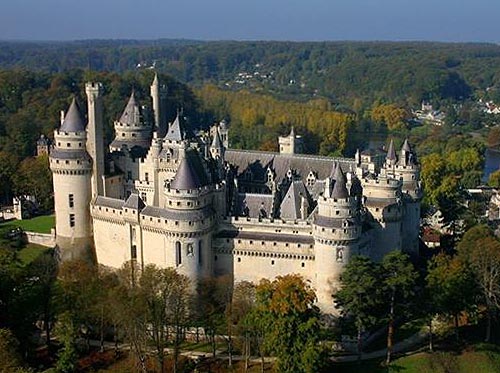 |
The Château de Pierrefonds, Pierrefonds, Oise département, Picardy, France.
The Château is on the southeast edge of the Forest of Compiègne, north east of Paris, between Villers-Cotterêts and Compiègne.
The Château de Pierrefonds still features most of the characteristics of defensive military architecture from the Middle Ages, though it underwent major restoration in the 19th century. |
||||||||
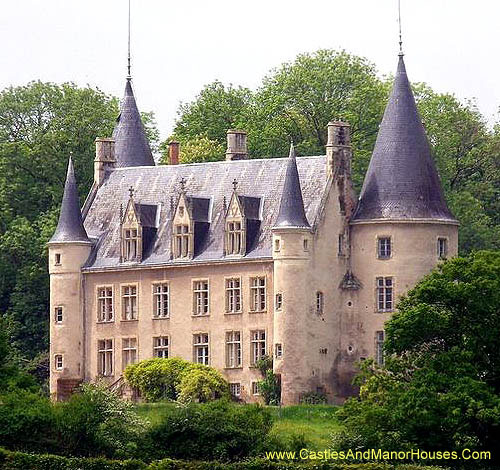 |
Chateau des Plantais Le Donjon, Allier, Auvergne, France
|
||||||||
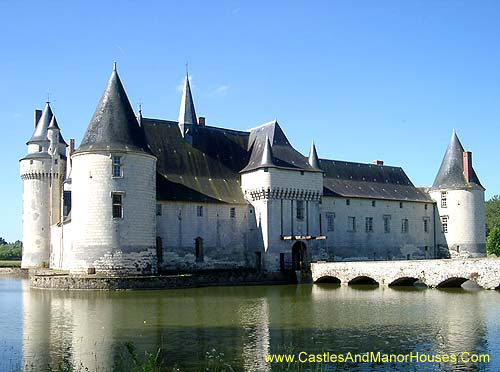 |
Château du Plessis-Bourré Écuillé, Maine-et-Loire department, France.
The Château du Plessis-Bourré is a château in the Loire Valley, built in less than 5 years from 1468 to 1472 by Finance Minister Jean Bourré, principal advisor to King Louis XI.
The château has not been modified externally since its construction and still has a fully working drawbridge
It was classified as a Monument historique in 1931.
The Château du Plessis-Bourré has been the location setting for numerous films. |
||||||||
 |
Château du Plessis-Bourré, Écuillé, Maine-et-Loire department, France.
The Château du Plessis-Bourré is a château in the Loire Valley, built in less than 5 years from 1468 to 1472 by Finance Minister Jean Bourré, principal advisor to King Louis XI.
The château has not been modified externally since its construction and still has a fully working drawbridge
It was classified as a Monument historique in 1931.
The Château du Plessis-Bourré has been the location setting for numerous films. |
||||||||
 |
Château du Plessis-Bourré, Écuillé, Maine-et-Loire department, France.
The Château du Plessis-Bourré is a château in the Loire Valley, built in less than 5 years from 1468 to 1472 by Finance Minister Jean Bourré, principal advisor to King Louis XI.
The château has not been modified externally since its construction and still has a fully working drawbridge
It was classified as a Monument historique in 1931.
The Château du Plessis-Bourré has been the location setting for numerous films. |
||||||||
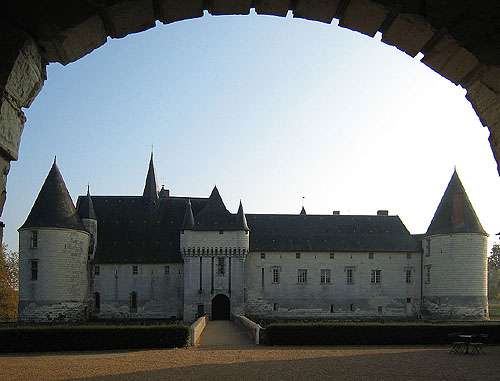 |
Château du Plessis-Bourré, Écuillé, Maine-et-Loire department, France.
The Château du Plessis-Bourré is a château in the Loire Valley, built in less than 5 years from 1468 to 1472 by Finance Minister Jean Bourré, principal advisor to King Louis XI.
The château has not been modified externally since its construction and still has a fully working drawbridge
It was classified as a Monument historique in 1931.
The Château du Plessis-Bourré has been the location setting for numerous films. |
||||||||
 |
Château du Plessis-Bourré, Écuillé, Maine-et-Loire department, France.
The Château du Plessis-Bourré is a château in the Loire Valley, built in less than 5 years from 1468 to 1472 by Finance Minister Jean Bourré, principal advisor to King Louis XI.
The château has not been modified externally since its construction and still has a fully working drawbridge
It was classified as a Monument historique in 1931.
The Château du Plessis-Bourré has been the location setting for numerous films. |
||||||||
 |
Château de Potelle (or Château de Potelles) Potelle, Nord, Nord-Pas-De-Calais, France.
The Château de Potelles was built around 1290 by Willes (Gilles) de Mortagne, seigneur de Potelles (the chapel retains a fragment of his tomb). The châtelet (entry gate) on the left in the photograph dates from the fourteenth century
Le château and its chapel (outside the moat) were incrit as monuments historiques in1944. |
||||||||
 |
Château de Potelle (or Château de Potelles) Potelle, Nord, Nord-Pas-De-Calais, France
The Château de Potelles was built around 1290 by Willes (Gilles) de Mortagne, seigneur de Potelles (the chapel retains a fragment of his tomb). The châtelet (entry gate) shown here dates from the fourteenth century
Le château and its chapel (outside the moat) were incrit as monuments historiques in1944.
|
||||||||
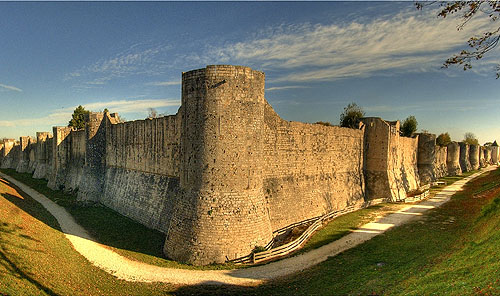 |
Medieval walled cité of Provins Provins Seine-et-Marne Île-de-France France.
Provins, a town of medieval fairs, became a UNESCO World Heritage Site in 2001 |
||||||||
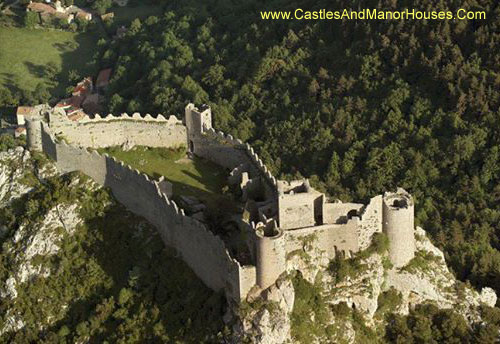 |
Château de Puilaurens Lapradelle-Puilaurens, Aude département, Laguedoc-Roussillon, France
The Château de Puilaurens (also Puylaurens; in Occitan: lo Castèl de Puèg-Laurenç) is one of the so-called Cathar castles in what is now the South of France.
The castle stands on a spur of rock above the Boulzane Valley and the villages of Lapradelle and Puilaurens.
from an unusual angle |
||||||||
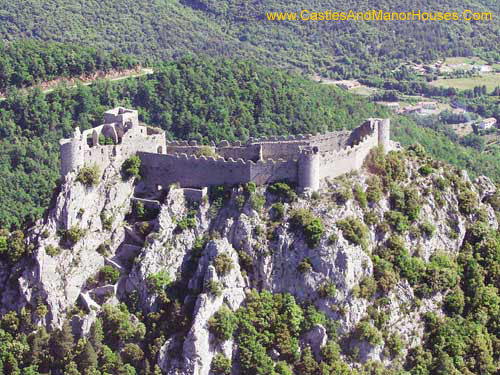 |
Château de Puilaurens Lapradelle-Puilaurens, Aude département, Laguedoc-Roussillon, France
The Château de Puilaurens (also Puylaurens; in Occitan: lo Castèl de Puèg-Laurenç) is one of the so-called Cathar castles in what is now the South of France.
The castle stands on a spur of rock above the Boulzane Valley and the villages of Lapradelle and Puilaurens. |
||||||||
 |
Château de Puymartin Marquay, Dordogne, FRANCE
The castle was built during the 13th century.
It is listed as a monument historique by the French Ministry of Culture. |
||||||||
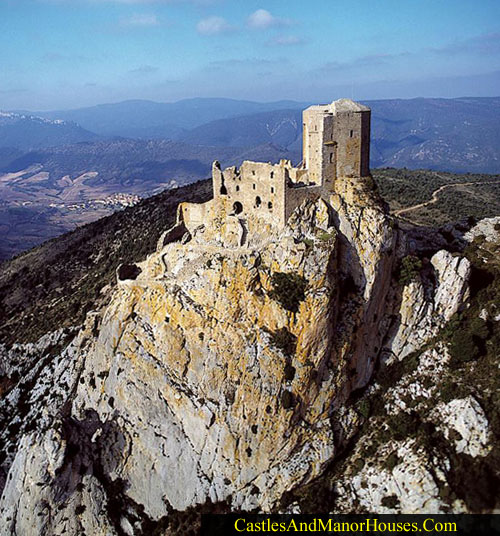 |
Quéribus Cucugnan, Aude, Languedoc, France.
The castle of Quéribus is high and isolated. It stands on top of the highest peak for miles around. From a distance it can be seen on the horizon, sticking up into the sky. Quéribus is sometimes regarded as the last Cathar stronghold. In a sense it was. After the fall of the Château of Montségur in 1244 surviving Cathars gathered together in the Corbières at this mountain-top stronghold on the border of Aragon (The present border between the Aude département and the Pyrénées-Orientales département). The Cathar deacon of the Razès, Benoît de Termes, took refuge here under Chabert de Barbaira, who was finally forced to surrender to Saint-Louis in 1255. The last stronghold to fall, eleven years after the fall of Montségur, Quéribus then became part of the French frontier defence system against Aragon.
This is one of the “Five Sons of Carcassonne”, along with Termes, Aguilar, Peyrepertuse and Puilaurens: five castles strategically placed to defend the new French border against the Spanish. It lost all strategic importance after the Treaty of the Pyrenees in 1659 when the border was moved even further south to its present position along the crest of the Pyrenees. |
||||||||
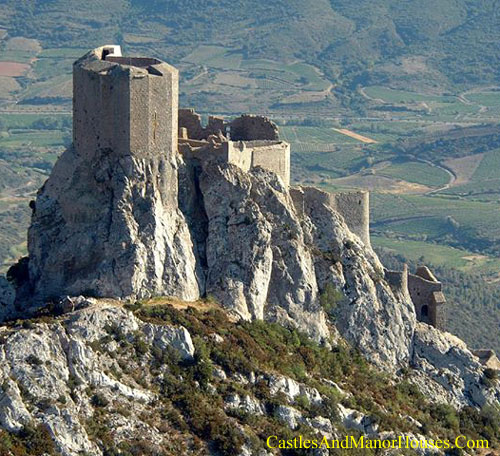 |
Quéribus Cucugnan, Aude, Languedoc, France.
The castle of Quéribus is high and isolated. It stands on top of the highest peak for miles around. From a distance it can be seen on the horizon, sticking up into the sky. Quéribus is sometimes regarded as the last Cathar stronghold. In a sense it was. After the fall of the Château of Montségur in 1244 surviving Cathars gathered together in the Corbières at this mountain-top stronghold on the border of Aragon (The present border between the Aude département and the Pyrénées-Orientales département). The Cathar deacon of the Razès, Benoît de Termes, took refuge here under Chabert de Barbaira, who was finally forced to surrender to Saint-Louis in 1255. The last stronghold to fall, eleven years after the fall of Montségur, Quéribus then became part of the French frontier defence system against Aragon.
This is one of the “Five Sons of Carcassonne”, along with Termes, Aguilar, Peyrepertuse and Puilaurens: five castles strategically placed to defend the new French border against the Spanish. It lost all strategic importance after the Treaty of the Pyrenees in 1659 when the border was moved even further south to its present position along the crest of the Pyrenees. |
||||||||
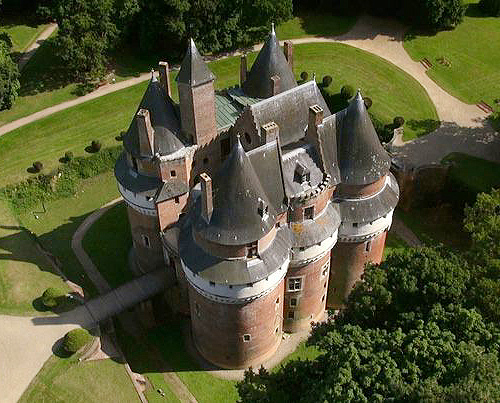 |
Château de Rambures Rambures, Somme, France.
The château was constructed in the the 15th century in the style of a late medieval military fortress. It was one of the first castles in Europe to be constructed almost exclusively in bricks.
The castle is set in a park, the Parc et Roseraie du Château de Rambures containing a rose garden and ancient trees.
It has been classified as a monument historique by the French Ministry of Culture since 1927. |
||||||||
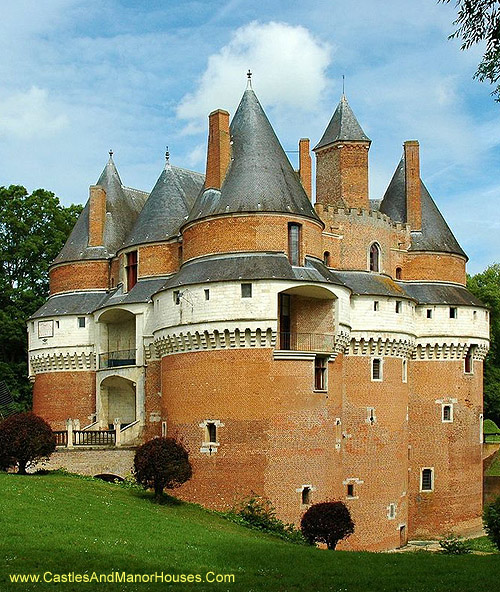 |
Château de Rambures Rambures, Somme, France.
The château was constructed in the the 15th century in the style of a late medieval military fortress. It was one of the first castles in Europe to be constructed almost exclusively in bricks.
The castle is set in a park, the Parc et Roseraie du Château de Rambures containing a rose garden and ancient trees.
It has been classified as a monument historique by the French Ministry of Culture since 1927. |
||||||||
 |
Château de Ratilly Treigny, Yone, France |
||||||||
 |
Château de Ratilly Treigny Yonne Bourgogne France |
||||||||
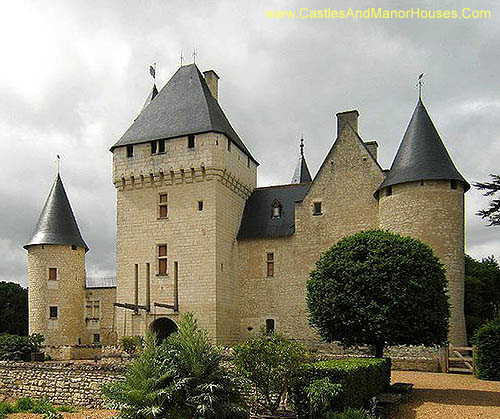 |
Château du Rivau 37120 Lémeré, Indre-et-Loire, Touraine, France.
In 1429, towards the end of the Hundred Years' War, before the siege of Orleans, Joan of Arc and her followers came to fetch horses from Le Rivau, renowned for the quality of the war horses that were raised there.
In Rabelais' Gargantua, it was given to captain Tolmere as a reward for his victories in the Picrocholean Wars.
|
||||||||
 |
Château de La Roche, Saint-Priest-la-Roche, Loire département, France
The castle stands on an island in the lake formed by the Villerest dam . It was built on a rocky platform overlooking the Loire river from a height of 30 metres. During the 1930s, the construction project for the Villerest dam by EDF condemned the château to disappear below the water. It was bought for a symbolic one franc by the commune. It is now situated on an island. |
||||||||
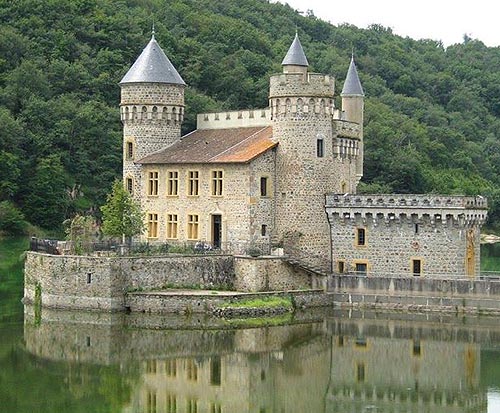 |
Château de La Roche, Saint-Priest-la-Roche, Loire département, France
The castle stands on an island in the lake formed by the Villerest dam . It was built on a rocky platform overlooking the Loire river from a height of 30 metres. During the 1930s, the construction project for the Villerest dam by EDF condemned the château to disappear below the water. It was bought for a symbolic one franc by the commune. It is now situated on an island. |
||||||||
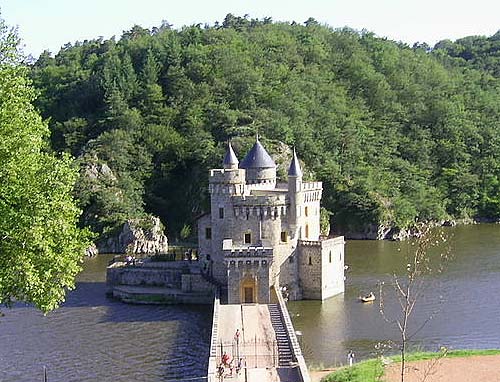 |
Château de La Roche Saint-Priest-la-Roche, Loire département, France
The castle stands on an island in the lake formed by the Villerest dam. It was built on a rocky platform overlooking the Loire river from a height of 30 metres. During the 1930s, the construction project for the Villerest dam by EDF condemned the château to disappear below the water. It was bought for a symbolic one franc by the commune, and is now situated on an island. |
||||||||
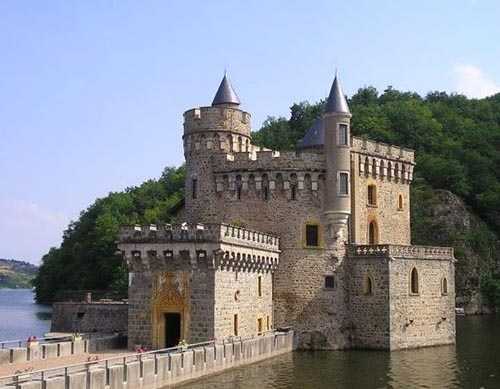 |
Château de La Roche, Saint-Priest-la-Roche, Loire département, France
The castle stands on an island in the lake formed by the Villerest dam . It was built on a rocky platform overlooking the Loire river from a height of 30 metres. During the 1930s, the construction project for the Villerest dam by EDF condemned the château to disappear below the water. It was bought for a symbolic one franc by the commune. It is now situated on an island. |
||||||||
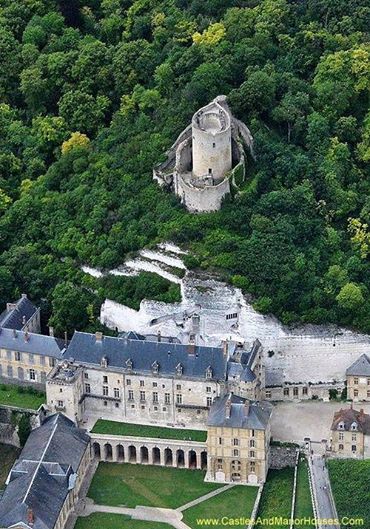 |
Châteaux de La Roche-Guyon La Roche-Guyon, Val-d'Oise, Île-de-France, France.
The original château fort was built on the hill here in the 12th century, controlling a crossing of the Seine, and a route to Normandy. The donjon (keep) can still be seen at the top of the photo. In the mid-13th century, a fortified manor house (the château-bas) was added below.
The lord here, Guy de La Roche fell at the Battle of Agincourt, and his widow was ousted from the Roche, after six months of siege.
The Château-bas was largely extended in the 18th century. During the Second World War, it was used as German Field Marshal Erwin Rommel's headquarters. |
||||||||
 |
|||||||||
 |
Château de la Roche-Jagu Ploëzal, Côtes-d'Armor, Bretagne, France. |
||||||||
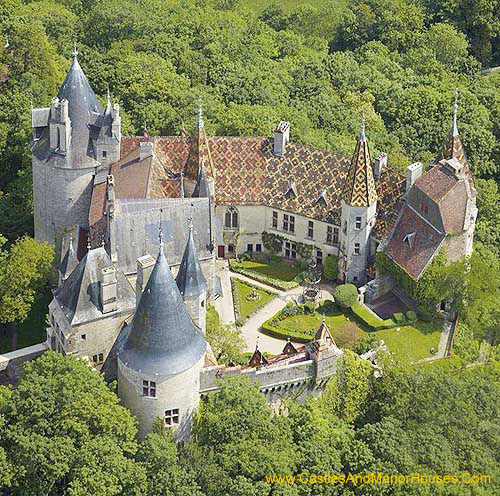 |
Château de la Rochepot La Rochepot, Côte d'Or département, Burgundy, France.
The Château de la Rochepot is a 13th-century castle, later converted into a château, on the N6 to the south west of the town of Beaune.
The castle was built in the 13th century on an outcrop of limestone to the north of the village of La Rochepot. As with many castles, it fell into ruin after the medieval period and was restored in the 19th century. It is open to visitors. |
||||||||
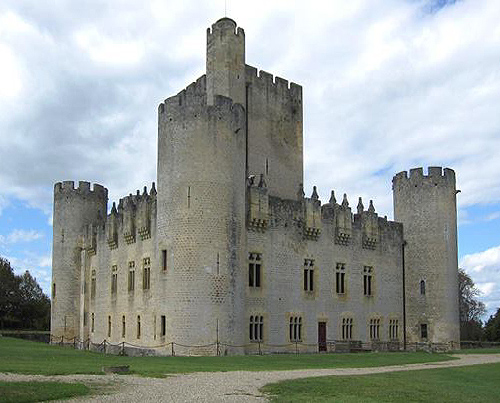 |
Château de Roquetaillade Mazères (near Bordeaux), Gironde, France.
Charlemagne, on his way to the Pyrenees with Roland, built the first fortification there. Of Charlemagne's castle, nothing remains but ruins. In 1306 (with a license to crenelate from the English King Edward I) Cardinal de la Mothe (nephew of Pope Clement V) built the present castle (le Château Neuf), square in plan with six towers and a central keep. This structure was restored by Viollet-le-Duc in the nineteenth century.
The château park includes remains of the medieval curtain wall with the barbican. The castle has been lived in by the same family for over 700 years.
The castle has served as a location for several films, including Fantômas contre Scotland Yard and Le Pacte des loups.
It was listed as a monument historique by the French Ministry of Culture in 1840. |
||||||||
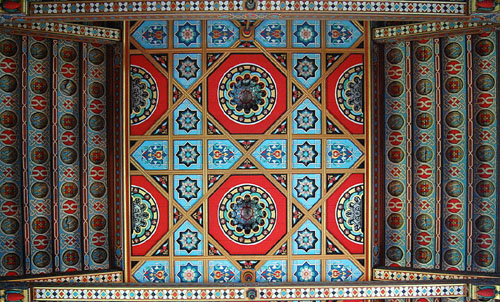 |
Chapel roof, The Château de Roquetaillade, Mazères (near Bordeaux), Gironde, France
Charlemagne, built the first fortification there on his way to the Pyrenees with Roland, but nothing remains of this structure except but imposing ruins.
In 1306, with the permission of the English King Edward I, Cardinal de la Mothe, nephew of Pope Clement V built a second fortress (le Château Neuf), square in plan with six towers and a central keep. This structure was restored by Viollet-le-Duc and one of his pupils, Duthoit, between 1850 and 1870. The extraordinary interior decorations, with its furnishings and paintings, were created by Viollet-le-Duc. . The castle has been lived in by the same family for over 700 years. Its park includes remains of the medieval curtain wall with the barbican, the Pesquey stream and its banks, the 19th century chalet, and the Crampet pigeoniere. |
||||||||
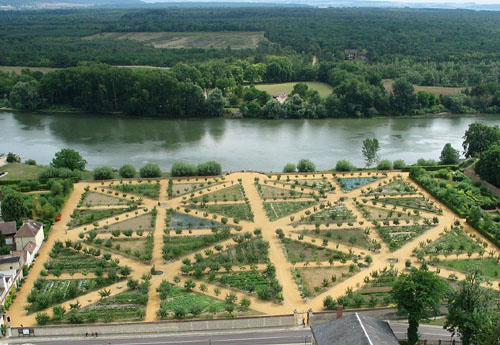 |
Le potager du château de La Roche-Guyon, La Roche-Guyon, Val-d'Oise department, Île-de-France, France.
A castle (still standing) was built in the 12th century, controlling a river crossing of the Seine
In the mid-13th century, a fortified manor house was added below. Guy de La Roche fell at the Battle of Agincourt, and his widow was ousted from the Roche, after six months of siege, in 1419; she preferred to depart rather than accept Henry Plantagenet as her overlord.
The Castle passed to the Liancourt family with the marriage of Roger de Plessis-Liancourt to the heiress Marie de La Roche; he was a childhood companion of Louis XIII, first gentleman of the Chambre du Roi and made a duke in 1643. He and his wife made great changes to the château-bas, opening windows in its structure and laying out the terrace to the east, partly cut into the mountain's steep slope. |
||||||||
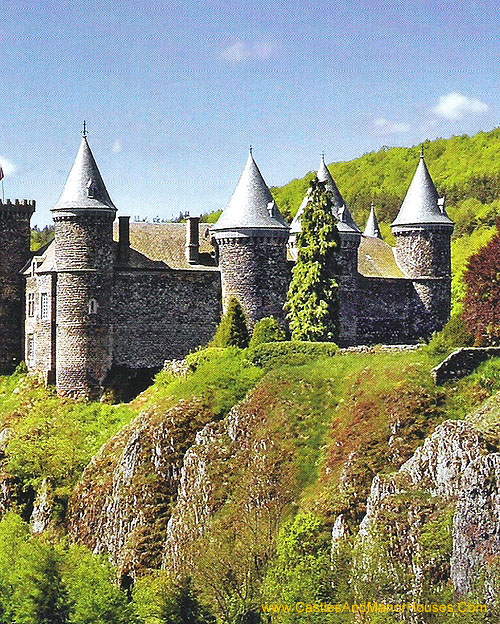 |
Château du Sailhant Andelat, Cantal, France |
||||||||
 |
Château St-Ferriol Saint-Ferriol, Aude, Languedoc-Roussillon, France.
The Château St-Ferriol, is a late-medieval / early Renaissance castle in the heart of Cathar Country, built by a family (de Planh in Occitan or de Plaigne in French) at least three members of which were besieged at Montsegur in 1244.
The photo shows the Château in the early morning mist. |
||||||||
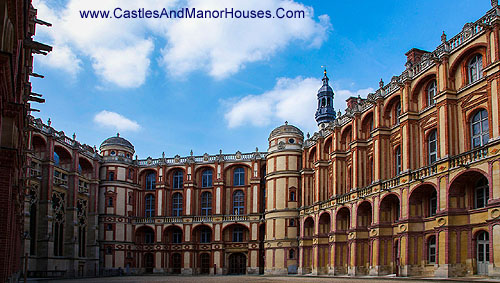 |
Château de Saint-Germain-en-Laye Saint-Germain-en-Laye, Yvelines, France
The Château de Saint-Germain-en-Laye a royal palace locatd eabout 19 km west of Paris. Today, it houses the Musée d'Archéologie Nationale (Frenc hNational Museum of Archaeology). |
||||||||
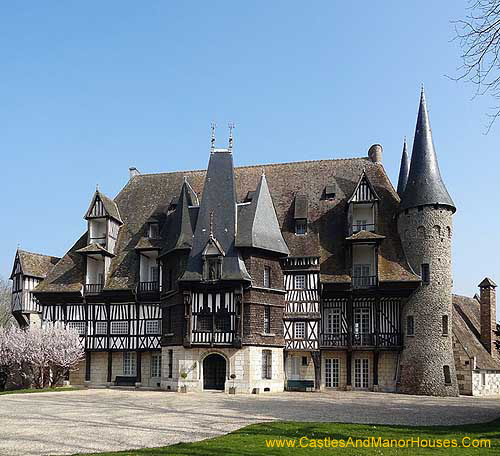 |
Château Saint-Hilaire, Sud de Louviers, Eure, Haute-Normandie, France |
||||||||
 |
Mont Saint-Michel located one kilometre off France's northwestern coast at the mouth of the Couesnon River near Avranches Normandy France |
||||||||
 |
Mont Saint-Michel 50170 Le Mont-Saint-Michel Normandy France.
Mont Saint-Michel is an island commune approximately one kilometre off France's northwestern coast, at the mouth of the Couesnon River near Avranches. |
||||||||
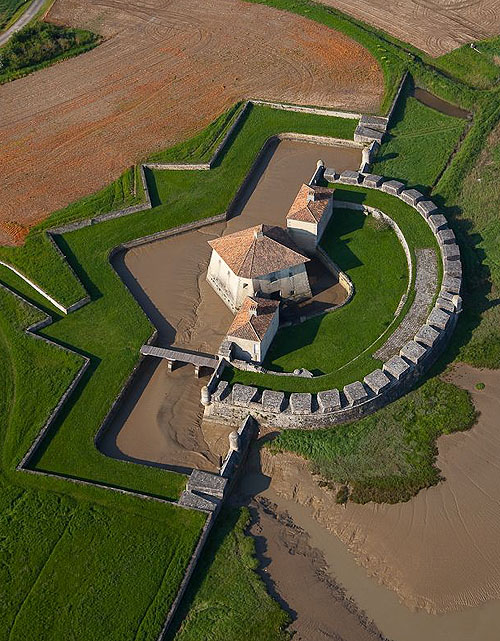 |
Saint-Nazaire-sur-Charente Charente-Maritime, France |
||||||||
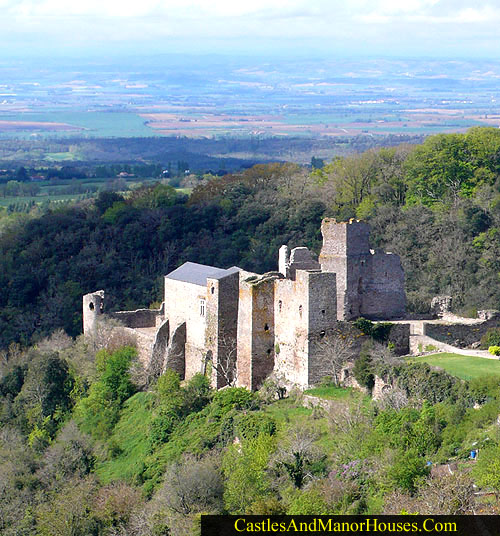 |
Château de Saissac Saissac, Aude département, Languedoc, France.
The Château de Saissac is a ruined Cathar Castle on a promontory at the southernmost tip of the commune of Saissac, north-west of Carcassonne. Saissac is mentioned in a legal document from the Abbey of Montolieu in 958, and again in a text of 960. The village is typical of the Black Mountains and is built between the ravines of the rivers Aiguebelle and Vernassonne, just above their confluence, overlooking the plain of Carcassonne at an important strategic position at the entry of the Black Mountains (Montagnes Noires). Vestiges of the fourteenth century city walls (enceinte) are still visible around the ancient village. |
||||||||
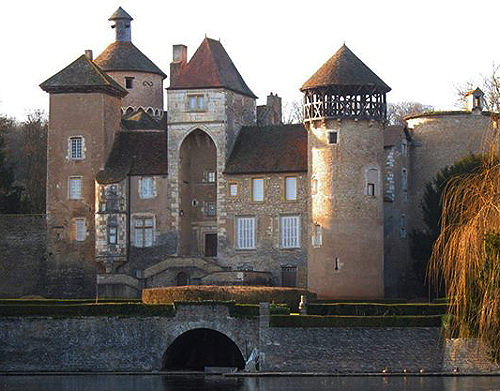 |
Château de Sercy, Sercy, Saône-et-Loire, Bourgogne, France
The Château de Sercy is a XII century castle modified in the XVI century.
It is classed as a French monument historique. |
||||||||
 |
Château de Sceaux Sceaux, Hauts-de-Seine, France
The Château de Sceaux is a grand country house not far from Paris. Located in a park laid out by André Le Nôtre, it houses the Musée de l’Île-de-France, a museum of local history.
The former château was built for Jean-Baptiste Colbert, Louis XIV's minister of finance, who purchased the domaine in 1670.
The present château, designed to evoke the style of Louis XIII, dates from the Second Empire. Some of Colbert's outbuildings remain, as does the basis of the garden layout.
|
||||||||
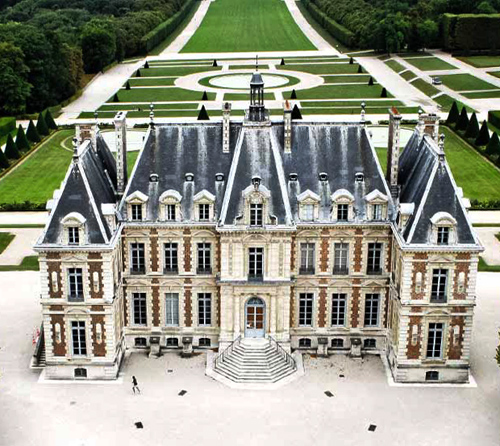 |
Château de Sceaux Sceaux, Hauts-de-Seine, France
The Château de Sceaux is a grand country house in Sceaux, Hauts-de-Seine, not far from Paris, France.
Located in a park laid out by André Le Nôtre, it houses the Musée de l’Île-de-France, a museum of local history.
The former château was built for Jean-Baptiste Colbert, Louis XIV's minister of finance, who purchased the domaine in 1670.
The present château, designed to evoke the style of Louis XIII, dates from the Second Empire. Some of Colbert's outbuildings remain, and the basis of the garden layout.
|
||||||||
 |
|||||||||
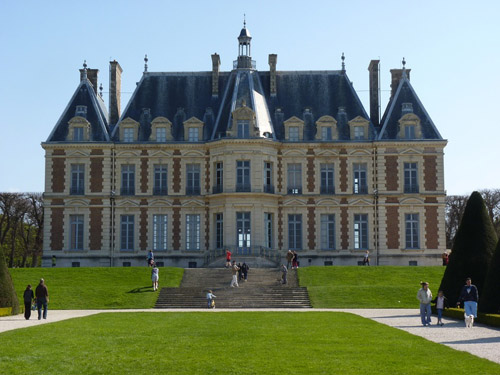 |
Château de Sceaux, Sceaux, Hauts-de-Seine, France
The Château de Sceaux is a grand country house in Sceaux, Hauts-de-Seine, not far from Paris, France.
Located in a park laid out by André Le Nôtre, it houses the Musée de l’Île-de-France, a museum of local history.
The former château was built for Jean-Baptiste Colbert, Louis XIV's minister of finance, who purchased the domaine in 1670.
The present château, designed to evoke the style of Louis XIII, dates from the Second Empire. Some of Colbert's outbuildings remain, and the basis of the garden layout.
|
||||||||
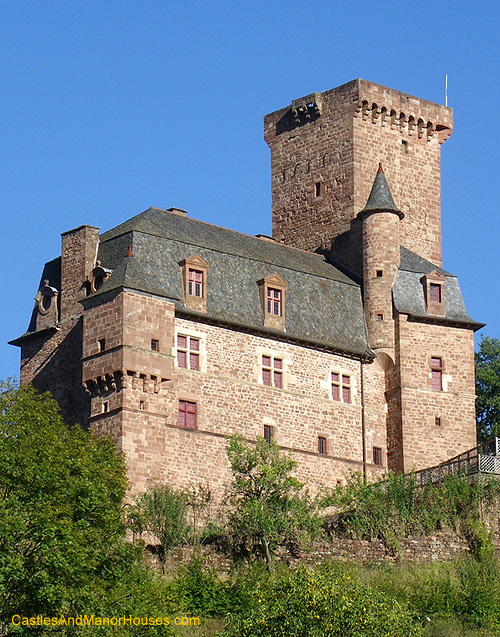 |
Château de la Servayrie, Mouret, Marcillac-Vallon, Rodez, Aveyron, Midi-Pyrénées, France. |
||||||||
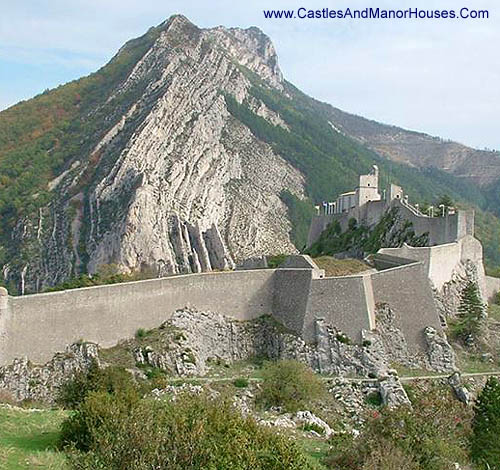 |
Citadelle de Sisteron Alpes-de-Haute-Provence, Provence-Alpes-Côte d'Azur, France.
Sisteron has been inhabited for 4000 years. The Romans used the route through it. It was later ravaged by the Saracens. It was first fortified by the Counts of Forcalquier in the 11th century and became the northern boundary of the domain of the Counts of Provence. In 1483 during the reign of Louis XI, Sisteron was annexed by the kingdom of France.
Between 1562 and 1594 the town and its citadelle was fought over by Protestants and Catholics including two sieges. During this time the walls of the town were built. |
||||||||
 |
Solidor Tower 35400 St-Malo Brittany France
Solidor Tower is.located in the estuary of the river Rance in the former city of Saint-Servan, which merged with Saint-Malo in 1967 |
||||||||
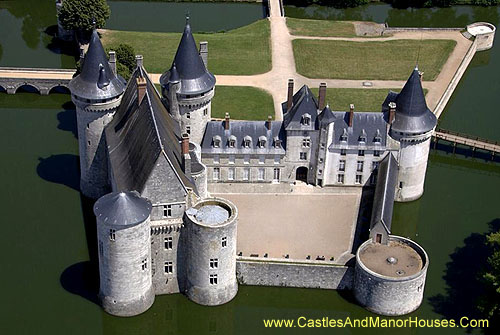 |
Château de Sully-sur-Loire Sully-sur-Loire Loiret France. |
||||||||
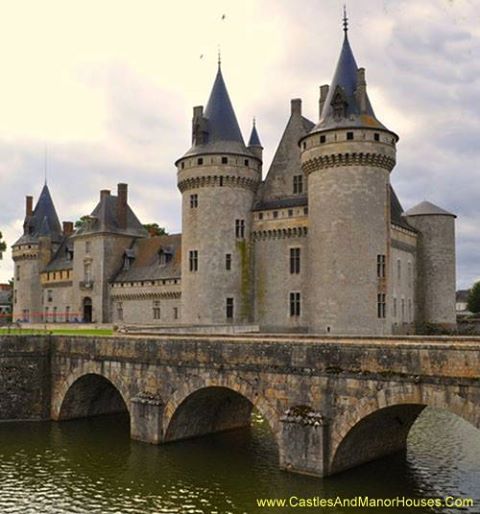 |
Château de Sully-sur-Loire Sully-sur-Loire, Loiret, France.
The Château de Sully-sur-Loire is a a château-fort, a true castle, built to control one of the few sites where the Loire can be forded. It has been converted to a palatial seigneurial residence.
The Château was the seat of the ducs de Sully. In 1716 and again in 1719 the château offered refuge to Voltaire after he had been exiled from Paris for affronting the Régent, Philippe, duc d'Orléans.
The Château remained in the possession of the Sully family until 1962 when it became the property of the Département du Loiret. The Château de Sully-sur-Loire is listed as a monument historique by the French Ministry of Culture. |
||||||||
 |
Château de Suscinio (or de Susinio) Sarzeau, Morbihan, Brittany, France
Built in the late Middle Ages as the residence of the Dukes of Brittany.
The Château de Suscinio dates from the beginning of the 13th century. It was enlarged at the end of 14th century, when the heirs of the duchy were fighting to keep their possessions (Brittany was not annexed by France until 1514).
From 1471 to 1483, the castle was home to Jasper Tudor, Henry Tudor (later King Henry VII of England), and the core of their group of exiled Lancastrians, numbering about 500 by 1483. Duke Francis II supported this group of exiles against Plantagenet demands for their surrender. |
||||||||
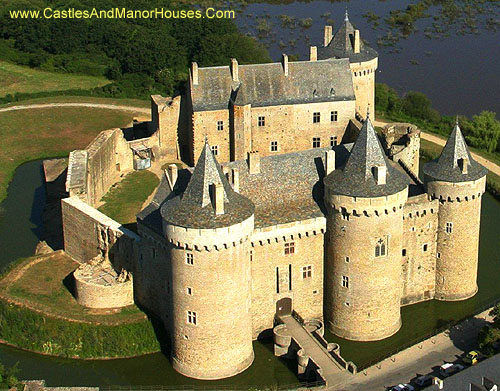 |
Château de Suscinio (or de Susinio) Sarzeau, Morbihan, Brittany, France
Built in the late Middle Ages as the residence of the Dukes of Brittany.
The Château de Suscinio dates from the beginning of the 13th century. It was enlarged at the end of 14th century, when the heirs of the duchy were fighting to keep their possessions (Brittany was not annexed by France until 1514).
From 1471 to 1483, the castle was home to Jasper Tudor, Henry Tudor (later King Henry VII of England), and the core of their group of exiled Lancastrians, numbering about 500 by 1483. Duke Francis II supported this group of exiles against Plantagenet demands for their surrender. |
||||||||
 |
Château de Suscinio (or de Susinio) Sarzeau, Morbihan, Brittany, France
Built in the late Middle Ages as the residence of the Dukes of Brittany.
The Château de Suscinio dates from the beginning of the 13th century. It was enlarged at the end of 14th century, when the heirs of the duchy were fighting to keep their possessions (Brittany was not annexed by France until 1514).
From 1471 to 1483, the castle was home to Jasper Tudor, Henry Tudor (later King Henry VII of England), and the core of their group of exiled Lancastrians, numbering about 500 by 1483. Duke Francis II supported this group of exiles against Plantagenet demands for their surrender. |
||||||||
 |
Château de Suscinio (or de Susinio) Sarzeau, Morbihan, Brittany, France
Built in the late Middle Ages as the residence of the Dukes of Brittany.
The Château de Suscinio dates from the beginning of the 13th century. It was enlarged at the end of 14th century, when the heirs of the duchy were fighting to keep their possessions (Brittany was not annexed by France until 1514).
From 1471 to 1483, the castle was home to Jasper Tudor, Henry Tudor (later King Henry VII of England), and the core of their group of exiled Lancastrians, numbering about 500, by 1483. Duke Francis II supported this group of exiles against Plantagenet demands for their surrender. |
||||||||
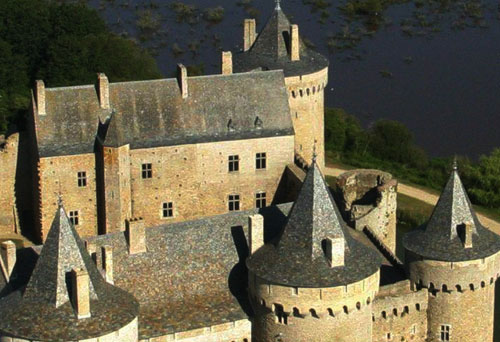 |
Château de Suscinio (or de Susinio) Sarzeau, Morbihan, Brittany, France
Built in the late Middle Ages as the residence of the Dukes of Brittany.
The Château de Suscinio dates from the beginning of the 13th century. It was enlarged at the end of 14th century, when the heirs of the duchy were fighting to keep their possessions (Brittany was not annexed by France until 1514).
From 1471 to 1483, the castle was home to Jasper Tudor, Henry Tudor (later King Henry VII of England), and the core of their group of exiled Lancastrians, numbering about 500 by 1483. Duke Francis II supported this group of exiles against Plantagenet demands for their surrender. |
||||||||
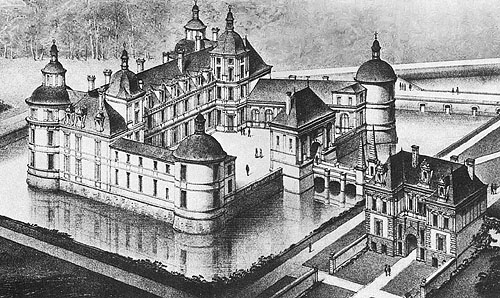 |
Château de Tanlay Tanlay Yonne Burgundy France |
||||||||
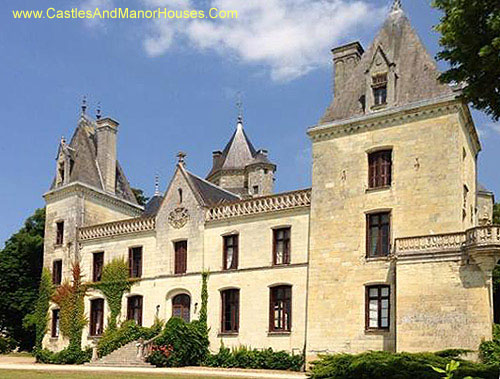 |
The Château de Ternay Loire Valley, Poitou-Charentes, France.
The Château de Ternay was built by the Aviau de Ternay family. The present château, on twelfth-century foundations, is the result of building campaigns from the fifteenth to the seventeenth centuries.
It has been listed as a Monument historique since 1996. It is still the seat of the comte de Ternay. Today the château is open for tours and overnight guests. |
||||||||
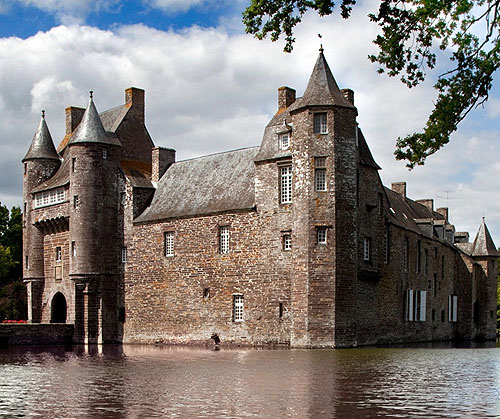 |
The Château de Trécesson near the Paimpont forest Campénéac Morbihan Brittany France |
||||||||
 |
The Palais des Tuileries, Paris, France
This illustration shows the Palais des Tuileries in the 17th century
The Tuileries Palace was a royal palace in Paris which stood on the right bank of the River Seine. It was the usual Parisian residence of most French monarchs, from Henry IV to Napoleon III. Iit was destroyed in the upheaval of the Paris Commune in 1871.
Built in 1564, it was gradually extended until it closed off the western end of the Louvre courtyard and displayed a façade of 266 metres. Since the destruction of the Tuileries, the Louvre courtyard has remained open and the site is now the location of the eastern end of the Tuileries Garden, forming an elevated terrace between the Place du Carrousel and the gardens proper. |
||||||||
 |
The Château d'Ussé Rigny-Ussé Indre-et-Loire France |
||||||||
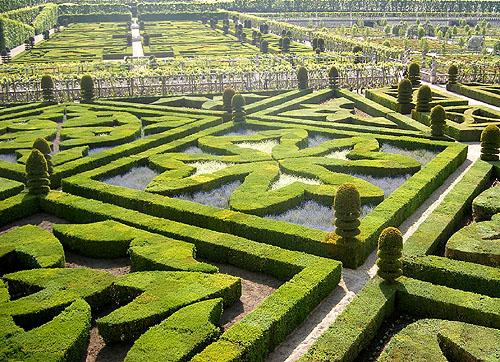 |
Château d'Ussé Rigny-Ussé, Indre-et-Loire, France.
This stronghold at the edge of the Chinon forest overlooking the Indre Valley was first fortified in the eleventh century by the Norman seigneur of Ussé, Gueldin de Saumur, who surrounded the fort with a palisade on a high terrace. The site passed to the Comte de Blois, who rebuilt in stone.
It was completed in 1612. The flamboyant Gothic style is mixed with new Renaissance motifs, and began the process of rebuilding the fifteenth-century château that resulted in the sixteenth-seventeenth century aspect of the structure to be seen today.
It is classified as a monument historique since 1931 by the French Ministry of Culture. |
||||||||
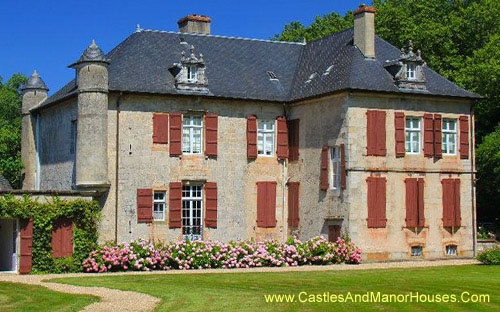 |
Château d'Urtubie Urrugne, Pyrénées-Atlantiques, Aquitaine, France.
A castle here was built in the fourteenth century. It has been owned by the same family since its construction in 1341. It was enlarged in the sixteenth and eighteenth century. King Louis XI stayed here in 1463 and Louis XIV raised the estate to Viscountcy in 1654. Monument Historique since 1974. Now owned by the Comte de Coral. |
||||||||
 |
château de Val, Les Fontilles, 15270 Lanobre, Cantal, France
The Château is located on the shore of the Lake Bort-les-Orgues
It is classé as a Monument historique |
||||||||
 |
Château de Val Les Fontilles, 15270 Lanobre, Cantal, France
The Château is located on the shore of the Lake Bort-les-Orgues
It is classé as a Monument historique |
||||||||
 |
Château de Val Les Fontilles, 15270 Lanobre, Cantal, France
The Château is located on the shore of the Lake Bort-les-Orgues.
It is classé as a Monument historique. |
||||||||
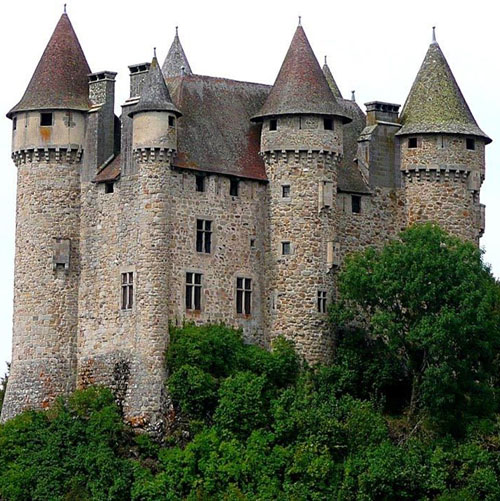 |
Le Château de Val, Les Fontilles, 15270 Lanobre, Cantal, France |
||||||||
 |
château de Val, Les Fontilles, 15270 Lanobre, Cantal, France
The Château is located on the shore of the Lake Bort-les-Orgues
It is classé as a Monument historique |
||||||||
 |
Château de Vaux-le-Vicomte Maincy near Melun Seine-et-Marne France |
||||||||
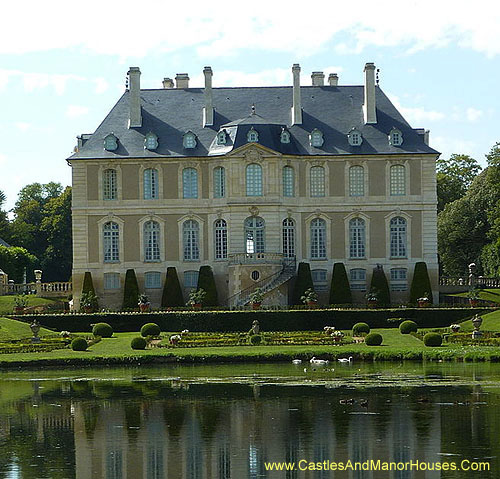 |
The Château de Vendeuvre, Vendeuvre, near to Lisieux in Normandy, France
Classed as a Historic Monument, Vendeuvre is a prototypical aristocratic Norman country house.
It was opened to the public in 1983. |
||||||||
 |
Château de Vendeuvre Vendeuvre, near to Lisieux in Normandy, France.
The Château de Vendeuvre is a typical aristocratic Norman country house. It was built between 1750 and 1752. The château is famous for its eighteenth-century interiors. Formal gardens have been created by the present Count of Vendeuvre with a strictly symmetrical classical lay-out. The gardens contain two mazes, known as the ‘regular maze’ and the ‘field maze’.
An Ice House here was built as a pyramid, to store winter ice for use in the summer. It has a north-facing door to better help preserve the low temperature within. The Château de Vendeuvre is classed as an Historic Monument both for its exterior and interior. It was opened to the public in 1983. |
||||||||
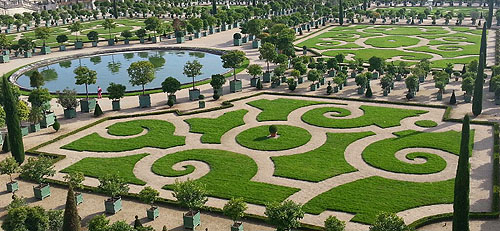 |
Gardens Palace of Versailles Place d'Armes 78000 Versailles Île-de-France France |
||||||||
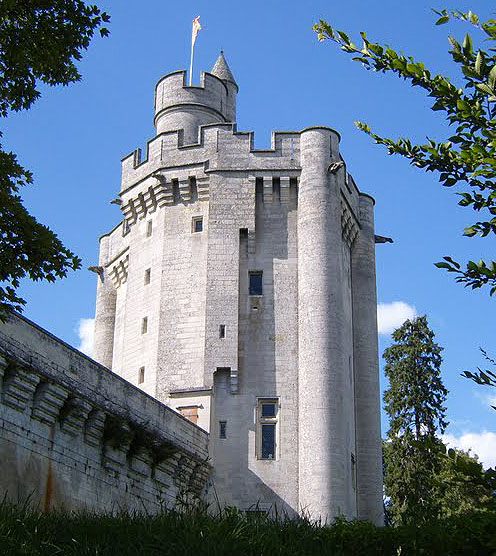
|
Donjon de Vez, Oise, Picardy, France
The Donjon (keep) is part of the Château de Vez.
|
||||||||
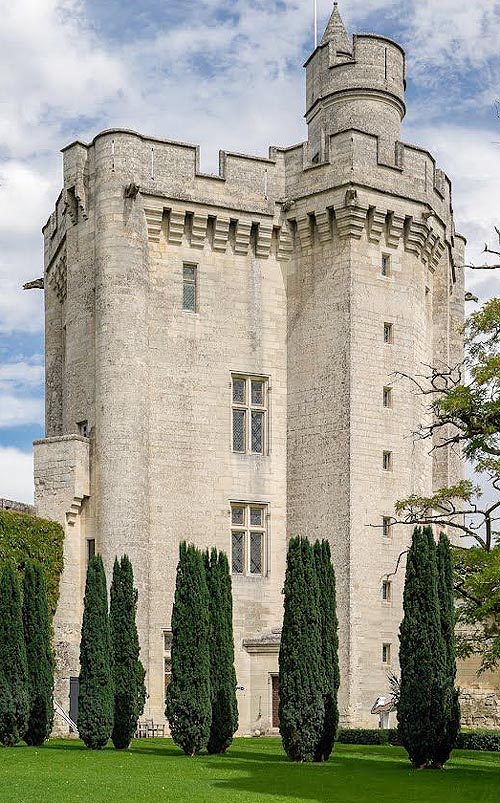 |
Donjon de Vez, Oise, Picardy, France
The Donjon (keep) is part of the Château de Vez. |
||||||||
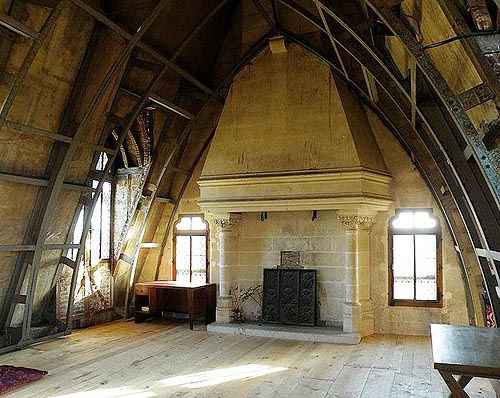 |
Interior, Donjon de Vez, Oise, Picardy, France
The Donjon (keep) is part of the Château de Vez.
|
||||||||
 |
Château de Vigny Vigny Val-d'Oise Île-de-France France |
||||||||
 |
Parterre The Château de Villandry Villandry Indre-et-Loire France. |
||||||||
 |
Parterre The Château de Villandry Villandry Indre-et-Loire France. |
||||||||
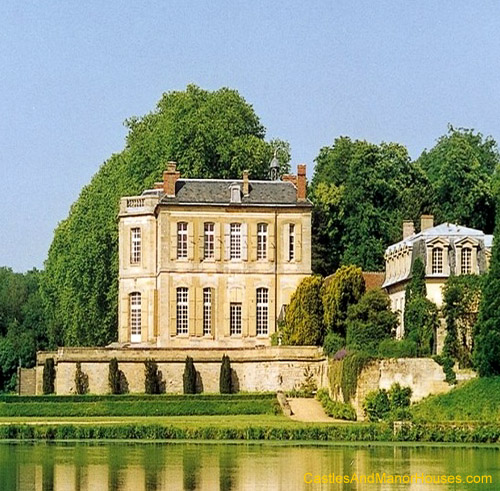 |
Side view Château Villette Condécourt, France
Château Villette is a manor house hotel located 40 minutes away from Paris. It has numerous outbuildings including a chapel and adjacent reception room, horse stable and greenhouse.
More than 185 acres (0.75 km2) of garden were designed by Le Nôtre and spread out behind the château in the central axis with two rectangular lakes filled with birds and fish,
In the film Da Vinci Code, it iwas the home of Sir Leigh Teabing. |
||||||||
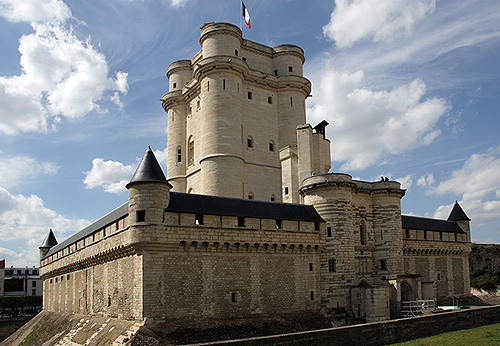 |
Château de Vincennes Avenue de Paris, 94300 Vincennes, Val-de-Marne France
The Château de Vincennes is a massive 14th and 17th century French royal castle now in a a suburb of the metropolis.
This donjon, 52 meters high, was the tallest medieval fortified structure of Europe. |
||||||||
 |
|||||||||
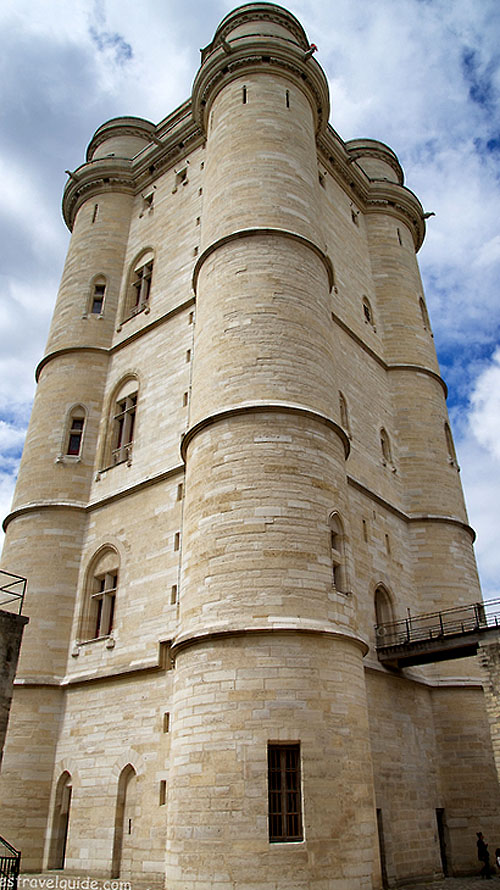 |
Château de Vincennes Avenue de Paris 94300 Vincennes, Val-de-Marne France
The Château de Vincennes is a massive 14th and 17th century French royal castle now a suburb of the metropolis.
This donjon, 52 meters high, was the tallest medieval fortified structure of Europe. |
||||||||
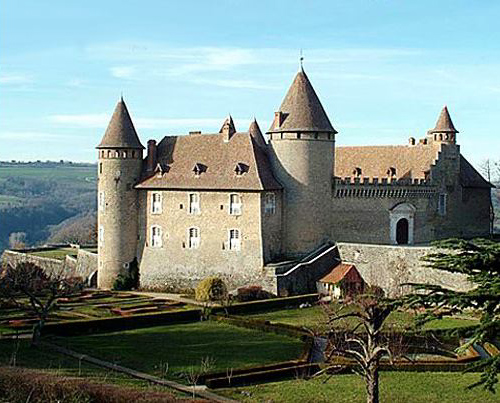 |
Château de Virieu 38730 Virieu, Isère, France
Le château de Virieu was built in stone around 1010,
It ihas been classified as a French monument historique since1990. |
||||||||
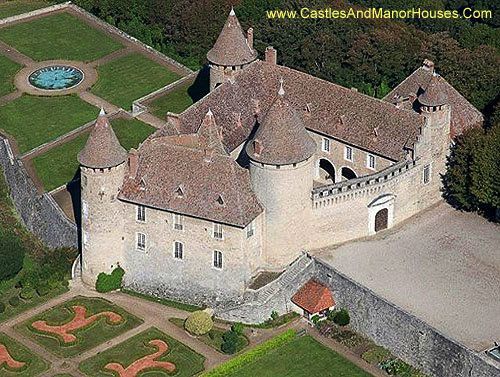 |
Château de Virieu, 38730 Virieu, Isère, France
Le château de Virieu was built in stone around 1010,
It ihas been classified as a French monument historique since1990. |
||||||||
 |
Château de Vitré Vitré, Ille-et-Vilaine, France.
The first stone castle was built by the baron Robert I of Vitré at the end of the 11th century. The defensive site chosen, a rocky promontory, dominated the valley of the Vilaine. A Romanesque style doorway still survives from this building. During the first half of the 13th century, baron André III, rebuilt it in its present triangular form, following the contours of the rocks, surrounded with dry moats.
The castle was bought by the town in the 1820 for 8500 francs. In 1872, it was one of the first castles in France to be classified as a monument historique (historic monument) and restored from 1875. |
||||||||
 |
Château de Vitré Vitré, Ille-et-Vilaine, France. |
||||||||
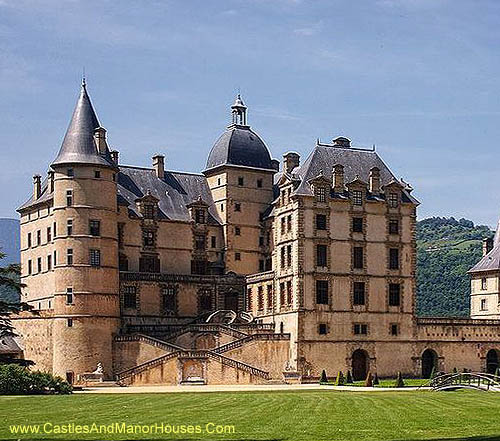 |
Château of Vizille 38220 Vizille, Isere, Region Rhone-Alpes, France.
The Château de Vizille, near Grenoble, is one of the most prestigious and important castles of the Dauphiné. |
||||||||
|
|
|
|
|||||||
|
|
|||||||||
| :::: Link to us :::: Castle and Manor Houses Resources ::: © C&MH 2010-2014 ::: contact@castlesandmanorhouses.com ::: Advertising ::: |
